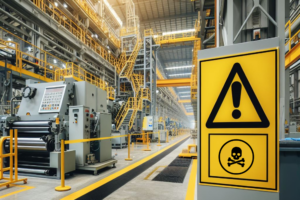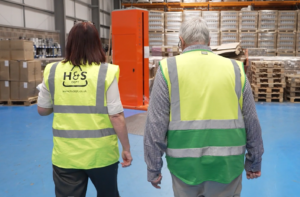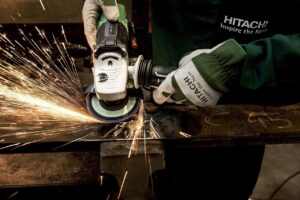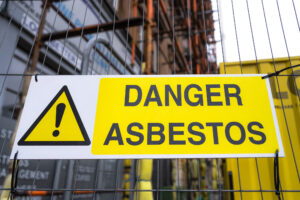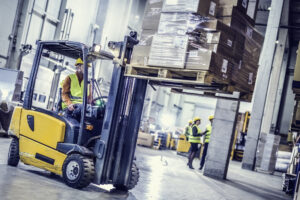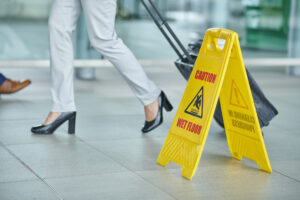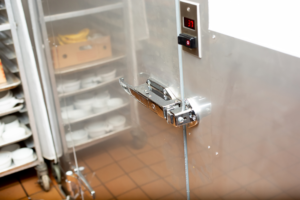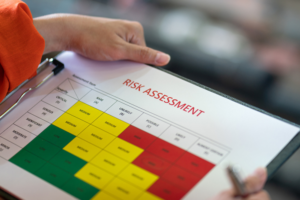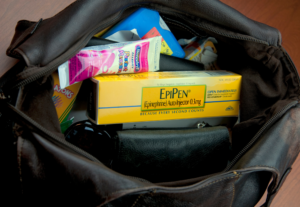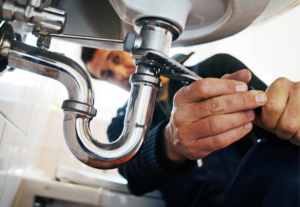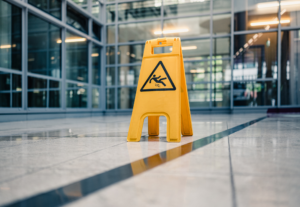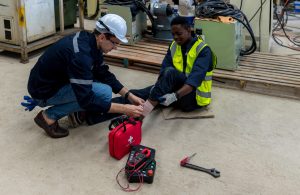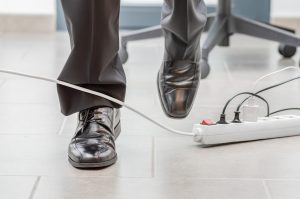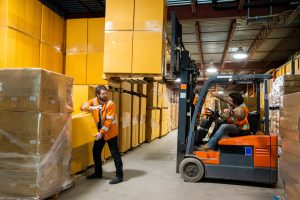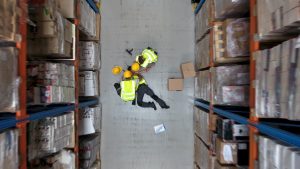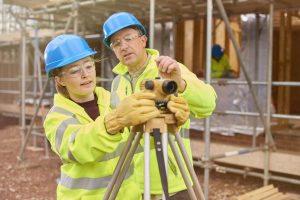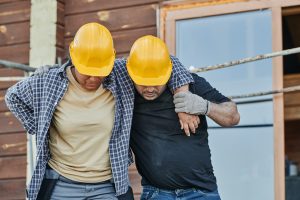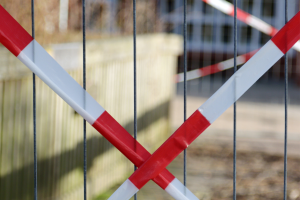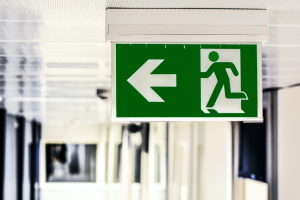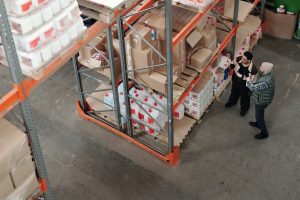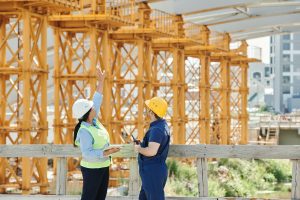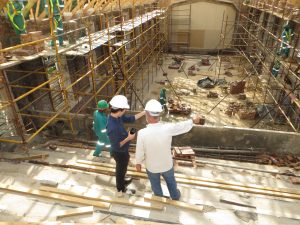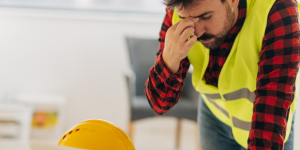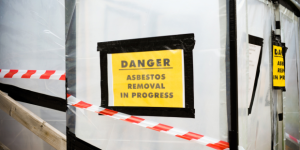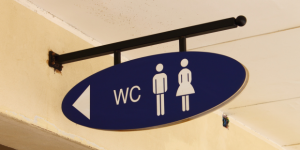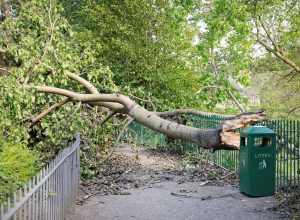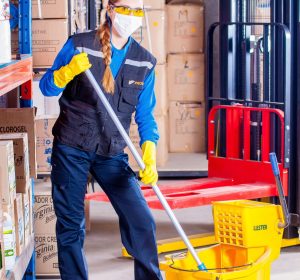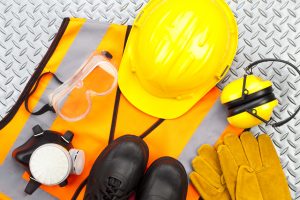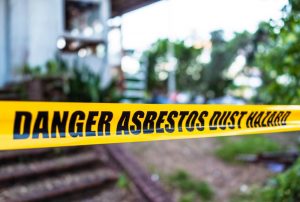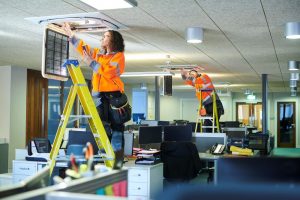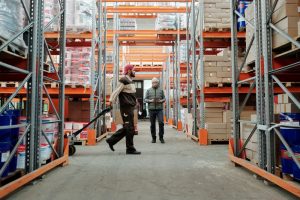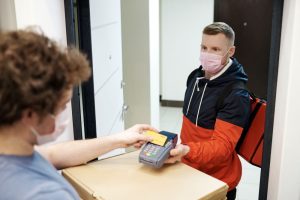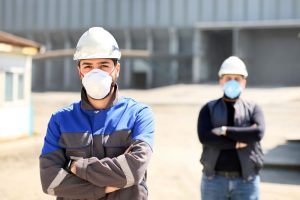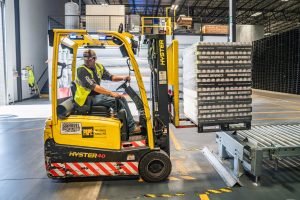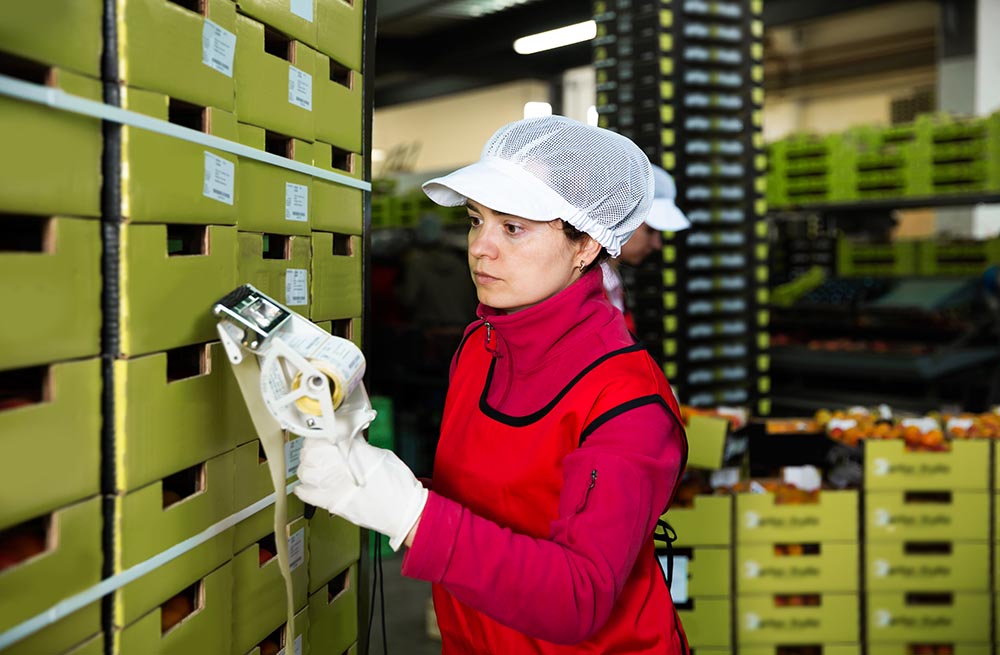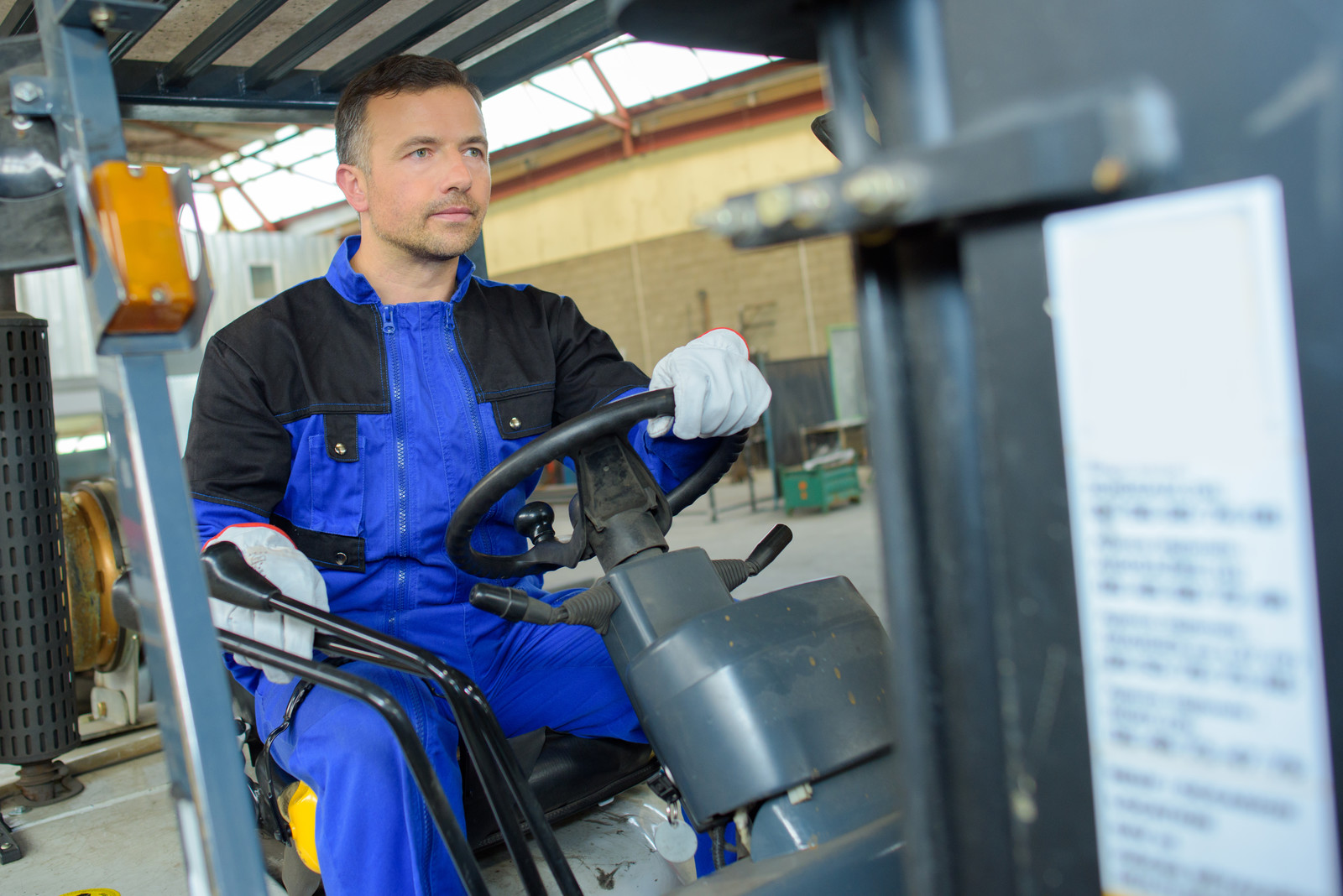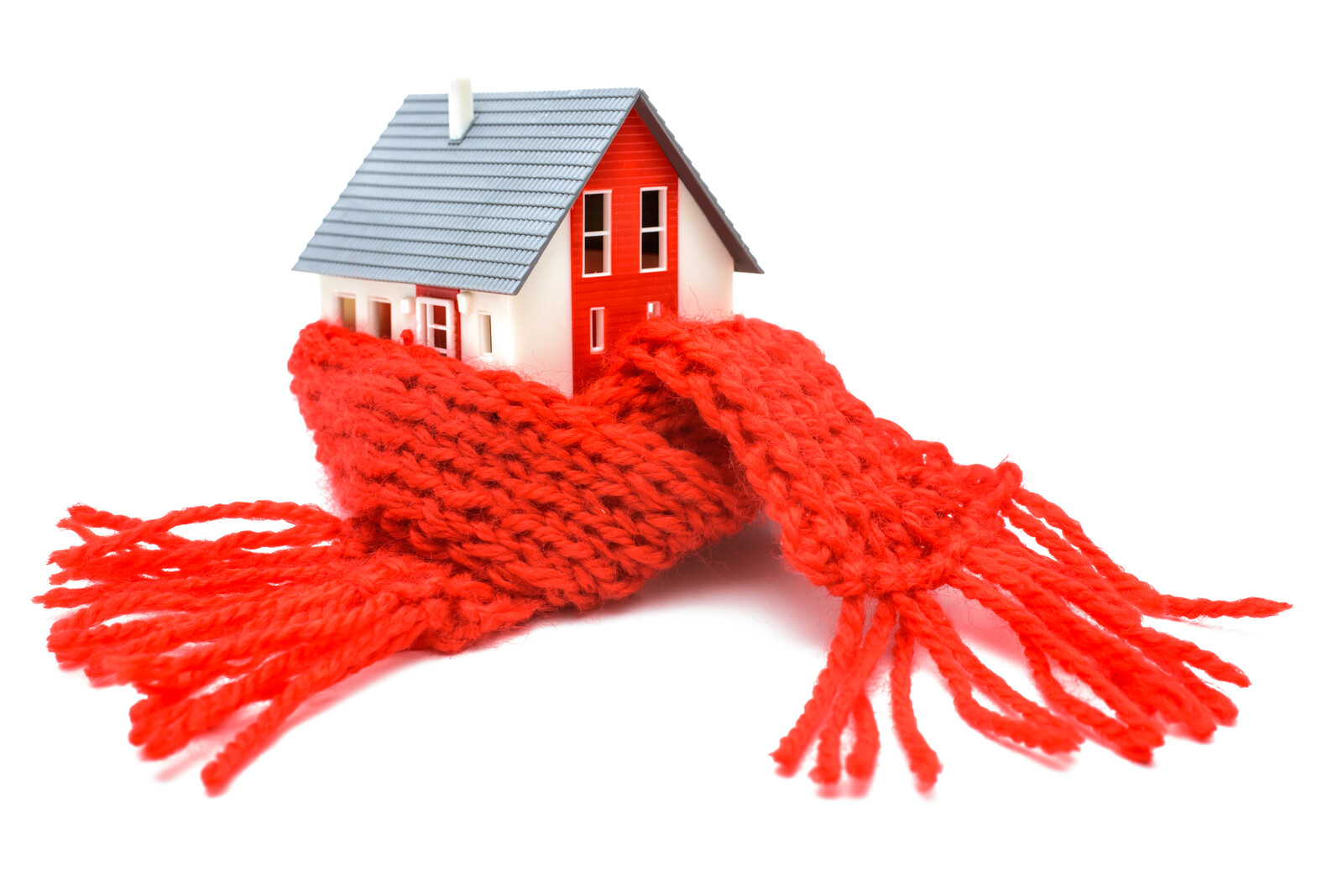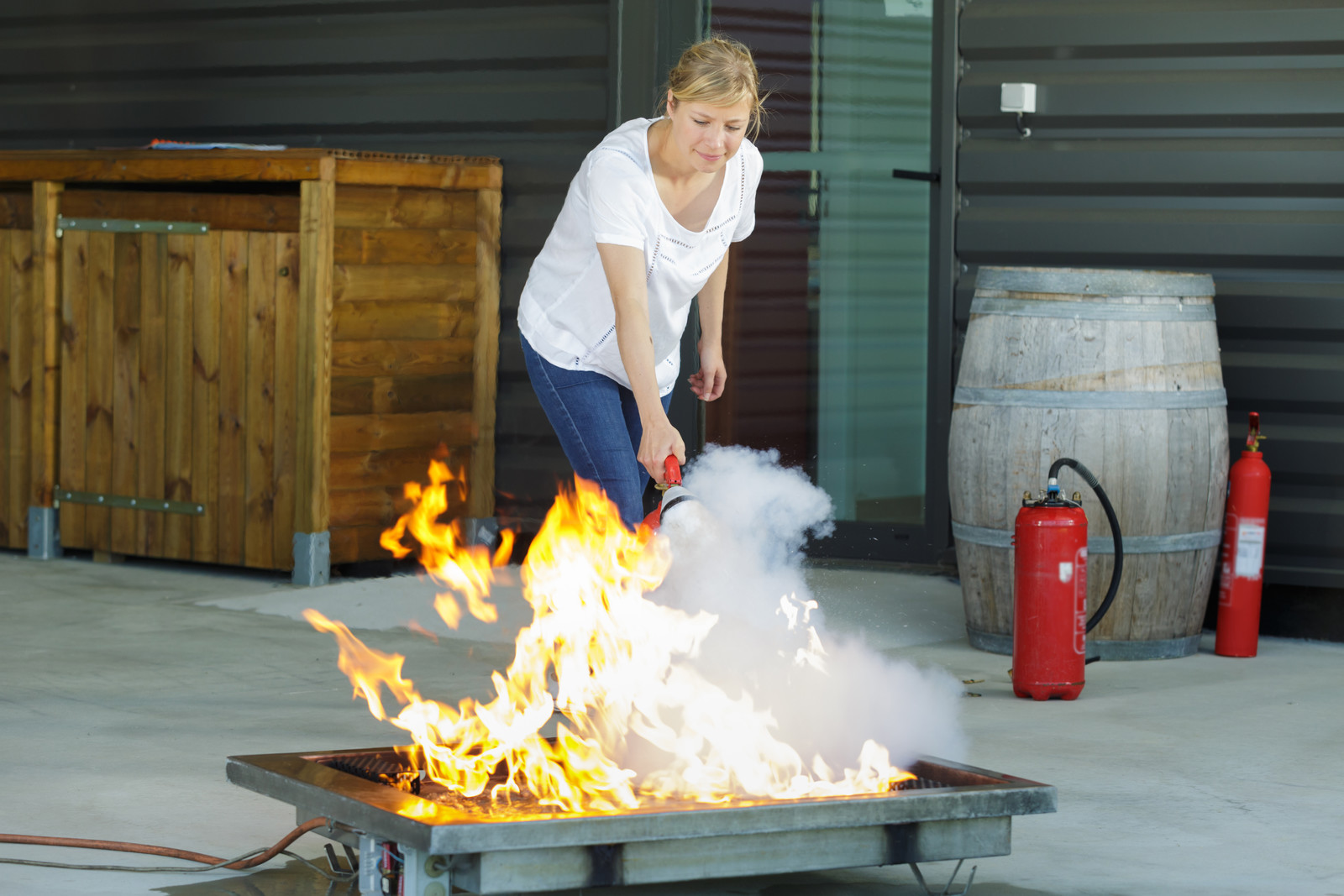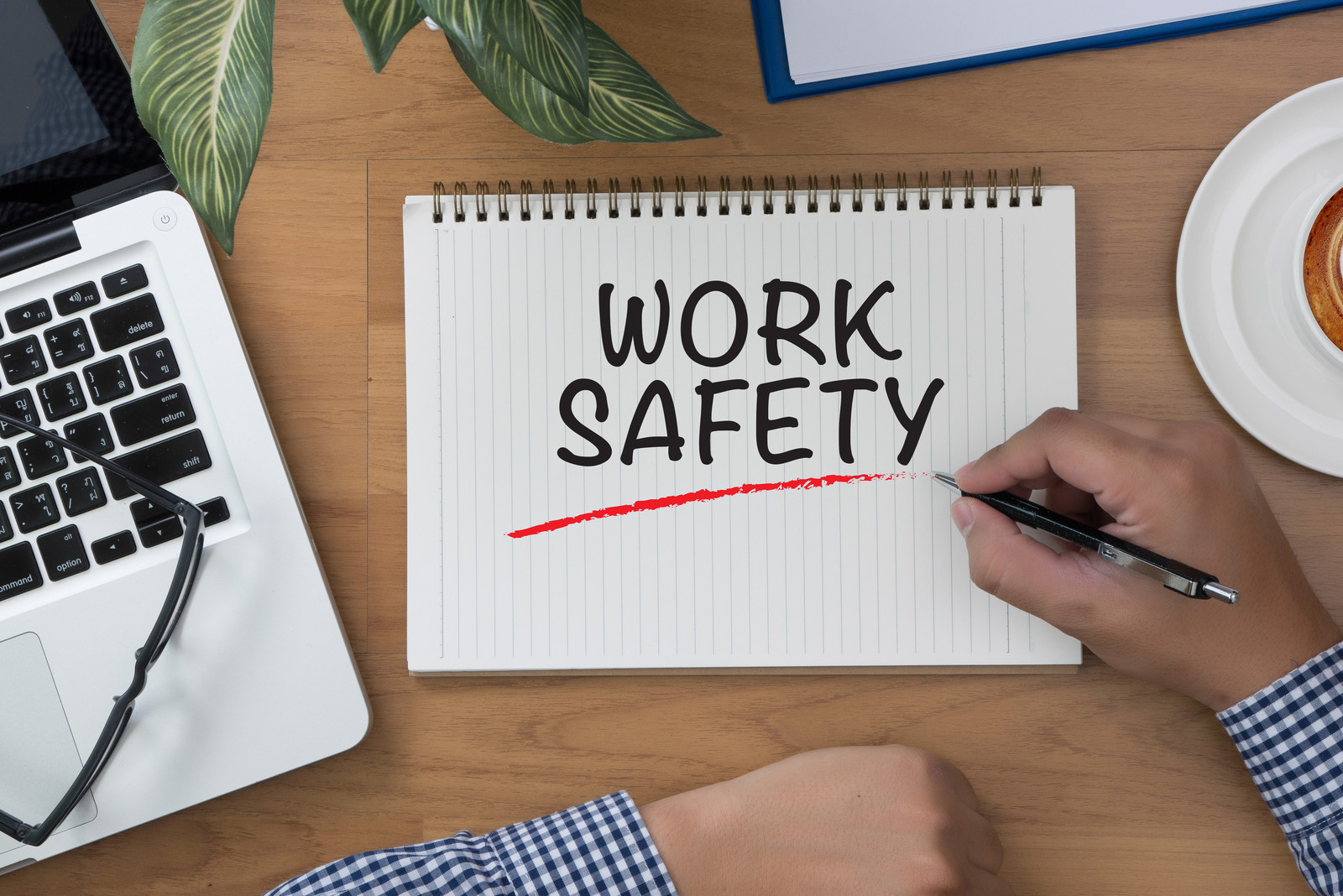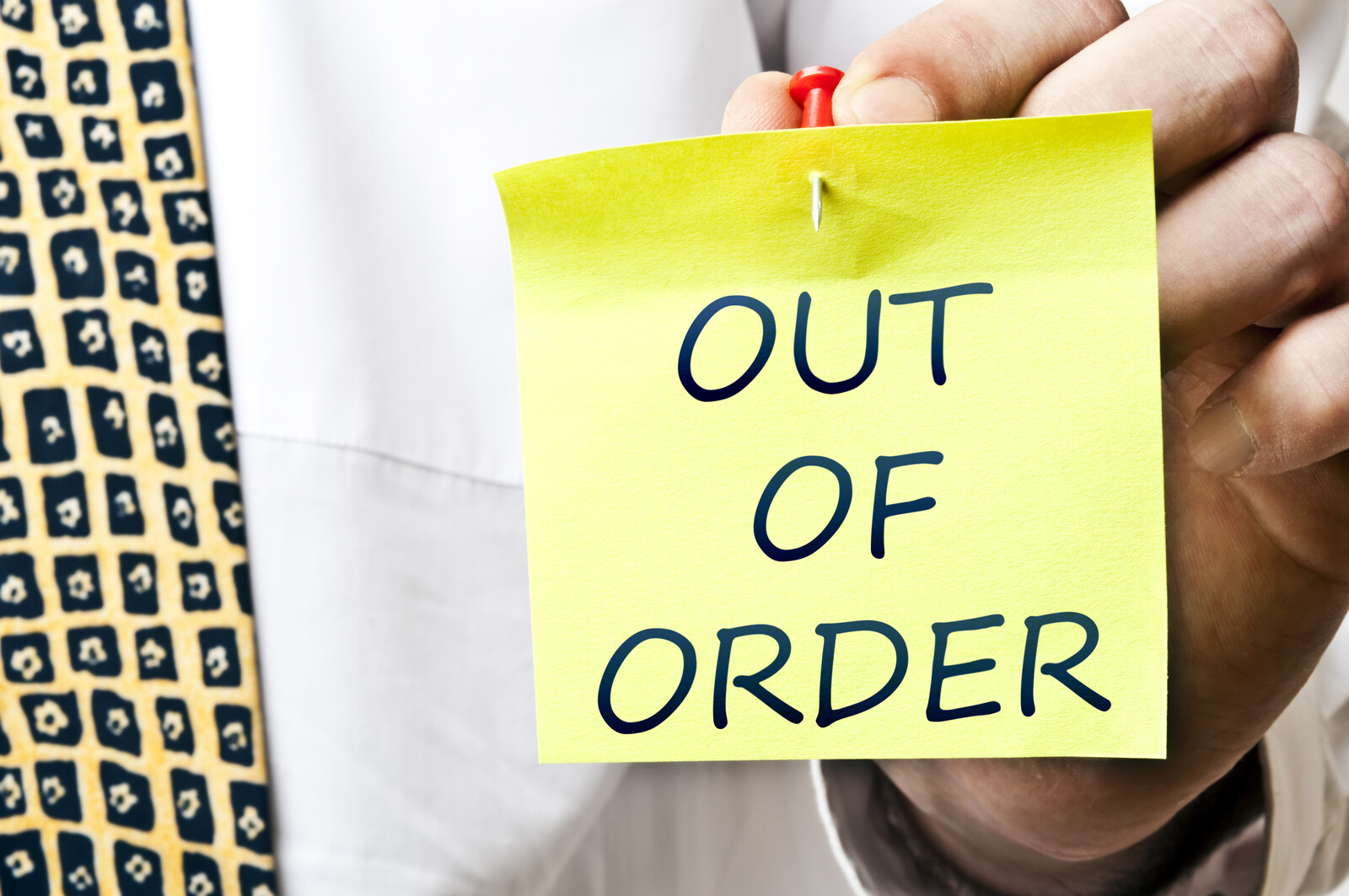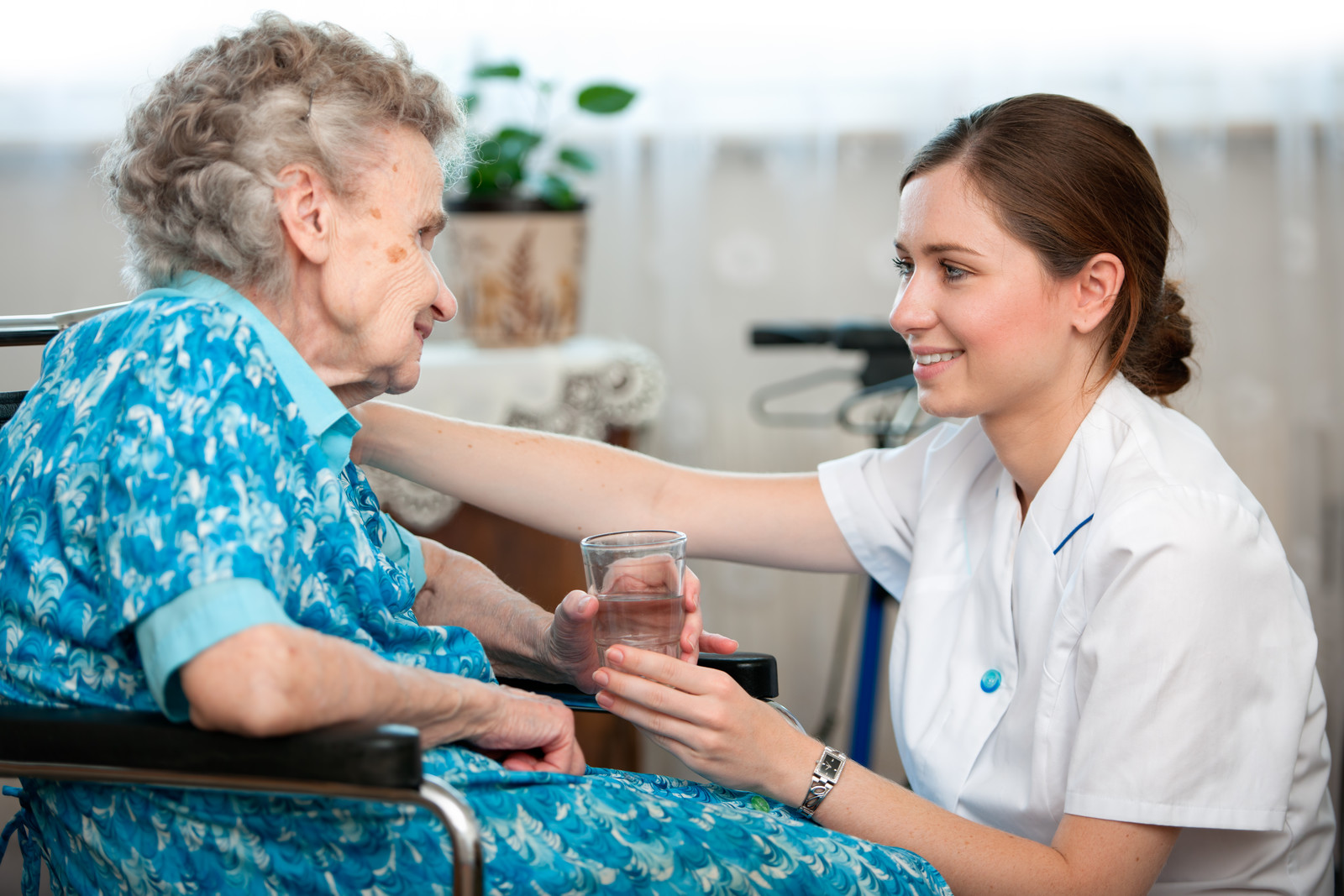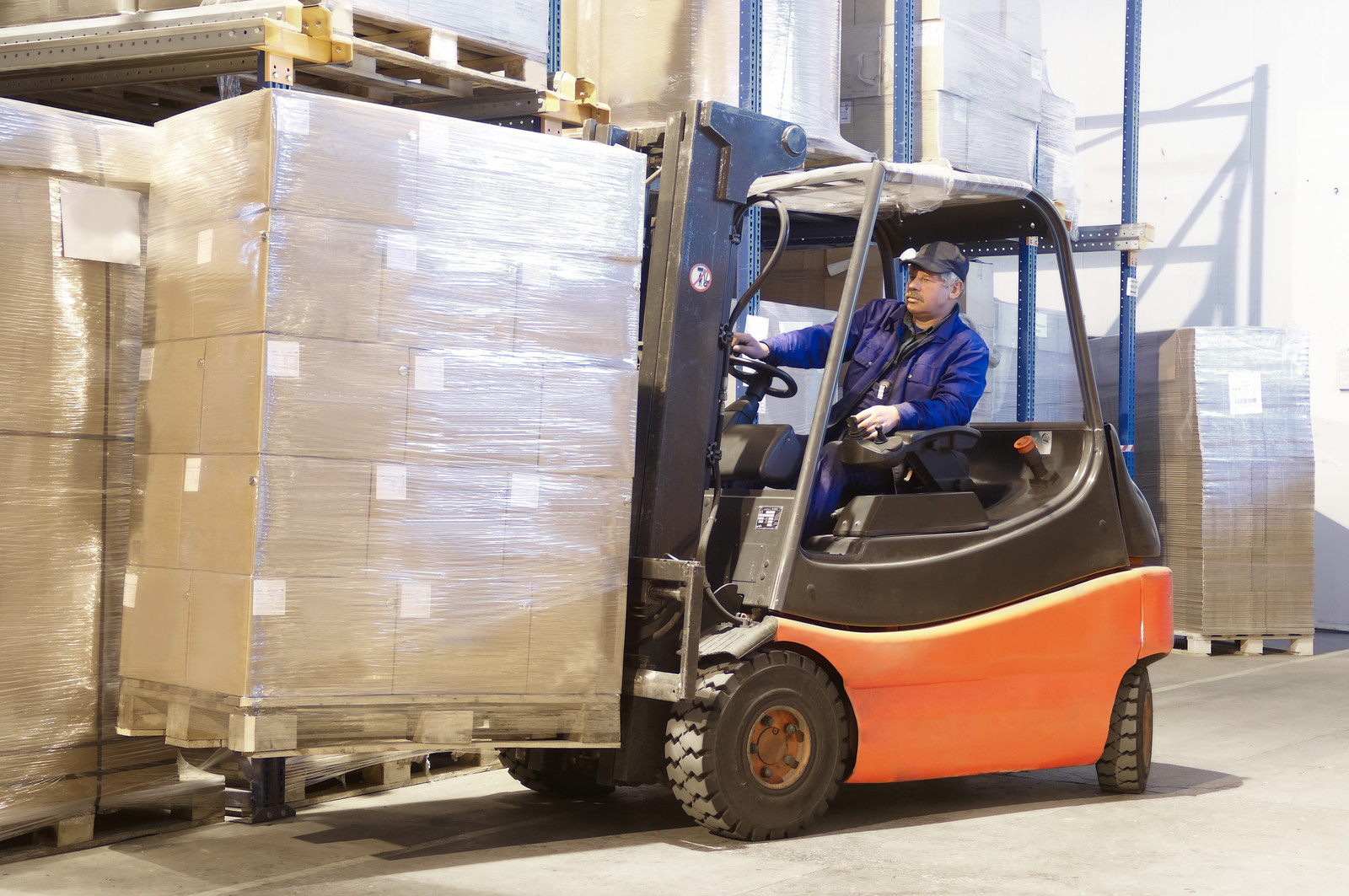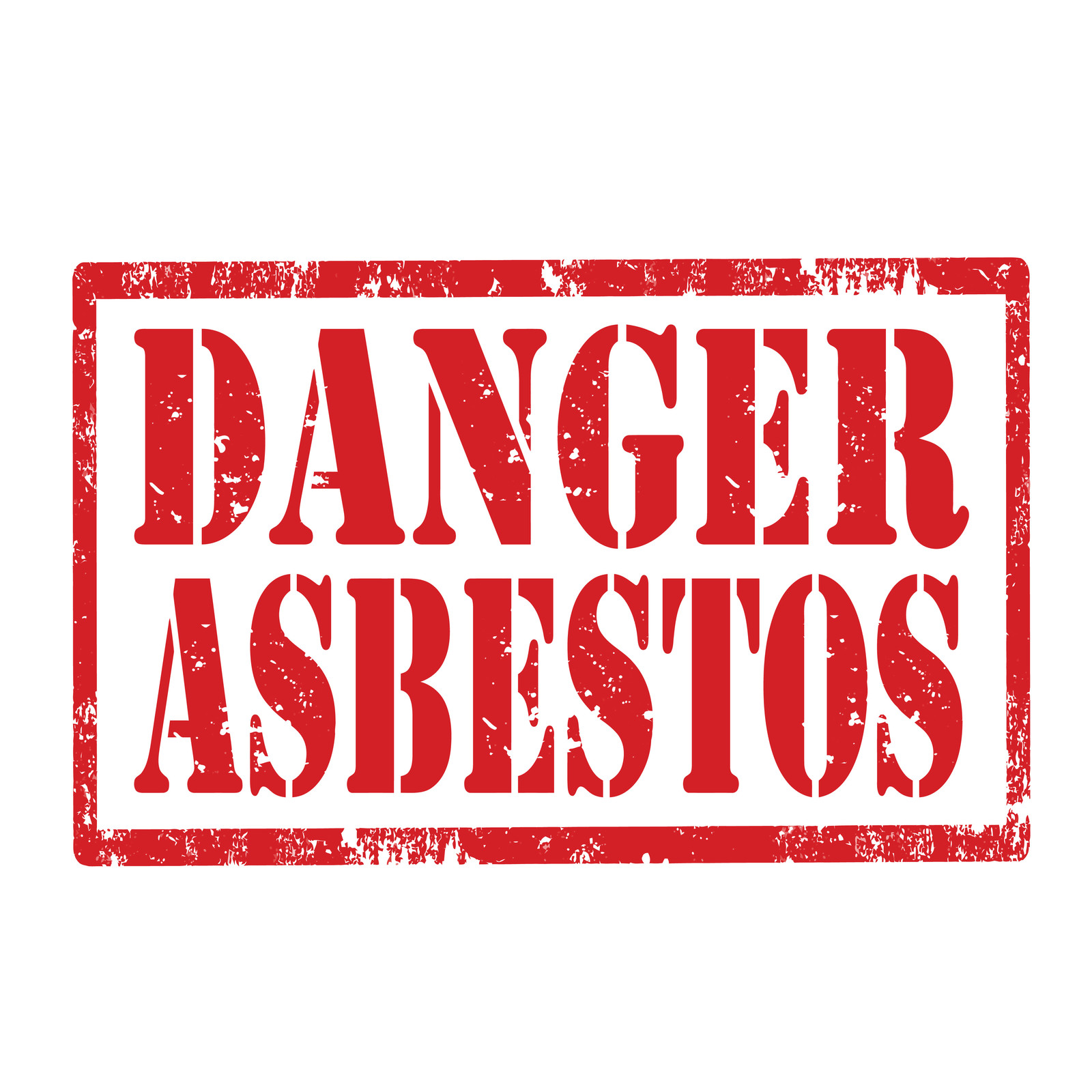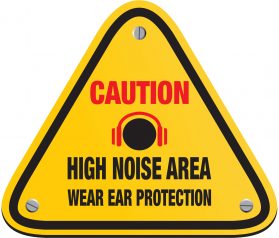Newsletter
Safety Matters – June 2025
Could poor eyesight be putting your drivers at risk?
A senior coroner has stated that the UK’s system for ensuring drivers have good eyesight is “unsafe”. With car accidents caused by poor eyesight at a six year high, its pertinent to consider whether you are doing enough as an employer to ensure your workers are safe to drive.
The UK is the only European country that doesn’t carry out any checks before the age of 70 on eyesight, and the responsibility falls to the driver to self-report eyesight issues to the DVLA. The coroner’s strong words follow inquiries into the deaths of four people struck by three different drivers, all with poor eye-sight.
What about in a work context and health and safety law? The Health and Safety Executive (HSE) state that it is the employer’s responsibility to ensure that (if driving is an element of your employee’s role) they are fit to drive. If an employee requires a medical certificate to drive then by law you are required to have these.
Be proactive. This could include providing regular eye tests, encouraging employees to report any eye-health concerns or anything that impairs their driver safety.
“Good riddance to bad rubbish”
The 31st March, saw the start of strict new waste and recycling rules coming into play in England and Wales. Any workplace with 10 or more employees will need to arrange for the collection of the following:
- Dry recyclable materials – such as plastic, glass, metal, paper and card (these last two will need to be separated from the rest of the dry recyclables unless local collections are mixed).
- Food waste
- Residual (non-recyclable) waste
Aside from these new rules it remains important to ensure that collected waste does not block emergency access or escape routes, nor should it pose a trip hazard. There are, of course, existing rules governing the hazards posed by toxic waste and sharps waste. And food waste comes with a health warning if not managed correctly thanks to the danger posed by rodents and insects.
If getting to grips with it all seems like it is wasting time for you, let us help you comply with your health and safety obligations so you can concentrate on running your business.
Worst case scenario
You have probably seen the recent news of a paddleboard business owner being jailed for 10 years and six months for gross negligence manslaughter following the deaths of four people in 2021.
This tragic loss of lives should have been avoidable and was deemed to be caused by a lack of action to manage the risks. This included not heeding severe weather warnings, proceeding despite heavy flooding and the river running fast; as well as not covering the presence of the weir where the disaster unfolded during the safety briefing.
As business owners there is a legal responsibility under the Health and Safety at Work etc Act 1974 (HSWA) to ensure the health and safety of employees and anyone affected by what you do or do not do, as far as “reasonably practicable”.
The case of the paddleboarder deaths is a stark reminder to all businesses of what the costs can be when health and safety rules are not followed.
No one should lose their life because of preventable circumstances. Ensuring that your business is following health and safety rules is paramount to ensuring the safety of all as far as reasonably practicable.
Loss of life and good health come first, but as well as such potential tragic repercussions of non-compliance, health and safety failings leave your business at risk of disruption or closure, the erosion of trust and a damaged reputation leading to a loss of customers and income.
You may also incur financial or custodial sentences if pursued through the courts, as this case demonstrates.
It is important to note, that for an offence to have been committed under HSWA there doesn’t need to have been anyone actually harmed, but there is a risk of harm, as those risks have not been properly managed or controlled.
If an offence has been committed you are liable to criminal law or maybe pursued under civil law for compensation. Find out more about the difference in these laws in our blog here.
Here at The Health & Safety Dept we work to ensure that the companies we work with are compliant with HSWA and other regulations relating to health and safety. Keeping the worst case scenario in mind can be a useful sense check. We are just a call away if you need support in ensuring that all standards are being met.
A clever health and safety solution
Musculoskeletal disorders include injuries or conditions to the back, joints or limbs. In 2023/24 32% of work-related ill health was attributed to these disorders (Labour Force Survey).
“The Musculoskeletal Disorders Risk Reduction Through Design” award is sponsored by the Health and Safety Executive (HSE) and the Chartered Institute of Ergonomics and Human Factors (CIEHF). The award is a catalyst to encourage employers to adapt their work processes with the aim to reduce the risks of musculoskeletal harm to their workers.
With SMEs employing over half of the UK population, your business has the potential to help change the future for musculoskeletal disorders risk reduction. This year’s winner for SMEs was UPM Raflatac Ltd.
One of their workers suggested a ‘trolley’ solution to largely decrease the manual stacking of reels of laminate paper, which can weigh between 20-90kg. Manually stacking these at heights of up to 1.3m was a physical strain and posed risks of musculoskeletal disorders.
Their in-house engineering and production teams built a prototype which was then actively used by the workers. Their feedback allowed the company to create a system involving a trolley, fork lift truck and an engineered device to automatically upend and stack the reels. This process significantly reduced the manual handling of the heavy reels of laminate paper, thus reducing the risk of musculoskeletal disorders.
One of their operators said “It’s massively reduced manual handling when dealing with these reels and has made the task smoother, faster, and much safer. We can now get the reels from the floor into a large stack without any lifting.”
We love stories like this, showing that health and safety can be about creativity as well as compliance. Take a bow UPM Raflatac, but don’t strain your back when doing so!
eLearning of the month: Health and safety essentials training
Our 40 minute eLearning for health and safety essentials training is the perfect introduction to health and safety for your staff. Whether they are new to your workplace or need a refresher, this easy to access course is designed to help instil a culture of health and safety.
It is a great way to begin your legal compliance with staff health and safety training, and this essentials course will give them a foundation in the do’s and don’ts to avoid risks at work and keep everyone safe.
The course will take the learner through legal requirements, hazards and risk, PPE, safety signs at work and workplace emergency procedures e.g. fire evacuation. It also touches on fire awareness; slips, trips and falls; manual handling; basic DSE; basic COSHH; and electrical safety.
To find out more about this course or any of the others that we provide, please contact us today.
Safety Matters – April 2025
Listeria outbreak shines spotlight on food safety
Listeria is a foodborne bacterium that is common in ready-to-eat foods that require no heating or cooking. This includes products such as pre-cooked meats, pâte, pre-packed sandwiches and pre-cut fruit.
The recent cases of deaths linked to listeria in the UK shine a spotlight on getting safety right when preparing food. The cases in the news involved three people who died after they consumed a dessert supplied to NHS hospitals and care homes.
The UK Health Security Agency (UKHSA) and the Food Standards Agency (FSA) are investigating cases where those affected had the same strain of listeria linked to a mousse-based pudding served in hospitals and care homes. In each case there were underlying immunocompromising health conditions in people aged between 68-89 years old.
So how does this impact your business? If you are a food producer or retailer you are responsible for properly vetting your suppliers. If an issue is identified, withdraw products as quickly as possible and inform the UKHSA.
If you are a business that handles, utilises, manufactures, processes or sells food you need to have a food management system which keeps your food products safe and ensures you comply with the legislation associated with food safety. If this is something you need help with, contact us today.
National Insurance increases: outsourced H&S can help
As employer NI increases are now in effect, don’t forget that outsourcing your health and safety to us is a solution to protect your business from these rises, as well as you, your staff and customers from work-based hazards.
We are a cost-effective, convenient way to comply with the law when you don’t have a dedicated person in-house. We are experts when it comes to health and safety, so you know you will be keeping your staff safe and allowing your core team to focus on your business.
Whether your firm needs help on a one-off basis or with a cost-effective retained package, we are the answer: the perfect one-stop-shop when it comes to health and safety for your SME. Contact us today to discuss your needs.
World Health Day
April 7th is World Health Day and what better time to consider how important it is to keep your staff healthy at work!
A large proportion of our lives is spent in the workplace, and it should not be a surprise that work therefore has a major bearing on our health. In the latest work-related ill health statistics from the Health and Safety Executive (HSE), 1.7 million workers in Great Britain are reported as having work-related ill health (Labour Force Survey (LFS)).
Two of the biggest causes of work-related ill health are occupational lung disease (OLD) and Musculoskeletal disorders. Let’s take a look.
In 2023/24 the LFS reported that 543,000 workers in Great Britain were suffering from either new or long-standing musculoskeletal disorders, with nearly 8 million working days lost due to these.
By industry, musculoskeletal disorders are most common in construction, transportation & storage, and administrative and support service activities.
The LFS reports that the main factors causing work-related musculoskeletal disorders come from:
- Manual handling
- Keyboard or repetitive work
- Working in awkward or tiring positions
You will recognise that these are generally common activities, and are all things that can be addressed with risk assessments, training (see below), and relatively simple mitigations.
What about occupational lung disease (OLD)? OLD is often serious and leads to premature mortality. In Great Britain there is an estimated 12,000 deaths a year (LFS) from OLD. Based on a three-year average between 2021-2024, the LFS reported that 47,000 people who worked in the last 12 months currently suffer from OLD. Whilst 139,000 people who have ever worked currently suffer from it.
Whilst the high number of OLD deaths each year is largely down to the effect of past working conditions (as they can often have a long dormancy period) it is paramount that you keep your staff safe now to reduce this number significantly in the future.
OLD is linked to the exposure of hazardous materials. It is your duty as an employer to assess and manage their risk.
Common hazardous substances include welding fumes, silica dust, wood dust, flour dust and asbestos.
Each workplace with hazardous substances will be affected by:
- The type of substance
- The working environment
- The work being carried out
It is your duty to carry out thorough risk assessments, and put control measures in place to eliminate or minimise the risk posed. This requires specialist input and as experts in health and safety we are here to help.
Whether its musculoskeletal disorders, occupational lung disease or any other issue which affects your staff health, we are here to support your business. Contact us today to discuss your needs to ensure your staff are kept healthy and safe.
Violence and aggression at work
Back in March, a viral video showed shoplifters in the USA dangling pythons in front of a cashier to distract them while stealing goods from their shop. Whilst this might be an out of the ordinary technique for stealing, there is an epidemic of shoplifting in the UK.
Now whether your business is in retail or another environment consider whether your staff have the correct training for dealing with aggression from the public.
The HSE defines work-related violence as ‘any incident in which a person is abused, threatened or assaulted in circumstances relating to their work.’
As an employer, the law mandates that you must carry out a risk assessment to identify risks to your staff and implement control measures to address these hazards. This includes the risk of violence and aggression in the workplace.
Another factor to be aware of as an employer is ensuring the safety of any lone workers in your workforce. Lone workers are those who work without any direct or close supervision and might include:
- Security staff
- Cleaners
- Delivery drivers
- Engineers
Whilst lone workers are not necessarily at a higher risk of violence or aggression, they are in a more vulnerable position should it occur. It may be beneficial for your staff to be trained in personal safety and violence prevention.
If your business requires training for lone working staff, input on a policy for lone working or help with a risk assessment to keep your staff safe from harm, get in touch today and we can help.
eLearning of the month: Manual handling training
As already mentioned, musculoskeletal disorders are one of the biggest causes of workplace ill-health, with manual-handling being a major factor.
We offer a manual handling training course as part of our eLearning provision. In just 35 minutes our course covers what you need to know about safe moving and handling.
Effective manual handling training can help make sure that the likelihood of injuries are reduced and helps keep your staff safe and healthy.
During the course, learners are taught the lifting technique LITE (Load, Individual, Task Environment) in order to assess how to conduct the manual handling most safely.
- Load: Consider the object being moved, is it heavy, bulky, unstable etc.
- Individual: Who is carrying out the manual handling? Are they capable? Do they need assistance?
- Task: Consider the activity itself. Does it require carrying, lowering, lifting etc. and how may it affect your safety?
- Environment: Where is the manual handling occurring? Is it safe? Is the floor wet or uneven? Are there trip hazards or space constraints? What safety risks are posed?
If this is an eLearning course that benefits your business then click here to find out more.
Safety Matters – February 2025
Tragedy when you don’t learn from a near miss
At the start of the year, a Multi Academy Trust (MAT) was fined £300,000 plus costs after a 19-year old student (in sixth form at one of their schools) with the condition Pica died following a “series of management failures”.
Pica is a condition where the person affected has a compulsion to eat things which have no nutritional value. In January 2023, the student was unsupervised (contrary to his risk assessment) and choked on paper towels he had consumed whilst alone, tragically dying later.
Just days before this tragedy, the same student had consumed and choked on paper towels in the playground but had managed to clear his airways himself. Unfortunately this near-miss was not acted upon.
The Health and Safety Executive (HSE) concluded that the school had not ensured that all safety risks associated with Pica had been identified nor had measures been successfully put in place to protect the student and prevent harm, such as training and supervision by staff.
Thinking beyond this sad case, by law businesses are required to report certain workplace injuries, near-misses and cases of work-related disease to the HSE. This duty is known as RIDDOR (Reporting of Injuries, Diseases and Dangerous Occurrences Regulations).
Separately, if you have more than 10 employees, it is necessary, under The Social Security (Claims and Payments) Regulations 1979, to keep an accident book. Recording incidents allows your business to better identify patterns of accidents and injuries and will help you evaluate and address the risks.
There may be other systems or processes you could follow which are not specifically prescribed by law, but which work well for your business.
Here at The Health & Safety Dept we can help your business if there have been any near misses. And you can rest assured that we are also specialists in school health and safety if this is your area needing support.
We are experts in ensuring any accident is thoroughly investigated following the relevant laws. We take an impartial, evidence-based approach which will give you actionable solutions, to help prevent further incidents occurring.
Our team of professionals will guide you through all aspects of accident investigations. Whether it is simply advice needed, full accident investigations or help reporting to RIDDOR, we are your one-stop-shop. Contact us today if you need support at any stage.
Better late than never
Many of us will have been glued to the latest series of The Traitors on the BBC this new year, but did you pick up on an apparent health and safety mishap during one episode mid-series?
Initially pairs of contestants took it in turns to choose other players they believed to be undeserving of a protective shield to have “gunk” poured over them. However there was a switch after a few rounds, from the sludge being poured directly over their heads (so it subsequently dripped into their eyes and mouths), to the mixture only being poured over the backs of their heads so it ran down their backs.
We can only assume that a health and safety professional stepped in. Whilst risk assessments for your business should be correct before commencing any activities, this episode of The Traitors was a timely reminder that if you notice something isn’t right, you have a duty to react and adjust as needed to keep everyone safe.
Remember, a ”faithful” employer will protect their staff and business when it comes to health and safety matters, so don’t be a ‘traitor’.
AI opportunities for health and safety
It’s difficult to get away from AI chat these days, as it’s constantly making headlines (for both positive and not-so-positive reasons). Undoubtedly AI will become part of every business (and business function) eventually, and health and safety is no exception.
Indeed, it may well be on your radar that Sir Keir Starmer announced an AI Opportunities Action Plan in January. The plan aims to boost growth and provide more efficient services within the UK.
Elsewhere, TfL has launched its own experimental AI technology, designed to keep passengers safe on station platforms. Currently in a trial phase, the AI programme reviews CCTV footage on the DLR to identify and detect objects (other than trains) on the tracks, with the aim of reducing accidents and fatalities on the rails.
As an SME why not get ahead of the pack and start to think about how AI could help your health and safety in the workplace. It could be an opportunity to help save a life as well as time and money for your business. A winning combination.
The HAVS and HAVS nots
Since 2005, the Control of Vibration at Work Regulations has been enforced to help protect workers from Hand Arm Vibration Syndrome (HAVS). HAVS occurs when vibration is transmitted through work processes (such as the use of power tools) to the hands and arms of workers.
HAVS becomes hazardous through frequent exposure to vibrations, which can lead to permanent health issues. By identifying symptoms of HAVS, employers can take steps to prevent permanent damage to workers.
In the last quarter of 2024, the HSE successfully prosecuted a borough council after they fell significantly short of the Health and Safety at Work etc Act 1974 (HSAWA) in the years following one of its workers being diagnosed with HAVS. This was due to repeated exposure during his 20+ years of using vibration tools whilst working for the road maintenance department. The council was fined £60,000 plus costs.
Employers have a legal duty to report cases of HAVS to the HSE. In this instance, the worker was diagnosed as having HAVS in 2005 but continued to work with vibrating tools for 14 more years.
Despite the worker being under an occupational health surveillance since diagnosis, the HSE investigation uncovered that the recommendations had not been implemented accurately or consistently over the 14 years.
It was evident that the calculations for vibration exposure were undervalued within the council. Coupled with workers being encouraged to work with the vibrating tools through a bonus scheme and overtime offer, they would have exceeded their Exposure Limit Value (ELV), thus worsening their condition.
Ultimately, poor assessment, monitoring and action led to this prosecution, not to mention the lasting impact on the health and safety of the employee. Make sure your business is compliant with all aspects of the law and keeping your staff safe. Give us a call today if this is something your workplace needs support with.
eLearning of the month: Cyber Security Awareness Training
This February 11th was Safer Internet Day, this year with the tag line “Too good to be true?” promoting keeping yourself and others safe from online scams. With about half of UK businesses suffering at least one data breach a year, it is important to do what you can to help stop any cyberattacks from happening in your workplace.
Here at the Health & Safety Dept we are Cyber Essentials Certified, so we are perfectly placed to teach you and your staff about cyber security. Our 35 minute eLearning Cyber Security Awareness Training, has been designed to be accessible to all and help keep your business safe.
With cyber-crime costing UK businesses tens of billions of pounds each year, this course ensures users are equipped with practical tools to help protect your business’s data, computers and networks from any unauthorised access.
Our course is CPD accredited and users will receive a printable cyber awareness certificate once successfully completed. For more information and a full list of our accredited training courses, contact us today.
Safety Matters – December 2024
Latest HSE figures released
The Health and Safety Executive (HSE) has released its latest summary statistics for Great Britain for 2023-24. We’ll be looking at these in closer detail at the start of the new year but here are some of the headline figures.
With over three-quarters of a million workers suffering from work-related stress, anxiety or depression, and 300,000 of them being new cases, this is an area not to be ignored. We explored ways to support your workers mental health back in our October blog.
Workplace injuries have shown a general downward trend since the start of the millennium, and figures for 2023/4 are back to pre-covid levels (after related statistical anomalies). Self-reported non-fatal injuries stand at 604,000 whilst employers reports of employee injuries are just over 61,000 in the year.
The majority of employer reported injuries were caused by slips, trips or falls on the same level (31%), which has long been the most common cause. Take a look at one of our past blogs to see what you could do to help eliminate or reduce this particular risk.
According to RIDDOR (The Reporting of Injuries, Diseases and Dangerous Occurrences Regulations) there were 138 reported deaths from work-related accidents in the last year. The death rate compares favourably internationally, but at The Health & Safety Dept, we believe one death is too many.
Sadly, there is also estimated to be 12,000 deaths from lung disease, linked to past exposures at work, with over 2,000 caused by mesothelioma. Given its associated links with asbestos exposure and what you need to do to keep yourself and others safe, check out our article which focuses on this later in the newsletter.
Asbestos awareness
In January 2024 the HSE launched The Asbestos – Your Duty campaign. This was to reach those responsible for the maintenance and repair of non-domestic buildings built before 2000.
Previously schools and hospitals have been the focus for investigation campaigns but now the HSE is going to narrow down on local authorities and the premises they are responsible for, such as libraries, leisure centres and museums.
The latest figures released from the HSE estimate that occupational lung disease related deaths are responsible for 12,000 out of the 13,000 deaths from work-related exposures in the last year.
Mesothelioma and asbestos-related lung cancers account for 40% of annual deaths from occupational lung disease. This is a stark reminder that employers have a duty to manage asbestos to eliminate risks to all.
The inspections will ascertain how local authorities are managing their Duty to Manage Asbestos. This is stipulated under Regulation 4 of the Control of Asbestos Regulations 2012 (CAR).
The duty holder of buildings (in many cases this will be local authorities) must ensure that anyone who visits or works in affected buildings are protected against the risk of exposure to asbestos. If left undisturbed they should not pose a risk, but ensuring they are left undamaged is the key here.
The key requirements of duty holders include:
- Taking steps to ascertain if there are asbestos-containing materials (ACMs) in their buildings, and if so, the amount, where it is and what condition it is in.
- Presume materials contain asbestos unless clear evidence suggests they don’t.
- Keeping records up-to-date of the location and condition of any ACMs – including those presumed to contain asbestos.
- Assessing the risk of exposure to fibres from ACMs.
- Preparing a detailed asbestos management plan (AMP) that stipulates how the risks from ACMs will be managed and put this plan into action.
- Ongoing evaluations of the plan and responding to the findings, so the plan and arrangements remain up to date.
- Disseminating information on the location and condition of ACMs to anyone who may work on, or disturb, them.
Having robust systems in place to allow portfolios to be effectively and safely managed is fundamental to ensuring risks are reduced or eliminated.
While the current focus of this initiative is currently on local authorities, it is a reminder that any professional who suspects asbestos may become disturbed during works should know how to respond appropriately.
As the HSE push forward with their The Asbestos – Your Duty campaign, consider if you need support in your business with asbestos awareness. Our eLearning courses are designed to ensure workers are fully briefed on the dangers of working with asbestos and will show how you can be compliant with the Control of Asbestos Regulations 2012 (CAR).
We offer accessible and time efficient courses that can keep staff up-to-date with current legislation. The majority of our eLearning courses are just 30 minutes long so learners will stay alert and engaged. Contact us now if you’d like to know more.
We can also work with you to ensure that you are complying with CAR and keeping everyone safe from the risks posed by asbestos. Get in touch with us today if you need support with asbestos management.
Hit by moving vehicle risk
From the 138 work-related fatalities identified in the latest HSE published figures for 2023/4, the second biggest cause, after falling from height, was being struck by a moving vehicle. In the year this caused just over 18% of work-related deaths.
During November, the HSE reported on prosecutions for two fatalities and one serious injury caused by moving vehicles at work.
In each case the HSE’s subsequent investigations had found severe issues with the health and safety procedures of each company. The findings across the three cases included that there were incomplete policies and risk assessments, as well as lack of training and systems of work not being documented or followed.
Between them, as well as the tragic fatalities and in one case life-altering injuries, these three prosecutions resulted in fines totalling £1.84 million.
Loss of life or serious injury are amongst the most serious outcomes from substandard health and safety protocols. Here at The Health & Safety Dept we want to help your business comply with all laws and regulations to keep your workers and business safe at all times.
Our eLearning courses can be the perfect way to upskill your employees in areas of health and safety. Given the HSE found severe issues with the businesses whose employees were hit by a moving vehicle, Banksman Training may be a cost effective way to help your workforce operate safely.
Banksman training will introduce or refresh workers who are involved with manoeuvring large vehicles, directing vehicles on site and keeping areas clear from pedestrians.
Contact us today to discuss how we can support your business be the best it can when it comes to health and safety. Our expert team are on hand to ensure that all policies, training and risk assessments are compliant and are tailored to your business.
eLearning of the month: Slips, Trips and Falls Prevention and Health and Safety Essentials
As winter approaches, the risks of slips, trips, and falls increase due to wet and icy conditions. It’s crucial to be prepared and ensure a safe working environment during this season.
The Slips, Trips and Falls Prevention Training course by The Health & Safety Dept is designed to help staff understand why these accidents happen and how to prevent them. This course covers the responsibilities of both employers and employees, the common hazards, and practical steps to minimise risks, especially in winter when surfaces can be particularly treacherous.
Similarly, the Health and Safety Essentials course provides a comprehensive introduction to key health and safety topics. This course covers a wide range of hazards, including slips, trips, and falls, manual handling, and working with display screen equipment. It emphasises the importance of understanding and following health and safety policies to prevent accidents and ensure everyone’s well-being.
We offer accessible and time-efficient courses that can keep staff up to date with current legislation. Many of our eLearning courses are just 30 minutes long, so learners will stay alert and engaged. Contact us now if you’d like to know more.
We also have handy ToolBox Talks, which are a great way to keep employees up to date with the latest safety issues and act as a useful reminder to staff. We will tailor these to your business and site so that your workforce can continue to work safely and effectively.
Stay safe and ensure a secure workplace this festive season. Contact us today to learn more and give your team the peace of mind they deserve.
Safety Matters – October 2024
Fundamental shake up due to stress findings
Following the inquest after the death of a headteacher in January 2023, the Department for Education has announced that they are changing the way in which they grade schools. The old-style single headline grades are being done away with, and instead, from September 2025, “school report cards” will be introduced.
With over 17 million working days lost every year as a result of depression, anxiety and stress, UK businesses lose around £28 billion. Addressing stress can alleviate the pressure of this on your business.
Whilst the stress of OFSTED was found to be a causing factor in the head teacher’s death, it acts as a reminder to all industries that although work needs to be done, work-related stress is a factor that should be taken seriously. No job is worth someone’s life.
All workplaces can make a difference to their employees by addressing their stress management policy if necessary. We are on hand to tailor a stress management policy for your workplace to provide managers with support, advice and tools to effectively manage work-related stress.
Here at the Health and Safety Dept, we offer a variety of courses to help your business be proactive when it comes to work-related stress, including: stress awareness training, mental health awareness training for managers and mental health awareness training.
Give our health and safety experts a call today, and we will help your business identify and act upon the major risk factors that can influence stress for your employees.
Tree safety
As enchanting as the changing autumn leaves can be, we mustn’t overlook the risks that the change of season in autumn poses to safety, especially when it comes to trees.
Earlier this year an East Sussex forestry body was fined several thousand pounds after it was found culpable of breaching Section 3(1) of the Health and Safety at Work etc. Act 1974. This came after a couple were struck by a falling tree in the Ashdown Forest, resulting in one of them suffering a traumatic brain injury.
The HSE found that the forestry body had not taken appropriate precautions when felling, which should have included posting warning signs and using barriers and banksmen to secure the area where the tree was being felled.
You do not need to be a forestry body to have a responsibility for trees. If you have trees on your site, make sure you know what to do and take the appropriate steps. We can help your business put the systems in place to control risks from trees to your employees, contractors and members of the public, give us a call today to get started.
Is your business hosting a bonfire and firework display?
With November 5th fast approaching, the nation will look forward (or not) to countless firework and bonfire displays. As you’d imagine, if you are hosting a bonfire bash at your premises, or organising one for your community, health and safety is paramount. Here are some starting considerations…
When purchasing fireworks for your display, they must be marked as CE compliant. The CE classification has replaced the old British Standards BS7114 of garden (Category 2) and display (Category 3) fireworks. It is now illegal for retailers to sell fireworks classified under the old BS7114 standards.
Most shops only have permission to sell fireworks between certain dates around major festivals, including Bonfire Night, New Year, Diwali and Chinese New Year. At all other times you must go to specially licensed shops. You should only purchase from reputable dealers.
When planning your event, remember that fireworks cannot be let off between 11pm and 7am except on Bonfire Night (5th November) when the cut off is extended to midnight, or on New Year’s Eve, Diwali and Chinese New Year when this is extended even further to 1am.
The HSE also provides guidance on displays. Whether you are hosting a community or corporate event, you can light a display yourself provided it only contains fireworks in categories 1, 2 and 3. Any use of category 4 fireworks may only be used by professional firework display operators.
Whilst public liability insurance is not required by health and safety law, if you are manufacturing or storing explosives (including fireworks) you may wish to take out public liability insurance. This is also often a condition of membership to many professional bodies and trade associations.
If you are a professional display operator using category F4 fireworks, T2 theatrical pyrotechnics or P2 pyrotechnic articles you are required by product safety law to have public liability insurance in place covering their use.
If your display also includes a bonfire then you should:
- Check the structure is sound and does not have small children or animals inside it before lighting it.
- Never use paraffin or petrol to light the fire.
- Have only one person responsible for lighting the fire. They should wear suitable clothing that is made of a low-flammable material, particularly their outerwear.
- Make sure that the person lighting the fire, and any helpers know what to do in the event of a burn injury or clothing catching fire.
As with all elements of health and safety, a thorough risk assessment should be carried out to, where reasonably practicable, identify and eliminate the risks that could occur. Where this is not possible, the risks should be mitigated. Get in touch today to make sure that your business is lighting the way when it comes to health and safety this Bonfire Night.
Working from height – it’s not just workers at risk
In 2019, an 81-year-old man fell to his death in his own home. This was after a construction company had been completing building work and left a hole unguarded in the bathroom. This is a stark reminder that working from height health and safety law is applicable to workers but also is there to protect members of the public.
In September, the aforementioned construction company was found guilty of breaching Section 2(1) and Section 3(1) of the Health and Safety at Work etc. Act 1974, and ordered to pay a fine and court costs totalling £200,000.
The Health and Safety Executive (HSE) investigation found the building company had not properly trained its employees and as a result they had failed to adequately secure the hole. The company had also not undertaken a suitable risk assessment, and no method statement for the work involved had been completed.
The HSE has stringent rules for working at height which adheres to Work at Height Regulations 2005 (WAHR). All working at height work should be properly planned, supervised and carried out by competent people. If you need help in your business to observe these regulations or to discuss risk assessments and method statements then contact The Health & Safety Dept today to get started.
Bullying & Harassment and Sexual Harassment Awareness courses
You may have read that the Worker Protection (Amendment of Equality Act 2010) Act came into force on 1st October, and has cracked down on sexual harassment in the workplace.
The new law requires you to be methodical in your processes for recording your actions as an employer to keep staff safe. While there is a strong HR aspect to complying with this law, there is a health and safety angle too, as it involves risk to your employees.
One way in which you can make a start with this is through staff training. Here at the Health & Safety Dept we pride ourselves on delivering the support that you need. Join us for our Prevention of Sexual Harassment at Work in-person training session. The first running of this will be on 24th October but look out for future offerings.
This two-and-a-half-hour course is formulated to help managers understand your legal position and how to prevent and address sexual harassment in the workplace. It will cover important topics such as:
- Identifying harassment
- Understanding your responsibilities
- Creating a respectful work environment
- Reporting procedures
- How to protect your employees and your business from claim
Book today to learn how to create a safe and inclusive workplace for all staff.
We also have a range of eLearning courses that support your business when it comes to bullying and harassment as well as sexual harassment issues. Give us a call or find our full list of courses here, or if you need bespoke help in this area.
Safety Matters – August 2024
Staying safe in refrigerated areas
A London branch of Pret a Manger has been fined £800,000 after a worker was stuck in a walk-in freezer for two and a half hours. The employee suffered suspected hypothermia after she was trapped in the -18°C freezer wearing just jeans and a t-shirt.
An investigation by Westminster City Council found that the company had not conducted a risk assessment for employees working in temperature-controlled environments. It had also failed to act on a number of similar incidents caused by defective freezer buttons and faulty door release mechanisms.
This story sends a shiver down the spine, but it could have been much worse. If you work with walk-in machinery, it’s vital to maintain it in good working order. Inspect equipment regularly and record the findings. If you find a fault, stop using the machinery until you can get it fixed.
If your employees are working in refrigerated areas, make sure you have conducted a full risk assessment beforehand. Take steps to limit the amount of time workers spend here, and provide gloves and jackets if necessary. If age or illness makes an employee more vulnerable to the cold, consider assigning them a different task. If you would like an expert review of your practices in refrigerated areas, get in touch.
Martyn’s Law – New responsibilities for hospitality
A change of government always means a change of legislative tack with many of the old regime’s bills never to see the light of day. Following last month’s King’s Speech, however, one thing we know for sure is that Labour will uphold plans to place greater responsibility on public venues to defend against terrorism.
During the speech, the government committed to enacting Martyn’s Law. Named after Martyn Hett, one of the victims of the Manchester Arena bombing in 2017, this legislation will put the onus on venues to reduce the likelihood and impact of terror attacks.
While the exact details of the law are still unknown, it seems that it will group premises into two tiers. Venues that hold more than 100 people will be expected to take basic precautions, while those that hold more than 800 will need to undertake more extensive actions. These may include providing counterterrorism training, conducting enhanced risk assessments and implementing a security plan. We will keep you updated as the bill passes through parliament.
Do you need a workwear policy?
You’ve probably noticed that workplace dress codes have become a lot more casual in recent years. This is a welcome change for many of us, but casual clothing can create unforeseen dangers. This was demonstrated in tragic fashion by a recent prosecution.
Last month, an industrial door manufacturer in Aberdeen was fined £165,000 after an employee was suffocated by a piece of machinery. One of the company’s mechanics was fatally strangled after his hoodie became tangled in the mechanism of the torsion spring he was servicing. Colleagues managed to cut him free, but he later died in hospital.
Although the company had repeatedly told employees not to wear loose clothing, it had failed to put in place a formal clothing policy. The investigation also found that no safe system of work was in place for dangerous tasks, and that the company had neglected to provide adequate training and supervision to ensure best practices were followed.
While this may seem like a freak accident, it should be a wakeup call for companies whose workers perform high risk activities. If your work involves heavy machinery or equipment with moving parts, it’s important to think carefully about what your employees are wearing. Include this in your risk assessment, noting the types of clothing that could create a particular danger.
If you identify multiple risks, the best option may be to introduce a workwear policy. If you have any questions about what to include in this, don’t hesitate to get in touch.
What can we learn from the latest HSE fatality statistics?
Following on from last November’s illness and injury statistics, the HSE has released its annual summary of work-related fatalities. While there are no big surprises in the data, there are a few key points that are worth mentioning.
There were 138 deaths in the 2023/24 period, an increase of two from the previous year. Slight fluctuations in these numbers are common, so this is not a statistically significant increase. Fatality numbers have remained broadly flat over the last ten years, with the exception of 2020 when deaths fell as a result of pandemic closures.
Another point of similarity is the danger profile of each industry. As usual, the majority of fatal injuries occurred in construction, agriculture, forestry and fishing and manufacturing. Of the 138 total fatalities, 90 occurred within these sectors. Construction saw the most total fatalities with 51, while agriculture, forestry and fishing had the highest fatality rate of 7.51 per 100,000.
Fatality demographics are also largely unchanged. Male workers continue to make up the vast majority of workplace deaths, suffering 95% of this year’s fatal accidents. Workers over 60 are also disproportionately vulnerable, accounting for a third of all deaths despite only making up 11% of the workforce.
While the three most common causes of death are still falls from height, being struck by a moving vehicle and being struck by a moving object, this year’s data show a significant increase in falls from height. This was the cause of 50 deaths, much higher than the five year average of 37. While the reasons for this are unclear, it should act as a warning for employers whose staff frequently perform tasks at height.
Whatever industry you work in, these statistics shouldn’t be cause for complacency. While fatalities have dropped massively over the last 50 years, they have remained flat for the last decade. This suggests that some fresh approaches might be needed to get things moving in the right direction.
At the H&S Dept, we believe that one workplace death is one too many. We make it our mission to ensure that you and your employees are doing everything necessary to reduce the risk of injury and death on the job. Whether it’s designing a risk assessment and implementing a safe system of work or providing refresher training courses for employees, we’re here to make sure safety standards never slip. Give us a call to find out the many ways in which we can help.
eLearning of the month: Risk assessments
A solid risk assessment is the cornerstone of workplace health and safety. You have a legal and moral responsibility to protect your employees from danger, and you can’t do this without first examining and recording these dangers.
A good risk assessment does more than identify surface-level risks. It goes deeper, rooting out hidden dangers and finding the employees who might be especially vulnerable. Getting this right takes practice, but it can make a huge difference to overall safety.
When a business employs five people or more (including the employer), it is required by law to have an H&S competent person. Many choose to outsource this role to an independent expert like us. This is a great way to ensure that nothing is missed, but this approach can be complemented with in-house training, and our eLearning courses are a fast and cost-effective way to do this.
We offer accredited online courses in every possible aspect of health and safety, including risk assessments. Our specially designed risk assessment module will teach you everything you need to create and implement a highly effective risk assessment. eLearning courses can be completed in as little as 30 minutes, making them a great way to upskill your staff without disrupting the daily workflow. Give us a call or click here to find out more.
Safety Matters – June 2024
Thinking outside the box
Health and Safety is a serious, often process-driven business, but that doesn’t mean there’s no room for innovation. While it’s important to follow the rules, there are times when thinking creatively can make life safer for everyone.
Every year, HSE teams up with the Chartered Institute of Ergonomics and Human Factors (CIEHF) to present the Risk Reduction Through Design Award. This recognises the company that has most successfully reduced the risk of musculoskeletal injuries through inventive design choices. This year’s award went to Cranswick Gourmet Pastry for its “Hopper Topper”- a device that removes the need for manual lifting of buckets and trays during the pie-filling process.
Alongside the main winner, there was a new award for design innovation in smaller companies. This was presented to a Kent-based building contractor who used a handheld crane and tool balancer to reduce the effects of vibration on employee’s hands and arms during fencing installation.
This just goes to show that the latest safety innovation can come from anywhere. Keep your eyes open for opportunities to reduce the physical strain of regular workplace tasks, and don’t be afraid to ask your employees if they’ve come up with any tips or tricks. You might just stumble upon an award-winning idea!
Would you pass an HSE spot inspection?
As a business owner, an unannounced visit from the HSE may be quite a shock. While surprise inspections are rare, they are not unheard of. In 2022-23, HSE performed over 7,500 spot checks, some of which led to serious disciplinary action.
This is an area in which you can’t afford to be complacent. A recent survey of 2,000 UK employees found that 68% believed their workplace would fail a spot inspection. The biggest concern was record keeping relating to machinery, equipment and other company assets, with a full 50% of respondents stating that their employer wasn’t keeping or updating records in line with the law.
This is just one of many things that can let you down in the event of an inspection. If you’re unsure about record keeping, risk assessments, equipment maintenance or any other aspect of health and safety, don’t hesitate to get in touch. Better to let us help you get compliant, than have an HSE inspector uncover wrongdoing.
Leisure and hospitality – don’t take any chances this summer
If you work in leisure or hospitality, you’re probably gearing up for the summer rush. Seasonal customers are a great way to supplement your annual income, but busier periods can also create new safety risks. This was illustrated in dramatic fashion by a recent HSE prosecution.
A London-based fairground operator was fined over £50,000 after it failed to spot several faults with the seat restraint system on one of its rides. Sadly, this led to a 45-year-old woman being thrown from the ride and sustaining multiple fractures. The mother of eight spent four months in hospital following the incident, and is now unable to perform daily tasks and activities with her children.
The investigation also found that the ride operator had nobody assisting them on the day of the incident. This was a violation of the ride’s operation manual, which requires at least two people to monitor the ride at all times. This meant there was nobody to check seat restraint bars – a precaution that would probably have prevented the accident.
This is a prime example of a busy environment creating the temptation to cut corners.
The best way to prevent a similar incident is to plan ahead. Consider every additional risk that the summer months could bring and take the necessary steps to mitigate them. Examples include:
- Making sure that seasonal staff have received all of the necessary safety training. It’s especially important to ensure that new employees know the locations of first aid kits, fire extinguishers and any other emergency equipment.
- Inspecting equipment, especially if it hasn’t been used since the previous summer. Check outdoor tables and benches for loose nails, splinters or anything else that could cause injury.
- Performing PAT (portable appliance testing) on outdoor heaters and lighting in line with the Electricity at Work Regulations 1989. Make sure that the sockets for these devices can’t be accessed by the public, and that they are fitted with a residual current device.
These precautions will cover most traditional hospitality environments, but some will require extra measures. HSE has issued specific advice for farms opening their sites to visitors this summer. This includes fencing off areas that contain heavy machinery, using clear signs to keep visitors away from vehicles, and providing adequate handwashing facilities and separate eating areas.
If you have any questions about summer safety, now is the time to ask!
How to make your workplace allergy-safe this summer
In a nightmare scenario for the nation’s insect-haters, experts have confirmed that Asian Hornets have survived the British winter for the first time. While Asian Hornets pose no greater threat to humans than other hornet species, they do present a significant risk to the native bee population. An Asian hornet can eat up to 50 honeybees a day, potentially creating chaos in local ecosystems.
The chances of an Asian hornet finding its way into your workplace may be small, but bees and wasps are an inevitable part of the summer. Getting stung by an insect is never pleasant, but for some employees it can be extremely dangerous.
Around ten people die every year in the UK as a result of anaphylaxis caused by bee or wasp stings. Anaphylaxis can also be brought on by food allergies, causing a further ten deaths annually. Nut allergies can be especially severe, sometimes being triggered by touch as well as ingestion.
It’s the employee’s responsibility to take the necessary precautions such as carrying an EpiPen. However, you are also expected to take reasonable steps to accommodate allergy sufferers. These could include ensuring first aiders know how to react and where a colleague’s EpiPen is stored, asking employees not to eat nuts in communal areas and making sure that employees with allergies aren’t required to “hot-desk”.
As far as bees and wasps go, the best strategy is to empty bins regularly and avoid leaving food and drink uncovered.
Service of the month: Food hygiene
As every caterer knows, food hygiene is paramount. Maintaining the highest standards is a must, but this is sometimes easier said than done.
A kitchen is a high-pressure environment, and this can lead to best practices being overlooked. To make matters worse, high staff turnover can make it difficult to keep track of who has received the necessary training. It could be a disaster waiting to happen, but we’re here to help.
Our specialists can perform a thorough examination of your premises to identify every possible hygiene risk. We’ll then work with you to design a food safety management system (FSMS). This is a detailed plan that sets out the steps you need to take to reduce or remove these dangers.
We’ll also provide a Hazard Analysis Critical Control Points (HACCP) document. This identifies the critical points at which mistakes could occur, strategies for avoiding them and the best actions to take if they happen.
And don’t forget, we offer a wide range of eLearning modules, covering everything from allergy awareness to bar staff training. These can be completed in as little as 30 minutes, making it easier than ever to bring new recruits up to speed. Get in touch to find out more.
Safety Matters – April 2024
Workplace violence is on the rise
Assaulting a retail worker will become a separate criminal offence in England and Wales under new legislation announced by the government earlier this month. This will bring the two nations in line with Scotland, where a similar law has been in force since 2021.
The announcement follows a recent report by the British Retail Consortium which found that violence and abuse against shop workers has risen by 50% in the last year. Under the new law, offenders can be sentenced to six months in prison, given an unlimited fine and banned from the shop where the incident took place.
Many are hoping that this will act as a deterrent, but a change in the law doesn’t mean that the danger has disappeared. If you employ public-facing workers, now might be a good time to review how you manage workplace violence in your risk assessment. With the data showing more of a threat you could assess scenarios which act as flashpoints, and reconsider which workers are particularly vulnerable (e.g. those working alone or at night).
This will lead into producing a safe system of work that reduces the likelihood of violence and sets out the best response to a violent incident. If you’re unsure about anything, don’t hesitate to ask us for help.
Hiring a subcontractor? Make sure they’re qualified!
It’s easy to assume that the people we hire are qualified for the job. However, as a recent HSE prosecution showed, this isn’t something we should take for granted.
Earlier this year, an unregistered plumber was given a six-month suspended prison sentence after carrying out illegal gas work at a house in Peterborough. He mistakenly connected the house’s gas and water pipes, causing the gas pipes and gas meter to flood. He was later found to have received no formal training, nor to have registered with the Gas Safe Register – a legal requirement for anyone working with gas.
Fortunately nobody was harmed, but this incident highlights how important it is to verify the expertise of anyone performing critical work on your premises. When hiring a subcontractor, always ask to see proof of their qualifications. If you have any doubts, contact the relevant trade body and check they are registered.
Do you need to provide slip-resistant footwear?
As Rishi Sunak recently discovered, wearing the wrong shoes to work can be a costly mistake. He was pictured wearing Adidas Sambas during a televised interview, leading to accusations that he had ruined the famous trainer’s trendy image. Sunak later responded with a video in which he offered “a fulsome apology to the Samba community”.
The Prime Minister may have only harmed the Samba’s credibility, but there are situations where inappropriate footwear can be far more dangerous. Slips, trips and falls are the most common type of workplace accident, accounting for a third of all injuries to UK employees. While trips and falls are usually caused by unseen obstacles, footwear can be a key factor when it comes to slips.
As an employer, you have a duty to reduce slipping hazards as much as possible. Your first priority should be removing these hazards altogether, but this may not always be possible.
If your workplace contains frequent, unavoidable slipping hazards, The Personal Protective Equipment at Work Regulations 1992 require you to provide slip-resistant footwear for your employees. Workplaces that may fall into this category include restaurants and kitchens; swimming pools and leisure centres; factories and warehouses; and certain healthcare settings.
Slip-resistant footwear isn’t standardised, so it’s up to you to choose the most appropriate product. It’s an important decision, so take your time and consider the following:
- Providing suppliers with details of the surfaces and contaminants in your workplace will allow them to suggest the most appropriate choice. Some suppliers will also offer additional slip testing based on this information.
- It’s a good idea to order trial pairs before settling on a product. Test these with a representative group of employees and listen to their feedback before ordering in bulk.
- Tread patterns make a big difference. Generally speaking, a close tread pattern is better for indoor environments and fluid contaminants, while a wider tread works better outdoors and with solid contaminants.
- Oil-resistant is not the same as slip-resistant. Oil-resistant just means that the shoe won’t be damaged by oil.
Some workplaces may require footwear with other safety features besides slip-resistance. In these cases, you’ll need to weigh up the pros and cons of each option before settling on the safest compromise. Remember that even the best shoes can become less effective over time, so it’s important to have a system in place to check for wear and tear. If you’re unsure about anything, don’t hesitate to ask.
Even the biggest companies get risk assessments wrong
Risk assessments are one of the most fundamental elements of workplace health and safety. The law requires every employer to identify workplace risks and to set out the steps they will take to reduce them. This needs to be updated at regular intervals, or whenever the working environment changes.
We’re sure you’re well acquainted with these rules, but not every workplace is so conscientious – whether through oversight or a blatant disregard.
INEOS, the world’s fourth largest chemicals company, was fined £400,000 after an employee fell into a tank of caustic hydroxide. The worker’s leg was submerged in the chemical for three seconds, incurring permanent scarring in the process. The HSE found that INEOS had failed to carry out a risk assessment, or to implement a safe system of work for the task involved. As a result, the grate over the tank was left unsecured and no barriers were placed around it.
This extreme example shows that even if you’re sure you’re up to date, it never hurts to double check your risk assessments.
If you would like an independent review, we can cast a fresh set of expert eyes over your workplace, identifying risks you might have missed and highlighting areas where a new assessment is needed. We can also carry out the assessment itself and provide clear guidance on implementing its recommendations. If you’re looking for something quicker, our online risk assessment training can be completed in just 30 minutes. Talk to our team to find out more.
Service of the month: Stress risk assessments
Stress is a serious problem in UK workplaces. There were 875,000 cases of stress, depression and anxiety in 2022-23, accounting for over half of all workplace ill health. Stress affects over three quarters of British workers, with a third saying that it harms their productivity.
Mental health risks are often seen as a lesser danger, but they should be taken just as seriously as physical hazards. The law makes no distinction between the two, requiring employers to reduce all risks as far as is reasonably practicable. This means carrying out a risk assessment not just for physical dangers, but for possible contributors to stress.
A stress risk assessment should focus on elements of the job that may be especially stressful. These could include jobs performed under time pressure or tasks where the outcome is unpredictable. It should also take into account any personal circumstances that could make particular employees more vulnerable to stress.
These dangers are often hard to spot from the inside, which is why we recommend bringing in an expert. We offer a dedicated stress risk assessment service, covering everything from writing the assessment to providing you with a list of recommendations. Get in touch to find out more.
Safety Matters – February 2024
What are your health and safety obligations on third party premises?
As an employer, your health and safety responsibilities don’t end when you leave the workplace. If you or your staff carry out work on third-party premises, you have a legal obligation to ensure the safety of everyone there who may be affected by your activities.
This was illustrated by a recent incident at a hospital in Scarborough. A company was hired to decontaminate one of the wards, but failed to properly seal the area in which they were working. This allowed ionised hydrogen peroxide to escape into adjoining rooms, leaving three members of hospital staff with life changing conditions. The company was prosecuted under The Health and Safety at Work Act 1974 and fined over £16,000.
The law states that employers must take reasonable steps to ensure that “persons other than themselves or their employees” are not put in danger as a result of their work. If you’re carrying out work on a third-party site, it’s important to conduct a full risk assessment before you start. In this case better training, supervision and monitoring of substance levels was called for.
This should highlight any potential risks to other workers or members of the public, and set out the measures you will take to control them. If you need help with this, don’t hesitate to ask.
Awards season antics
From Jarvis Cocker storming the stage at The Brits to Will Smith slapping Chris Rock at the Oscars, awards season is rarely short of drama. And with controversy already brewing around the Academy nominations, 2024 could be another vintage year for gossip columnists everywhere.
It can be entertaining when things go wrong at a televised event, but not when it happens in the workplace. Whether it’s an office party, a corporate function, or just a normal day at work, the unexpected can always occur. For this reason, the law requires every workplace to have a well-stocked first aid kit and an appointed person in charge of first aid.
While it’s not always a legal requirement, it’s also a good idea to have a trained first aider on site. We have years of experience in providing online and in-person training on all aspects of first aid. Give us a call to find out more.
When do I need to report a near miss?
Earlier this month, an asteroid the size of The Empire State Building passed within 1.7m miles of Earth. While this was hardly a cause for alarm, it could be considered a near miss by astronomical standards.
The chances of being hit by an asteroid may be slim, but near misses in the workplace should never be taken lightly. For every workplace accident there are an estimated 90 near misses, and these are often a sign of underlying weaknesses in your health and safety practices. If you don’t learn from a near miss, the next incident could be far more serious.
The HSE describes a near miss as an event that doesn’t cause harm but has the potential to do so. Common examples of near misses include:
- An employee tripping over an object or slipping on a wet floor but managing to steady themselves.
- A heavy object falling off a high shelf but not hitting anyone.
- A warehouse worker losing control of a forklift but only hitting a wall at low speed.
As we’re sure you know, you have a legal obligation to report serious accidents to the HSE. When it comes to near misses, though, the rules aren’t always so clear. RIDDOR regulations require you to report any accident that results in the death or serious injury of an employee, but you are also expected to report “dangerous occurrences”. This is a broad category covering many kinds of incident. Reportable near misses include:
- Incidents involving lifting equipment
- Electrical fires
- Explosions
- Incidents involving radiation or radiographic equipment
- Scaffolding collapses
- Train collisions
- Incidents involving pipelines
Most reportable near misses occur in industrial settings, but other workplaces have their share of hazards. While you probably won’t need to report office-based near misses, it’s a good idea to keep track of them internally. This will allow you to spot recurring dangers and adjust your health and safety policies accordingly.
The best approach is to create a formal procedure for reporting near misses. Make it clear to your employees that you expect them to report every incident either in writing or through an online form. These reports should include the time, date and location of the incident, a description of what happened and the contact details of everyone involved. If you’re unsure about this process, don’t hesitate to get in touch.
The hills have eyes
While most HSE prosecutions occur after a serious accident, this isn’t always the case. A company can be prosecuted for breaching health and safety rules even if nobody is harmed. The HSE receives dozens of tip-offs from whistleblowers and members of the public and, as a recent prosecution showed, it won’t hesitate to act on this information.
Last year, a company operating in docks was fined £100,000 after a member of the public filmed its employees using a forklift pallet as a mobile platform. Three employees were clearing equipment from a boat in Ramsgate Harbour when one of them used the pallet to reach the boat’s upper deck. Another then climbed from the deck onto the pallet carrying a piece of heavy machinery in clear violation of The Work at Height Regulations 2005.
As this incident shows, it’s not enough to be safe in theory. And let’s not forget, dozens of people die each year from falling from height in the workplace.
Creating a safe system of work is one thing, but getting employees to follow it is quite another. The best approach is to involve your workers in the process. Ask for their input when designing safe systems of work and encourage them to speak up if they see room for improvement.
Once your system is in place, it’s up to you to check that employees are following it. Check in with your staff on a regular basis, and provide refresher training if you notice standards beginning to slip. Remember that we live in the age of smartphones, and even a single mistake can become very public.
Service of the month: health and safety policies
As we’re sure you know, every business with five or more employees is required by law to have a written health and safety policy. Even if you don’t meet this threshold, a well-designed health and safety policy has many benefits. As well as ensuring legal compliance, it shows your staff that you value their safety. This can work wonders for morale, improving productivity and attracting the best talent to your company.
A health and safety policy is not something to be rushed. For it to be effective, it needs to be based on a thorough and accurate evaluation of your workplace. This is a lot to ask, especially for smaller companies with limited time and resources. Luckily, we can help.
At The Health & Safety Dept, we have years of experience in designing health and safety policies for businesses of all kinds. Our experts will take care of everything, from inspecting your site to drafting the policy itself. We can even review existing policies to make sure nothing has been missed.
Of course, designing a health and safety policy is only the beginning. We can also perform annual safety reviews and employee training to ensure that your safety standards never slip. Give us a call to get started.
Safety Matters – December 2023
Safe systems of work – Could a change on site put people at risk?
One of the UK’s best-known cider makers has been fined £1.4 million after a driver was crushed to death by a security barrier. The 65-year-old grandfather was leaving a farm site when the end of the barrier broke through his van’s windshield, causing fatal injuries.
An HSE investigation found that the company had failed to carry out a sufficient risk assessment when the barrier was installed a month earlier. It had also neglected to implement a safe system of working, leading to the barrier being unsecured at the time of the incident.
This case highlights just how careful businesses need to be when it comes to moving vehicles. Even something as simple as a new gate installation can alter the working environment in a way that creates new and serious hazards.
Any such change should be accompanied by a thorough risk assessment. This should then form the basis of a safe system of work – the plan that outlines the steps you will take to minimise each of the identified risks. If you need help designing a safe system of work, don’t hesitate to get in touch.
First impressions of latest HSE stats
Last month, the HSE published its annual workplace injury and ill health statistics for 2022/23. We’ll be taking a closer look at these in an upcoming blog, but here are a few of the main takeaways:
- 8 million employees are suffering from work-related ill health – the same number as last year.
- 875,000 of these cases were caused by stress, depression or anxiety. This is slightly fewer than last year, but still far more than pre-pandemic levels. There is still clearly a serious problem with mental health in UK workplaces.
- 135 workers were killed in accidents – 12 more than in 2021/22.
At The Health & Safety Dept, we feel strongly that this inertia is not okay and that just one workplace death is too many.
We look forward to working with as many employers as possible in the new year to help keep their staff and other people on site safe.
Don’t forget about food safety this Christmas
Children may be excited about the presents; but for most adults, Christmas is all about the food. From turkey and stuffing to Christmas pudding and mince pies, many of us will be looking forward to ending the year with a festive blowout.
Of course, things are a bit different if you work with food. Your customers might be in a carefree mood, but their safety is as important as ever. As we come to the most food-focused time of year, here are five basic practices that every food business should be following.
Training staff
The Food Safety Act requires employers to provide food safety and hygiene training to all staff. The exact nature of this training is up to you, but it should be relevant to the area in which you work and enable your employees to “handle food in the safest way”. We offer a range of food hygiene training courses that could get you started or completely cover your needs.
Food hygiene rating scheme
All businesses that serve food to the public are subject to inspection by the EHO (Environmental Health Officer). Following this inspection, you will be given a food hygiene rating from 0 to 5.
If you operate in Wales or Northern Ireland, the law requires you to display your rating sticker. This is optional in England, but many customers will be reluctant to eat at a business that doesn’t do so.
A government survey found that four out of five consumers would not purchase food from an establishment which had a lower rating than they considered acceptable. About 40% of respondents stated that four was the lowest acceptable level.
Allergen information
If you sell food directly to customers, you must provide allergen information in writing. This can be printed on menus or provided as an information pack, but it must be clearly visible and indicate the presence of any of the 14 major allergens.
Under Natasha’s Law, food that is made in advance and packaged on the premises must also display a full list of ingredients including allergen information. You can read more about this in our previous blog.
Traceability
Article 18 of the Food Safety Act requires food businesses to keep records of their business customers and suppliers. These should include the name of the business, the nature and quantity of the products, and the date of the transaction or delivery. You can organise these records however you wish, but they must be made available to the relevant authorities if requested.
HACCP plan
HACCP (Hazard Analysis and Critical Control Point) is a set of principles for managing food safety hazards. Every business should prepare a HACCP plan that identifies the main risks, and the critical points at which they are likely to occur. You should then come up with an action plan to control or remove these risks. You are also expected to carry out regular checks of your HACCP procedures, and to keep records of your findings.
Offering safe work experience placements
As 2024 approaches, you may be thinking about offering work experience placements for local students in the new year. This is a great way to give back to the community, but it also comes with its share of risks, as a recent incident at a construction company showed.
A teenager suffered serious injuries when he was thrown from a tractor during a work experience placement in the New Forest. The 16-year-old was driving the vehicle unsupervised and without a seatbelt when it overturned, hurling him from his seat and trapping his leg. He spent a month in hospital where he had to undergo seven operations.
An HSE investigation found that the company had failed to carry out an adequate risk assessment, or to give the student the guidance he needed to operate the vehicle safely. It was prosecuted under the Health and Safety at Work Act and ordered to pay a fine of £50,000.
If you’re welcoming a work experience student, it’s important to take appropriate precautions. Conduct a full risk assessment, taking into account both the student’s safety and the safety of those around them. You should also provide thorough safety training before they start work, and continue to supervise them throughout their time with you.
Remember that, due to their age, work experience students may be unaware of the basic health and safety practices the rest of your team takes for granted. Don’t hesitate to repeat the most important concepts, and to check their understanding at regular intervals.
Service of the month: food safety
Food safety legislation can be confusing. From storage and preparation to allergen warnings and supply chain information, every aspect of working with food is governed by strict guidelines.
Failing to meet these expectations can have serious ramifications, both legally and for the reputation of your business. A failed inspection or a poor hygiene rating is bound to send customers running for the hills, so it’s important to make sure everything is up to scratch. This is where we can help.
Our team has years of experience with food safety. We know the legislation back to front, and we know exactly what the inspectors are looking for. Our advisors will take an in-depth look at your business to ensure that you are meeting all your legal requirements. Afterwards, we’ll provide a detailed report outlining the steps you need to take to achieve full compliance.
Even if you’re not preparing for an inspection, it never hurts to refresh your knowledge. We also offer a range of eLearning courses covering everything from allergen awareness to HACCP planning. These can be completed in as little as 30 minutes, making it easier than ever to upskill your team. Give us a call to get started.
Safety Matters – October 2023
Don’t forget to register your high-rise building
Last year, the government passed the Building Safety Act 2022. Along with a number of new safety measures, the law required all high-rise residential buildings to be registered with the Building Safety Regulator before 1st October 2023. This deadline has now passed, so any unregistered buildings should be registered as a matter of urgency.
The law applies to any building with at least two residential units that is either seven floors or 18 metres high. Hospitals, care homes, hotels and prisons do not need to be registered.
If this is relevant to you, the registration should be carried out by the Principal Accountable Person (PAP). This will usually be a local authority, housing association or private company, but an individual from the organisation must nominate themselves as the main point of contact for the Building Safety Regulator.
The registration process is fairly straightforward. Simply visit the government portal and input the building’s address, height, number of floors and the date it was completed. You will also need a debit or credit card to pay the £251 registration fee.
Failing to register is a criminal offence and could result in a fine or imprisonment. If you’re unsure about anything, don’t hesitate to get in touch.
Does your health and safety policy work in practice?
It’s one thing to create a health and safety policy, but quite another to enforce it. Unexpected events can always occur and, in the heat of the moment, employees may struggle to follow guidelines.
This was demonstrated by a shocking incident at a branch of Halfords. An employee was brutally attacked after confronting a pair of shoplifters. He sustained life-changing injuries which led to him suffering a stroke two days later.
A dispute has subsequently arisen between the employee and Halfords.
Unable to resume his career, the employee refused Halford’s offer of £16,000 in compensation, pointing out that the attack had left him permanently unable to work. The company argues that Scott is effectively responsible for his own injuries because he did not follow their policies. A representative for Halford’s explained their position:
“It is company policy not to attempt to retrieve stock or aggravate the situation and the claimant went directly against this policy, placing himself and potentially others at risk.”
Without going into all the nuances, it is a horrible situation all round; one in which there will be no winners.
It emphasises the need for absolute clarity when it comes to health and safety. Your company culture, expectations as an employer and clear communication all play an important role in keeping people safe – not just the risk assessments and policies.
Hold regular refresher sessions and make the latest safety information accessible to everyone. If employees are struggling with something in particular, consider arranging a toolbox talk. Give us a call if you need expert help.
RAAC – Is your workplace at risk?
Like us, we’re sure you’ve been following the RAAC story with some interest. Anything involving the safety of children is bound to stir up strong emotions but, thankfully, the danger seems to have been contained.
Over 98% of at-risk schools have now responded to the government’s survey, with 174 reporting the presence of RAAC. Emergency action is underway at these schools, and lessons have been moved to alternative settings in the meantime.
This will come as a relief to parents, but schools aren’t the only buildings at risk. If your premises were built between the 1950s and the 1980s, there’s a chance they may also contain the substance. Here’s what to look for, and what to do if you discover the presence of RAAC.
What is RAAC?
RAAC stands for Reinforced Autoclaved Aerated Concrete. It’s a form of lightweight concrete that contains bubbles of hydrogen gas. These increase its volume, allowing more concrete to be made from the same amount of mixture. Because of its cheapness, the material was used extensively by local authorities between the 1950s and the 1980s, especially in the construction of roofing panels for schools and hospitals.
Although RAAC is reinforced by steel, this steel is vulnerable to corrosion. This gives RAAC an estimated lifespan of just 30 years, after which it becomes unstable. This was demonstrated by the collapse of an Essex school’s roof in 2018, thankfully at a time when the building was empty.
How do I know if RAAC is present?
There is no central registry of buildings that contain RAAC, so it’s up to you to check your premises. Before you conduct a formal survey, you should ask yourself three preliminary questions:
- Was the building constructed between the 1950s and the 1980s?
- Are there any similar local buildings that contain RAAC?
- Is RAAC referenced in any records or plans from the time of the building’s construction?
If the answer to one or more of these questions is yes, you should call in a surveyor to check for RAAC. This is especially urgent if you’ve noticed excessive leaking or the pooling of water around your roof.
If the surveyor finds RAAC, the best course of action is to close the premises and have it removed. This may be disruptive, but it’s worth it to ensure the safety of your team.
If you have any questions about RAAC, or about building safety in general, we’re always happy to help.
Are your driving risk assessments up to date?
Every year, the insurance company Aviva publishes a list of the most dangerous times of day to drive. Curiously, the latest data shows that drivers are most likely to have a collision on Fridays between 3.00pm and 3.15pm, not rush hours as has been the norm.
A quarter of all accidents now take place between 2.00pm and 4.00pm, suggesting that the school run has become more dangerous than the workplace commute. This could be due to the rise of remote work, which may have reduced traffic volumes during traditional rush hours.
If you employ drivers, it’s important that your risk assessments reflect such findings so that they anticipate risk correctly.
Ensure that employees driving at peak times are well rested and have plenty of time to reach their destination. If their route passes a school, instruct them to be extra-vigilant in the mid-afternoon. Whenever your drivers are on the road, be sure that they are alert and taking plenty of breaks.
Service of the month: fire risk assessments
A fire risk assessment is exactly what the name suggests – a review of your premises designed to gauge the risk of fire. The law requires every workplace to conduct one of these assessments, to review it every 12 months, and to refresh it entirely after five years. For buildings with five or more occupants, these findings must be written down.
A fire risk assessment is a two-part process:
- Assess the building and record your findings
- Make a list of recommendations for reducing the risk.
The law requires every business to nominate a “responsible person” to take charge of fire safety. It is this person’s duty to ensure that fire risk assessments are carried out in a timely fashion, but they do not have to perform the checks themselves. This can be done by any “competent person”, and many businesses choose to bring in a specialist. This is a good idea, as a trained set of eyes can spot fire risks you may have missed.
Our experts have years of experience in performing fire risk assessments. We’ll assess your premises thoroughly and provide a detailed list of safety recommendations. Get in touch today to book a visit.
Safety Matters – August 2023
Silica dust inspections: are you prepared?
Last month, HSE began a series of inspections designed to reduce workplace exposure to silica dust. Inspectors will visit a range of manufacturers to check that employees understand the risks, and that employers have appropriate control measures in place.
Silica is a naturally occurring substance found in rocks, stone, sand and clay. During certain industrial processes, these materials release airborne particles of respirable crystalline silica (RCS).This is especially common in brickmakers, tile manufacturers and foundries.
RCS is extremely dangerous. An estimated 600,000 UK workers are exposed to silica dust every year, and many go on to develop serious conditions such as silicosis, chronic obstructive pulmonary disease and lung cancer. 500 construction workers die each year from silicosis alone, making silica the industry’s second deadliest substance after asbestos.
As an employer, it is your responsibility to limit workplace exposure to silica dust. COSHH (Control of Substances Hazardous to Health) regulations require you to employ effective control measures such as LEV (Local Exhaust Ventilation), and to provide PPE where necessary.
If your risk assessments don’t explicitly mention silica and it is a relevant risk, you should update them before an inspection takes place. If you’re unsure about anything, don’t hesitate to get in touch.
Don’t underestimate the dangers of crushing injuries
Earlier this month, a cheesemaker was crushed to death after an accident at a warehouse in Lombardy. Giacomo Chiapparini was inspecting his produce when a shelf collapsed, causing thousands of wheels of cheese to fall on him. Rescuers worked for 12 hours to move the debris, but were unable to save the 75 year old.
While few UK workers are at risk from falling cheese, crushing injuries are only too common. HSE’s most recent statistics show that, of the 135 workers killed in 2022/23, 12 died as a result of being trapped under an object. These deaths occurred mostly in construction and manufacturing, but workers in other industries are also at risk.
Under the wrong circumstances, almost any heavy object can be a crushing hazard. Check offices for wobbly furniture, and fix or remove anything that seems unstable. If an crushing incident does occur, remember to report it under RIDDOR.
What can we learn from the latest workplace fatality figures?
HSE has published its annual report on workplace fatalities and, as usual, the results paint a mixed picture. While overall deaths have stayed low, a number of areas are lagging behind. Certain industries remain disproportionately dangerous, and certain types of accident remain all too common.
Between April 2022 and March 2023, 135 employees were killed at work. This is an increase of 12 compared to the previous year. 68 members of the public also lost their lives, bringing the total number of workplace fatalities up to 203.
Once again, the most dangerous industries were construction, agriculture and manufacturing, accounting for over 60% of all fatalities. Although the construction industry recorded the most deaths (45), agriculture remains by far the most dangerous industry for any given worker. Its death rate is around 8 per 100,000, almost four times higher than construction and 20 times higher than the national average.
The most common causes of death were also unchanged. 40 workers died after falling from height, 29 were struck by falling objects and 20 were killed by moving vehicles. Crushing deaths were also common, accounting for 12 fatalities during the year.
While these figures compare favourably by international standards, they are no cause for complacency. Fatalities may have fallen over the last few decades, but they have plateaued in recent years. This suggests that modern safety measures are generally effective, but may be failing to address certain issues. If we want to reduce fatalities to zero, we need to identify and fix these blind spots.
A definite area for improvement is the safety of self-employed workers. Despite making up only 15% of the workforce, these employees account for a third of all workplace fatalities. This is especially noticeable in already dangerous industries. The death rate for self-employed agricultural workers is 11 per 100,000, making them the most vulnerable group in the country.
A lot of this comes down to isolation. With no employer to check on them, it’s much easier for self-employed workers to ignore or forget safety protocols. These workers are also less likely to receive up-to-date health and safety information, or to attend workplace safety training.
If you use self-employed contractors, it’s important not to neglect their well-being. Include them in your risk assessments and share any relevant safety information with them. If you need any advice on keeping your employees out of harm’s way, we’re always here to help.
Do your risk assessments include remote workers?
Over the last few years, hybrid working has become the norm in many industries. This trend looks set to continue thanks to new legislation currently working its way through parliament.
The Employment Relations (Flexible Working) Bill will abolish the 26 week waiting period for flexible working requests, allowing employees to make these requests from day one. With half of all workers reported to be planning to take advantage of these changes, employers need to prepare for a rapid increase in remote working (although you will still have the right to deny requests if there is a good business reason to do so).
Like any significant change, this will have major implications for health and safety. Under the Health and Safety at Work Act 1974, you have the same duty of care to remote employees as you do to those working on site. It can be much harder to meet these obligations from a distance, so it’s important to be prepared.
Start by updating your risk assessments to include remote workers. You should ensure that homeworking equipment complies with DSE standards, and that remote workstations are comfortable and ergonomic. If necessary, consider providing remote workers with an appropriate chair or desk.
Mental health should also be taken into account. Remote workers often feel isolated, creating an increased risk of anxiety and depression. Put a system in place to ensure regular check-ins, and be sure to include remote workers in any social events.
Many remote workers also struggle to balance work and home obligations. Try to avoid sending them emails outside of working hours but, if you need to, make it clear that you don’t expect immediate responses if you can.
Accreditation of the month: Constructionline
While it may not be as well-known as CHAS or SMAS, Constructionline is a valuable resource for those working in construction. It started life as a government database of prequalification data, but was sold to a private buyer in 2015. Today, it is home to 45,000 suppliers and over 4,000 buying organisations.
Its Marketplace platform is one of the most advanced in the industry, matching buyers and suppliers in a matter of seconds. Constructionline handles the entire prequalification process, giving buyers peace of mind when choosing a supplier.
Although Constructionline isn’t an accreditation in itself, signing up allows you to apply for the Acclaim scheme. This is an SSIP recognised award, judged by an online assessment of your health and safety documentation. Constructionline makes this accreditation visible and searchable, giving you the edge over other suppliers.
Like any SSIP-backed scheme, gaining Acclaim accreditation isn’t easy. You’ll need to submit detailed proof of compliance, and this can be extremely time-consuming. Don’t worry though, we can help.
Whether it’s Acclaim, CHAS or any other accreditation, we can take care of your entire application. We’ll make sure all necessary documents are submitted, giving you the best possible chance of success. Get in touch to find out more.
Safety Matters June 2023
Outdoor events – don’t forget about safety this summer
Summer is finally here and temperatures are soaring across the UK. While many of us will be relaxing in the sun, there’s no rest for the HSE inspectors. They’ll be spending the summer carrying out over 100 inspections of fairground rides, following a string of recent incidents in which riders have been injured.
The inspections will focus on five rides commonly found in travelling fairs and theme parks. Inspectors will check that these are safe for passengers and workers, and make sure that they are being properly maintained.
Fairground rides aren’t the only outdoor activity that can prove dangerous. In another recent incident, a nine-year-old boy was hospitalised after a Zorb ball was caught by a gust of wind. The boy was carried to a great height before landing on a patch of grass, sustaining serious injuries as he fell.
While your workplace gatherings are unlikely to involve fairground rides or Zorb balls, these incidents are a reminder of the importance of health and safety in outdoor settings. If you’re holding a summer event, such as a fair or carnival, remember to carry out a full risk assessment beforehand. If you’re unsure about anything, give us a call.
Sun safety for outdoor workers
Wimbledon starts on 3rd July and, if forecasts are correct, it’s going to be a hot one. Regular viewers will be used to the sight of players being shaded between sets, and drinking plenty of liquid during the game. These are vital precautions for elite athletes, but they’re just as important for everyone else.
If you employ outdoor workers, it’s important to limit their exposure to the sun. As well as the long term danger of skin cancer, there are also more immediate risks such as dehydration and heat stroke.
In order to keep your employees safe, make sure that they apply sunscreen regularly, drink plenty of water and take frequent breaks in the shade. Workers should wear a shirt at all times and, if possible, a hat with a brim. You could also consider reviewing your schedules so that outdoor activities don’t coincide with the hottest parts of the day.
A quick guide to portable appliance testing
Portable appliance testing (PAT) may be one of those phrases that strikes fear into the hearts of employers. The rules are often confusing, and this isn’t helped by several persistent myths. Luckily, we can help. Here’s our guide to the law, and what you can do to make PAT as stress-free as possible.
What is PAT?
PAT is the regular examination of electrical devices to ensure safety. While most defects are visible to the naked eye, some are less obvious. That’s why it’s essential to test electrical devices as well as inspecting them visually.
Is PAT compulsory?
PAT is not a legal requirement, but it can help you to fulfil other obligations. The law requires employers to maintain all electrical equipment in a state that is safe to use. Regular PAT is the easiest way to do this as it allows you to spot defects before they become dangerous.
How often do I have to carry out PAT?
You may have been told that you have to carry out PAT at least once a year. This is not true, but an annual check-up is a good rule of thumb for most equipment.
Some devices may require more frequent testing. This is especially true for equipment that is used frequently or moved around the workplace. Floor cleaners and kettles are good examples.
What records do I need to keep?
There is no legal requirement to keep PAT records of any kind. However, making notes or labelling equipment after testing can help you to keep track of the process, and to avoid unnecessary repeat inspections.
Can I perform PAT myself?
Anyone can perform PAT as long as they are competent to do so. In most cases, you and your employees will be more than capable. However, if you are inspecting or testing a more complex piece of equipment, it might be better to ask someone with the relevant expertise.
Should I test new equipment?
While it’s always a good idea to make sure new equipment isn’t broken, there’s no need to perform rigorous testing. Electrical equipment has to meet strict standards in the UK, so new devices will have already been tested by the manufacturer.
Is there anything else I need to know?
PAT has tripped up many an employer, so there’s no shame in asking for help. If you’re unsure about anything, don’t hesitate to give us a call.
Are you powering down your machinery safely?
There are few areas in which safety is more important than the operation of heavy machinery. A single mistake can result in a serious or fatal injury, so regulations in this area are understandably strict.
Knowing the correct way to operate a machine is vital, but so is knowing how to turn it off. Powering down a piece of machinery can be just as dangerous as running it, as a recent incident showed.
A bedding manufacturer was fined £80,000 after an employee suffered life-changing injuries to his left hand. The employee had powered down the machine in order to fix a fault, but was unaware that parts of it were still moving. These parts came into contact with his hand, causing him to lose three of his fingers.
The HSE investigation found that the company had failed to prevent access to the machine’s moving parts, and did not have a proper powering down procedure in place. They had also failed to provide sufficient training, monitoring and supervision of employees using the machine.
If you work with heavy machinery, it’s crucial to have proper powering down procedures in place. Make sure that your employees are trained in the safest way to turn off each machine, and put up signage to remind them of the process. You should also monitor machinery closely to make sure that these guidelines are being followed. If you need any help, don’t hesitate to give us a call.
Accreditation of the month – SMAS
Along with CHAS and SafeContractor, SMAS is one of the “big three” accreditations under the SSIP (Safety Systems in Procurement) scheme. It allows contractors to streamline the tender process by demonstrating their health and safety credentials in advance. It’s a popular choice, with a database of over 22,000 members across industries as diverse as construction, education and social care.
An SMAS accreditation can be extremely valuable. Accredited contractors are seen as more trustworthy, making it much easier for them to find work. They are also allowed to bid on prestigious jobs that would otherwise be unavailable.
With so much at stake, it’s not surprising that the application process can be tough. You’ll need to provide a range of documents, including risk assessments, insurance information and maintenance records. This can be time consuming, and a single mistake can lead to your application being rejected. Don’t worry though, we can help.
We have years of experience in applying for SSIP accreditations like SMAS. We’ll take care of everything, from filling in the application to finding and sending the necessary documents. It will leave you in a great position to win new, valuable work. Give us a call to find out more.
Safety Matters April 2023
Stress Awareness Month: what can you do to help your employees?
Every April, The Stress Management Society holds its annual Stress Awareness Month. Previous events have focused on starting a conversation, but this year is about taking action.
The slogan is #choosehope, and organisers are holding a 30-day challenge. Participants are encouraged to choose actions that reduce stress, and perform them daily for the whole of April.
Whether or not you’re taking part, Stress Awareness Week is a great excuse to talk about workplace stress. According to the most recent HSE statistics, stress is a major factor in workplace ill health.
Over 900,000 workers suffered from stress, depression or anxiety in 2021/22, accounting for over half of workplace health complaints. This was an increase of almost 100,000, suggesting the mental health of UK workers is declining.
As an employer, there are several things you can do to help:
- Recognise the signs of stress and be ready to intervene if an employee seems overwhelmed
- Encourage employees to talk to you if they feel stressed
- Complete a stress risk assessment to identify possible stress factors
- Take steps to reduce these risks, e.g. changing shift patterns, reducing workloads or hiring extra staff
For help with managing stress in your business, don’t hesitate to get in touch.
Don’t let younger workers underestimate the dangers of asbestos
Although asbestos was banned in 1999 for new installations, the danger has not disappeared. The substance is still present in 1.5 million buildings that were built or refurbished before the ban. Every year, over 5,000 people die from asbestos-related illnesses, making it the single biggest cause of work-related deaths in the UK.
The danger is greatest among construction workers, and there is a particular threat to those who began their careers after 1999. Symptoms can take decades to develop, creating a sense of complacency in some younger employees.
In order to address this, the HSE has launched its Asbestos and You campaign. This aims to educate young tradespeople about the risks of exposure, and to encourage them to take the necessary precautions. As HSE’s Mike Calcutt explains, this is vital knowledge:
“It is crucial that all workers know how to recognise the dangers and take the right actions to protect themselves and those around them from being exposed to asbestos fibres.”
If you want some expert external input, give us a call.
Workplace hygiene: how to make your spring clean count
Nobody wants a return to mask wearing and social distancing, but there are some pandemic hygiene practices that we’d like to see continue. Shared offices are a breeding ground for germs, and this can have a serious effect on employee health. As it’s the season of spring cleaning, here are some ways that you can make hygiene a priority in 2023.
“Is my office really that dirty?” you may ask. Unfortunately, the answer is probably yes. Research shows that shared offices are home to a staggering number of germs and bacteria:
- The average desk houses 10 million bacteria, 400 times more than a toilet seat
- A US study found that taps, keyboards, fridge doors and microwaves were the dirtiest office surfaces
- Less than half of employees clean shared equipment after they use it
There are proven links between unclean offices and poor employee health. This is bad for workers and bad for business. The UK loses 30 million working days a year due to poor health, and many of these are caused by colds or flu. By focusing on hygiene, you could save a lot of money:
- A Norwegian study found that absences fell by 12.5% when cleaning practices were improved
- US researchers found that encouraging the use of hand sanitiser reduced healthcare claims by 20%
A dirty office can also damage morale. 40% of office workers worry about poor hygiene, and this anxiety could lead to a loss of focus. Gen Z workers are especially concerned, so you’ll need to demonstrate a commitment to cleanliness if you want to recruit new talent.
Spring cleaning has come to mean clearing out inboxes and reorganising schedules, but the changing of the season is also a great excuse for some old fashioned scrubbing. Take the time to mop the floors and wipe down surfaces in communal areas. Pay particular attention to places that are frequently touched, such as microwave doors and lift buttons.
It’s also important to promote ongoing hygiene. You can do this in a number of ways:
- Ask employees to clean shared equipment after use
- Provide hand sanitiser and top it up regularly
- Put up hand washing reminders in toilets
- Consider hiring a professional cleaning service to clean communal areas on a regular basis
For more hygiene tips, or for any other health and safety advice, don’t hesitate to give us a call.
Are your toilet facilities up to scratch?
Every employer has a fundamental duty to provide adequate toilet facilities. This applies to workplaces of any description, as a recent HSE prosecution shows.
A company and its director were collectively penalised more than £5,000 after failing to provide adequate facilities at a North London construction site. HSE inspectors found that the site toilet was not flushable, and was in a room with no door or window coverings. The company had also failed to provide a sink, hot water, soap or towels.
HSE inspector Emma Bitz highlighted the seriousness of the offence:
“Providing suitable and sufficient toilets is an absolute duty and there is no exception to them being provided or made available.”
The prosecution took place under the Construction (Design and Management) Regulations 2015. This states that temporary worksites must include a flushing or chemical toilet and running water.
This is industry-specific legislation, but there are general laws covering toilet facilities. The Workplace (Health, Safety and Welfare) Regulations 1992 stipulate that all permanent workplaces must provide the following:
- Enough toilets and washbasins for everyone
- Separate facilities for men and women, or individual rooms with lockable doors
- Hot and cold running water
- Plenty of soap and other washing agents
- Toilet paper and a place to dispose of sanitary products
- A basin that is large enough to wash the hands and forearms
- A way of drying hands – either paper towels or an air dryer
You’re also required to provide accessible facilities for disabled employees, and to ensure that toilets are cleaned regularly. If you’re unsure of anything, feel free to ask!
Accreditation of the month – SafeContractor
A safety accreditation is a great way to set yourself apart from other contractors. There are many available, but two stand head and shoulders above the rest. We’ve already covered CHAS, so now it’s time to look at SafeContractor.
SafeContractor is a wide-ranging accreditation that recognises multiple areas of compliance. It was set up in 1999 to reduce bureaucracy in the bidding process. By creating an all-encompassing accreditation, SafeContractor aims to make prequalification simpler for both clients and contractors.
SafeContractor covers multiple areas of health and safety, finance and ethics. It goes beyond general best practice to include specific areas such as working at height and handling hazardous materials. This makes it extremely valuable as it shows clients that you can be trusted with work of all kinds.
The SafeContractor application process is not for the faint of heart. You’ll need to prove compliance in dozens of areas, and this takes a lot of work. Luckily, we can help.
We have years of experience with SafeContractor applications. We’ll take care of everything, making sure that you’re in a position to be approved on the first attempt. Give us a call to find out more.
Safety Matters February 2023
Don’t risk exposure to diacetyl vapour
The HSE has issued an urgent warning about the chemical diacetyl. When heated, the substance produces a vapour that can cause irreversible damage to the lungs. If you work with diacetyl, you need to act immediately to ensure the safety of your employees.
Coffee manufacturers and flavour manufacturers are particularly at risk. The roasting and grinding of coffee beans can produce unsafe levels of diacetyl vapour, especially if the beans are ground when warm. Diacetyl is commonly used to make artificial flavourings. Workers can be exposed to dangerous levels of diacetyl vapour if it is heated or spray dried during this process.
Coffee manufacturers can reduce the risk by cooling beans to room temperature before grinding. Producers of artificial flavourings should take the following steps:
- Contact suppliers to check if diacetyl is present in food flavourings
- Take samples and check diacetyl levels against workplace exposure limits.
- Substitute diacetyl with a safer alternative where possible
- Minimise risk by keeping temperatures low and adding diacetyl at the latest possible stage of production
- Provide respiratory PPE if exposure levels are still too high
This is a serious issue that requires immediate attention. If you’re unsure about anything or just want to discuss this in more detail, don’t hesitate to ask.
What does the repealing of EU laws mean for workplace health and safety?
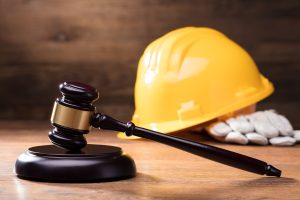
Britain kept many European laws after Brexit, but this could be about to change. The EU Law (Revocation and Reform) Bill is currently working its way through parliament. If it passes, all laws originating in Europe will be repealed on 31st December 2023 unless they have been incorporated into UK national law.
This would have huge repercussions for employers. Some of the most significant pieces of H&S legislation are underpinned by EU law, including key parts of the Health and Safety at Work Act, the Manual Handling Operations Regulations and the guidelines covering display screen equipment.
There is no guarantee that the bill will go through in its current guise, but we’ll certainly be keeping an eye on it. Watch this space for updates.
Tree safety: what you need to know as an employer
You may remember the terrible story of a six year old being killed by a falling tree in September 2020. She was playing with friends in a school playground. The tree had rotted, causing it to fall on the girl. She was rushed to hospital but died the next day.
This may seem like a freak accident, but negligence was also a factor. An HSE investigation found that Newcastle City Council had failed to identify the decaying tree, and had taken no steps to reduce the danger. Last month, the Council was prosecuted and fined £280,000.
This tragedy highlights the importance of tree safety in public spaces. If your workplace contains trees, you have a duty to protect employees, customers and passers-by from falling debris. Here’s what the law says, and what you can do to reduce the risk.
On a basic level, tree safety is covered by The Health and Safety at Work Act. This requires employers to reduce workplace risks “as far as is reasonably practicable”. This doesn’t mean inspecting every tree, but it does mean being aware of high-risk areas and taking the necessary steps to mitigate the danger.
This is where a second piece of legislation comes in. The HSE recommends that duty holders put a system in place “to control risks from trees to their employees, contractors and members of the public”. In order to be effective, this system should be designed in accordance with the Management of Health and Safety at Work Regulations 1999.
As a minimum, wooded areas should be split into two zones. Zone One refers to areas that are regularly accessed by the public, such as parks, picnic areas, playgrounds and car parks. Zone Two covers places that are rarely or never visited.
For areas classified as Zone One, the following kind of steps are advisable:
- Perform regular visual checks on trees to look for signs of instability
- Record the results of these inspections, including details of any defects found and any actions taken
- Put a system in place for requesting specialist help when serious defects are discovered
- Create a way for the public to report damaged trees
- Restrict access to zone one areas during extreme weather
- A system of assessment to ensure measures are carried out
The chances of an accident involving a tree may seem small, but the danger is very real. For help with zoning, tree management or anything else, don’t hesitate to get in touch.
Being ready if an employee suffers a heart attack
Every February, the USA celebrates Heart Health Month, a national campaign designed to raise awareness of heart disease. The event may not have made its way to Britain yet, but it’s still a good prompt to talk about cardiac emergencies at work.
Out-of-hospital cardiac arrests have a survival rate of just 10%, and are responsible for 30,000 deaths a year in the UK. Acting quickly in this situation can mean the difference between life and death, so it’s important to recognise the signs of a heart attack. These include:
- Chest pain that spreads to the arms, neck and back
- Breathlessness
- Nausea
- Sweating
If an employee experiences these symptoms, you should call 999 at once. Help them to sit down and reassure them while you wait for an ambulance.
The most serious form of heart attack is cardiac arrest. This is when the heart stops working completely, causing a person to become unresponsive. If this happens, you should call an ambulance immediately and administer CPR.
You could also consider investing in a defibrillator. These have come down in price in recent years, and can greatly increase the chances of survival in the event of a cardiac arrest.
The law requires every workplace with 25 or more employees to have at least one qualified first-aider, but there’s no harm in training more. Our Emergency First Aid course gives employees the skills they need to deal with heart attacks and other medical emergencies. Give us a call to find out more.
Accreditation of the month – CHAS

Over the next few months, we take a closer look at major H&S accreditations to help you decide which is right for you. Up first – CHAS.
CHAS stands for Contractors Health and Safety Assessment Scheme. It is the UK’s biggest H&S accreditation for contractors, especially those working in the construction industry.
In order to achieve CHAS accreditation, you must demonstrate compliance in 13 areas of risk management. This involves completing an assessment and submitting detailed evidence of your safety practices.
CHAS accreditation is money well spent. Many higher-end customers will only consider bids from accredited contractors, so the financial benefits can be significant. CHAS accreditation also saves you time by eliminating the need to resubmit your H&S credentials with every new bid.
CHAS applications can be exhausting, and there’s no guarantee of success. Luckily, we can help. From evaluating your safety protocols to double checking your submitted documents, we’ll make sure that you get it right on the first try. Give us a call to find out more.
Safety Matters December 2022
The highs and lows of the festive period
Christmas at work can be great fun, but it also presents some unique health and safety risks. From excessive drinking to skeleton staffing, here are a couple of things to watch out for at this time of year.
Don’t lose control of office parties
There’s much to be said for an end of year shindig, thanking staff for their hard work and bringing everyone together. There are, though, limits to what is acceptable. A party that gets out of hand can be physically dangerous, not to mention creating some serious HR problems. The key to avoiding this is planning ahead:
- Talk to employees beforehand and remind them of your expectations
- Consider limiting the number of drinks, and provide food and non-alcoholic alternatives
- Be clear about when the party will finish, giving employees plenty of time to catch public transport afterwards
- Monitor the event and deal with spillages and tripping hazards promptly
Look out for lone workers
From bringing people together to dangers of isolation: many offices will be operating with a skeleton staff over Christmas, and this could mean employees working alone. There are strict guidelines for protecting lone workers, so be sure that you understand your responsibilities if a usually crowded workplace will be staffed by just one person at times. If you don’t already have a lone worker policy, now may be a good time to create one.
For help with these or anything else, don’t hesitate to get in touch.
Back to basics: reducing workplace injuries 
The HSE has released its annual report which includes looking at workplace injuries. Overall, the results paint a mixed picture. Fatalities are down, but injuries have increased by 28%. As well as typically dangerous industries such as construction, there have also been high numbers of injuries in office environments.
If your business has been experiencing more injuries than usual, it might be time to go back to basics. Review your risk assessments to ensure that any changes in the workplace have been accounted for, and inspect all equipment regularly. If the same accidents keep happening, provide a training session on the relevant safety procedures.
A lack of staff, which many industries are experiencing, can also be a factor. If employees are rushing to cover shortages, they are more likely to cut corners. Hiring extra staff may be the best solution but, if this isn’t possible, consider whether you are setting unrealistic targets for remaining employees.
What can we learn from the HSE’s annual report? 
It may not be the most festive activity, but reading the HSE’s Health and Safety at Work Report has become something of an annual tradition. This year’s statistics are particularly interesting, painting a mixed picture of safety in the post-pandemic workplace.
Fewer deaths, more injuries
The good news is that there has been a significant drop in fatal accidents. There were 123 workers killed on the job in 2021/22, compared to 142 the previous year. This decrease is encouraging, but it has been offset by a large increase in work-related ill health. An extra 100,000 people reported a new or long-standing illness this year, bringing the total up to 1.8 million.
There seem to be several reasons for this. Non-fatal injuries have increased significantly, rising from 0.4 million to 0.6 million. The causes of these injuries remain largely unchanged, with trips and falls, heavy lifting and collisions with moving objects accounting for the majority of injuries in both years. As usual, those working in agriculture and construction are the most at risk.
The ongoing effects of COVID-19 are also a factor. The research revealed 123,000 workers reported a case attributed to workplace exposure, an increase of 30,000 since last year. However, there is evidence that infections were less likely to have long-term effects. Last year, 645,000 workers reported a long-term illness caused or exacerbated by COVID. This year, the number was 585,000.
Mental health is a major concern
The biggest change, though, is a marked increase in mental health complaints. The number of workers suffering from stress, depression or anxiety has risen from 822,000 to 914,000. This is such a big jump that, in the press release accompanying the report, the HSE has flagged it as a particular concern.
Improving employee mental health will be the biggest challenge of 2023, especially in sectors such as health and education where these increases have been most dramatic.
As well as the human cost, the report also highlights the economic impact of these changes. Over twelve months, 36.8 million working days were lost to poor health last year, costing businesses an estimated £18.8 billion. With the economy still struggling, there will be a strong financial incentive to improve safety in 2023.
If you are impacted by these worrying trends, it’s not too late to turn things around. For health and safety advice tailored to your business, don’t hesitate to give us a call.
Focusing on mental health in 2023 
There’s a lot to digest in the latest HSE report, but perhaps the most concerning finding is the sharp rise in mental health conditions among UK workers. There were 914,000 cases of work-related stress, depression or anxiety reported in 2021/22, an increase of nearly 100,000 since last year.
Reducing these numbers should be a priority for all employers. No-one wants to see their employees in distress; and on top of this, poor mental health also has serious implications for productivity. In the last 12 months, 17 million working days were lost to mental health complaints.
We’re sure you want to help, but this can be easier said than done. Research shows that over half of employers want to do more to improve employee well-being, but many don’t know where to start.
Openness is key when it comes to mental health. Staff need to feel that they can talk about their struggles frankly and without judgement. Try to schedule regular one to ones to discuss these issues, and be ready to provide information on external sources of support. If employees are stressed, you may need to adjust workloads to reduce the pressure. This also means tackling the kind of company culture that encourages excessive overtime.
Training can play an important role, too. Mental health courses can work wonders by ensuring that there is always someone in the office with the skills to help. We have a spotlight on such training elsewhere in the newsletter. If you’d like to book a session, don’t hesitate to get in touch.
Service of the month: mental health training
We all know that the pandemic had a serious effect on the mental health of UK workers and, with the cost of living crisis on everyone’s minds, these problems are only getting worse.
Things are especially bad in the construction industry, with a male suicide rate of more than three times the national average. Other industries are suffering too, with almost a million cases of stress, depression and anxiety reported to the HSE in the last 12 months.
This might sound like a downward spiral, but at least attention is being drawn to the issues; and there are positive steps you can take.
We offer a range of online and in-person mental health training courses, giving you or employees tools to address poor mental health in the workplace.
For businesses looking for a starting point, our Wellbeing In Work range of training is the place to look. There are a variety of options from mental health first aid to well-being workshops tackling sleep, smartphone use and emotional agility.
For more information please email info@hsdept.co.uk or visit our website.
Safety Matters October 2022
COVID 19: Where are we at in the workplace?
Earlier this year, the government withdrew the law requiring businesses to include COVID-19 in their risk assessments. This is an indicator that the worst of the pandemic has passed, but it doesn’t mean that the risk has disappeared completely.
There’s still room for a common sense approach to the virus. As we begin to spend more time indoors, it’s a good idea to remind yourself of the public health advice for workplaces:
- Allow sick employees to work from home if possible
- Improve ventilation by opening doors and windows
- Clean surfaces regularly, especially in communal areas
There are certain jobs where COVID-19 is considered an occupational hazard. If your employees care for infected patients or work with the illness in a research capacity for example, COVID-19 will fall under COSHH (Control of Substances Hazardous to Health 2002 Regulations). In this case, you must continue to include COVID-19 in your risk assessments.
RIDDOR (Reporting of Injuries, Diseases and Dangerous Occurrences Regulations) may also apply, but only in certain situations. There is no need to report workplace infections unless they are the result of occupational exposure, or occur as the result of a workplace accident.
England, Wales and Scotland each have separate advice for protecting people who may be at higher risk.
Is your business ready for bad weather?
Colder weather is on the way, bringing with it familiar seasonal health and safety challenges. Wind, rain, ice and darkness all have the potential to cause serious accidents, so it’s a good idea to review your risk assessments as autumn takes a grip. Here are some simple steps you can take to keep everyone safe:
- Make sure that there is sufficient lighting on all outdoor paths to illuminate tripping hazards. If necessary, walk the paths around your workplace at different times of day to check they are safe.
- Introduce procedures to remove dead leaves from paths at regular intervals.
- Install canopies or slip-resistant paving in outdoor areas.
- Put matting around entrances.
- Put up signs to discourage employees from taking shortcuts over grass or dirt.
- Keep a supply of grit on hand and use it whenever low temperatures are forecast.
For winter safety advice tailored to your premises, don’t hesitate to give us a call.
Safe systems of work: what you need to know
There are many reasons for accidents in the workplace, but a lack of preparation is a common theme. HSE investigations into serious injuries or deaths frequently cite the absence of a safe system of work (SSOW) in their findings. This often stems from the fact that an initial risk assessment was not completed properly.
In a recent example, a transportation company was fined £480,000 after a driver fell to his death from a lorry that he was unloading. The HSE found that the company had no safe system of work in place for working at height on vehicles. Because an insufficient risk assessment had been carried out, the dangerous nature of the task had not been identified. This meant that no precautions had been taken to reduce the risk.
In another case, a plastic manufacturing company was fined £200,000 after an employee suffered serious hand injuries while cleaning a piece of machinery. Once again, the HSE found that the company had failed to carry out a suitable and sufficient risk assessment or implement a safe system of work for the task.
We’re sure that you’re keen to avoid similar incidents, but you may be unsure of how to go about creating a safe system of work. You can think of an SSOW as part two of your risk assessment, applicable where a risk has not already been sufficiently controlled. Your first priority should be to eliminate risks completely but, in cases where this is not possible, this is where a safe system of work comes in.
For every task that carries a risk which cannot be reduced to a suitable level by the controls in the risk assessment, you should do the following:
- Identify each individual hazard associated with the task.
- Create step-by-step instructions for performing the task in the safest way possible, using annotated images and diagrams if necessary.
- Make these instructions easily accessible to all staff.
- Check that employees are following the guidelines and encourage them to flag up anything that could be improved.
- Update your SSOW if the nature of the task changes significantly.
You may find it useful to bring in outside help for this process. An external health and safety adviser can often spot risks that are hard to see from within a company. They may also find it easier to collaborate with your staff, as employees are sometimes more willing to raise concerns with a neutral party.
We have years of experience in creating and improving safe systems of work. Whatever your business, don’t hesitate to get in touch.
Health and safety training – don’t forget the basics

All employees should be given information on the hazards they might face, how to reduce these risks, and what to do in case of an emergency. If any of your employees use specialised equipment, you are also required to give them specialised safety training. An example of this would be a forklift driver working in your warehouse.
Remember that some employees might need extra training. Examples include:
- People changing jobs or taking on new responsibilities
- Young employees receiving health and safety training for the first time
- More experienced employees who have grown used to outdated safety procedures
- Employees in senior roles who have to manage the safety of others as well as their own
Training new recruits is vital, but it’s just as important to update the knowledge of existing staff. Regular refresher courses are a good start, but you should also be ready to provide spontaneous training whenever there is a major change in working conditions.
Finding the time for all this training can be challenging, but we can help. Our online learning portal offers accredited courses on everything from mental health awareness to display screen equipment safety. Our CPD-certified video courses provide essential information in 30 minute chunks, making it easy to fit them into the working day. Get in touch to find out more.
Myth busters: Public transport
After a summer of cancelled flights, rail strikes and ticket inflation, many people are at their wits’ end with public transport. Sometimes, people try to pin the blame erroneously on health and safety legislation. We want you to stay vigilant against H&S scapegoating, so here are some vintage public transport myths that have driven us to distraction.
Health and safety gets thrown under the bus
A bus driver refused to stop at certain stops along a diverted route. When passengers complained, the driver claimed that this was due to health and safety. This is a classic example of H&S being used as a catch-all excuse for disruption. Encouragingly, the bus company later promised that its drivers would start giving better explanations to passengers.
Just not fare
In a case that has cropped up several times over the years, non-travellers were told that they couldn’t access a railway platform to see off friends and family. There are a number of good reasons why a station might enforce this policy. It could have been an attempt to combat fare dodging, or an effort to reduce platform crowding at peak times. Whatever the reason, simply saying “health and safety” is not an adequate explanation.
Safety Matters August 2022
What can we learn from the annual workplace fatality statistics?
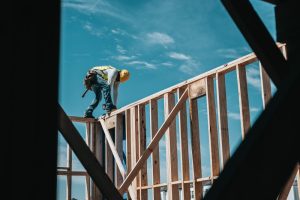
In the 12 months to March 2022, 123 employees were killed in work-related accidents. The most dangerous sector was construction, accounting for 30 deaths. This was closely followed by agriculture and manufacturing with 22 deaths each. This is similar to the data from previous years.
Also similar were the most common causes of death. Falls from height remain the biggest cause of workplace fatalities, followed by collisions with moving vehicles and being struck by flying or falling objects.
In terms of age and gender, men and older employees remain the most at-risk groups. 94% of all fatalities were male, and a quarter were over 60. For workers over 60, the death rate per 100,000 workers was four times higher than the average. Once again, this is similar to data from previous years.
Although any death is too many, these figures should be viewed in the wider context of workplace fatalities over time. Since 1981, annual fatalities have fallen by 75%. In the last 20 years, they have halved.
This just goes to show how effective H&S legislation can be. It’s no coincidence that this trend began after the introduction of the Health and Safety at Work Act 1974, and that deaths have continued to drop as more laws have been introduced to protect workers.
These statistics don’t just cover employee fatalities. The HSE reported that 80 members of the public were also killed in work-related accidents, with the vast majority of these deaths occurring in the service sector.
Although this represents a drop from the pre-pandemic average of 96, it is a reminder that there is still work to be done to keep the public safe.
H&S legislation makes it every employer’s duty to protect the general public as well as their own workers. If your work involves contact with non-employees, they should be factored into your risk assessments. If risks cannot be avoided altogether, you should ensure that the public are given adequate warning of the dangers.
If you need help creating a public risk assessment, or are having trouble with any other area of H&S, don’t hesitate to give us a call.
Drugs and alcohol policy is an H&S issue as well as an HR one

- Substance abuse can impair decision making and slow reaction times. This is especially dangerous when driving or operating machinery.
- Drug and alcohol misuse can lead to low productivity, forcing other employees to rush their work.
- Employees who abuse drugs and alcohol are more likely to behave recklessly or violently towards their co-workers.
In order to prevent substance abuse, it’s important to recognise the early warning signs. These include:
- Regularly missing shifts
- Sudden changes in behaviour
- Unexplained dips in productivity
- An increase in accidents or near-misses
- Violent outbursts and other conduct issues
Remember that none of these behaviours is a sure sign of substance abuse. They could just as easily be caused by stress or illness, so don’t jump to any conclusions.
Work with your employees to create a drugs and alcohol policy, clearly setting out what is and isn’t acceptable. Some roles are safety critical. Substance abuse by drivers, heavy machinery operators and people in caring roles may all lead to particularly severe consequences.
You could also consider periodic drug testing, but this is a complex step and must be done with your employees’ consent.
What are the top risks in an office workplace?
With workers returning to the office in their millions, it’s a good time to refresh your memory on the main health and safety risks. Here are four things to watch out for, and what you can do to keep your employees safe.
Slips, trips and falls – Slips, trips and falls are the most common cause of workplace injury in the UK. Be sure to clean up spills promptly, and put down wet floor signs if necessary. You should also pay attention to outdoor areas, removing leaves from paths in autumn and gritting walkways in winter.
Poor lighting – As well as increasing the risk of falls, poor lighting can contribute to long-term eye strain. You should ensure that all working areas are sufficiently lit, and keep lighting spares on hand.
Heavy lifting – Manual handling causes over a third of workplace injuries. It’s important to train employees in the proper way to lift objects, and ensure that they are never asked to lift anything beyond their capability
Electrical hazards – Damaged or overloaded electrical outlets can cause electrocution and lead to electrical fires. Make sure that all electrical equipment is inspected frequently, and test fire alarms on a regular basis.
A little creativity goes a long way in H&S

This year’s prize went to Solvay Derbyshire, a chemical engineering company who came up with a safer way to load resin mixing bowls into an oven. Previously, workers had to manually lift the 38kg bowls from the ground. This was identified as a serious ergonomic risk.
Working with an industrial oven manufacturer, Solvay created a floor-level oven with removable handles, allowing employees to wheel the bowls directly into the oven. As well as being safer, this also improves productivity as only one worker is needed to perform the task.
By thinking creatively, Solvay improved safety, increased efficiency and generated plenty of positive PR. If you need help getting an H&S idea off the ground, don’t hesitate to get in touch.
Myth Busters: staying hydrated during a hot summer

Getting carried away
A bar refused to let a customer carry a tray of drinks to their table because they had not been “health and safety trained”. This is, of course, ridiculous, not to mention a little insulting to the customer.
Health and safety legislation does not make reference to training customers, especially for a task that they perform regularly in their own homes. The bar staff might have preferred to carry the drinks themselves, but there was no need to frame it as a legal issue.
Not our cup of tea
In another case, a complainant asked whether a risk assessment was needed to serve tea at a school fete. This is exactly the kind of H&S overreach that puts people off volunteering at such events. A general risk assessment is a good idea for any public event, but there’s no need to create a separate one for each part of the day. Especially not for something as ordinary as serving tea!
Safety Matters June 2022
When equality law and health and safety collide
Sometimes H&S is black and white, but often there is room for interpretation. There are times when health and safety management finds itself in conflict with other areas of the law, as a current dispute may prove to show.
An autistic man is suing Sainsbury’s after the store refused entry to his assistance cat. Assistance dogs are allowed in supermarkets, and Ian Fenn believes that his cat should be no different. Sainsbury’s disagrees, arguing that cats present a greater food hygiene risk.
The outcome of the case remains to be seen. Four years ago, all support animals other than dogs were banned from US flights after a passenger tried to bring a peacock onto a plane. That seems it was pushing the boundaries a little beyond what we have here.
While health and safety cannot be compromised, as we see with our myth-busters it should not be used as a shield for management decisions. That’s not to say this is what’s happening here, but a court case will put scrutiny on the risk assessment to see if the policy is justified.
This ongoing case can remind us to consider the broader impact of health and safety, especially where other legislation like the Equality Act may come into play. A thorough risk assessment, underpinned by common sense and with room for flexibility where possible, can help keep people safe whilst letting the business operate efficiently.
Talking to your employees about monkeypox
You and your employees have probably heard a lot about monkeypox, and some may be worried that another pandemic is on the way. This is an understandable fear, but there is no need to panic.
Monkeypox is a rare infection that causes rashes and blisters. It is thought to have originated in West and Central Africa, and is especially prevalent among men who have sex with men in this current outbreak. It can only be spread through close physical contact, so the transmission rate is much lower than that of COVID-19.
You are extremely unlikely to have contracted the disease unless you have travelled to West or Central Africa, or have had close physical contact with an infected person. If any employees are displaying symptoms, NHS advice is that they should contact a local sexual health clinic.
If worry spreads amongst your workforce, sharing this advice will let them know that you are abreast of the situation, and ready to act if the threat strikes close to home.
HSE advice for protecting pregnant women and new mothers has changed
Pregnant women and new mothers are uniquely vulnerable to certain workplace hazards, and the HSE has updated its guidelines for protecting this group.
The key change is that rather than just consider risks to women of child-bearing age in your general risk assessments, you are now required to complete an individual risk assessment for workers who meet any of the following criteria:
• Are currently pregnant
• Have given birth in the last six months
• Are currently breastfeeding
This risk assessment needs to be completed as soon as a worker tells you they are pregnant. Take into account any ways in which the pregnancy could affect their work, as well as any medical recommendations made by their doctor or midwife.
There are a number of common dangers to consider. These include:
• Postural problems caused by sitting or standing for long periods
• Injuries caused by heavy lifting
• Mental and physical fatigue
• Working alone or at height
• Exposure to strong vibrations
• Exposure to harmful substances, especially as PPE may not be suitable for pregnant women
If you identify a risk, try first to control it by adjusting the employee’s working conditions. If this isn’t possible, see if you can find suitable alternative work. If there is no way to avoid the risk, the worker needs to be suspended on full pay until it is safe for them to return.
Risk assessments need to be updated as the pregnancy progresses, or if working conditions change significantly. If you need help, don’t hesitate to ask.
Managing fatigue in the workplace
We’ve all seen the signs on the motorway warning us that tiredness can kill, but driving isn’t the only activity that can be impaired by fatigue. From Chernobyl to Exxon Valdez, some of the worst industrial accidents in history have been the result of poor judgement brought about by tiredness.
You may not be running a nuclear power plant, but tired employees are still a major risk. With fatigue-related accidents costing the UK economy up to £240 million a year according to the HSE, it pays to make sure your staff are well-rested.
Fatigue can affect anyone, but some employees are more vulnerable than others. These include:
• Shift workers, especially those whose shift patterns vary from week to week
• Drivers who spend long periods of time on the road, particularly at night
• Workers who operate machinery for long stretches
• Employees with medical conditions such as MS, ME, Fibromyalgia or certain sleep disorders
• Workers undergoing medical treatment or taking medication that causes tiredness
As an employer, you are required to manage fatigue in the same way as any other workplace hazard. This means taking it into account when creating a risk assessment, and doing whatever you can to reduce the risks.
The HSE has published a guide to managing fatigue. Although it mostly deals with shift work, many of the principles can be applied more generally. These include:
• Giving employees a manageable workload
• Ensuring that workers take regular breaks
• Avoiding scheduling dangerous or monotonous work during the night or towards the end of a shift
• Limiting consecutive working days and giving employees plenty of time off between shifts
• Increasing supervision at times of the day when fatigue is most common
• Monitoring overtime and shift swapping to make sure employees aren’t working too much
• Discouraging workers from taking second jobs if possible
As well as introducing specific safety measures, it is also important to create a culture of openness around fatigue. Make it clear to employees that there is no shame in being tired, and try to discourage the idea that workers should “power through” when they’re feeling fatigued. You can also set an example yourself by taking regular breaks and not working an excessive amount of overtime.
We’re sure you want your employees to be as well-rested as possible, but changing old habits can be tricky. If you’re struggling to manage fatigue in the workplace, we’re always happy to offer advice and help you design and launch new procedures.
Myth Busters: Enjoying the summer safely (and sensibly)
As the temperature is on the rise, we don’t want to see the same for health and safety scapegoating. Here are two examples that got people needlessly hot under the collar.
Walking a fine line
A seventeen year old was told that she couldn’t take part in a high wire activity at an adventure park because she was wearing a stud earring. The park staff said that this rule only applied because she was under 18.
This is a mixed message, and not accurate at all. Taping earrings is an acceptable alternative to removing them, so the girl should not have been refused on this basis. This applies to children and adults, so there was no reason to mention her age.
Chinese whispers
In another case, a mother was told that she couldn’t bring her baby onto a river boat ride because “babes in arms” were not allowed. However, the ride operator allowed toddlers to be carried onto the boat as long as they were old enough to walk.
We have some sympathy for the operator here. The HSE surmised that they were correct about “babes in arms”, but had misunderstood the reason for the rule. It was intended to stop anyone being carried onto the boat for stability reasons. If they had made the older children walk onto the boat, there would’ve been no problem.
It highlights the importance of good communications for health and safety, as you could liken this to a game of Chinese whispers between those reading the safety manual and the ride operators.
Safety Matters April 2022
What does “Living with COVID”
mean for workplace H&S?
In recent weeks, we have seen a change in the government’s approach to COVID-19. The focus has shifted towards a long-term strategy for living with the virus, favouring personal responsibility over legal mandates. As an employer, you will have to balance this against your legal duty of care towards employees and other people on site.
With this in mind, the government has published a new guide to reducing the spread of respiratory infections at work. Employers in England are no longer required to mention COVID-19 in their risk assessments, but there are still some steps you can take to keep infections down:
- Encourage employees to get vaccinated, and make it easy for them to do so. This could mean rearranging shifts or arranging cover so that workers can make it to a vaccination appointment.
- Keep the workplace well ventilated by opening doors and windows whenever possible. If you use a mechanical ventilation system, try to ensure that it is bringing in fresh air rather than recirculating air from indoors.
- Clean all workspaces thoroughly, especially surfaces that are frequently touched. Provide staff with all necessary cleaning supplies, including hot water, soap and hand sanitiser.
- Consider the needs of employees who might be at greater risk from COVID-19 or other respiratory illnesses. The government has issued specific guidance for this group, which you can access and make available to your staff.
You no longer need to report workplace outbreaks of COVID-19 to the government. However, if you find that you are experiencing high rates of respiratory illness, you may wish to review the guidance and see if there is room for improvement.
What about the rest of the UK?
The above guidelines apply to England. Businesses in Wales are still required to carry out a COVID-19 risk assessment, and to keep visitors informed of the safety precautions they are taking. Welsh businesses are also encouraged to allow high risk staff to work from home if possible.
In Scotland, the legal requirements are the same as in England, but with a greater emphasis on vigilance. A COVID-19 risk assessment is not mandatory, but it is strongly recommended. The Northern Irish government also recommends carrying out a risk assessment before allowing remote workers to return to the office.
For some employees, moving to less stringent restrictions will cause unease. It is important to be mindful of their concerns, and to do everything you can to reassure them that their safety remains a priority.
If you need any advice on getting the balance right in your business, we’re here to help.
Hospitality: Don’t forget to check your
outdoor installations this summer
The weather is getting warmer, and pubs and restaurants will be hoping for a busy summer. With the Commonwealth Games and the Queen’s Platinum Jubilee approaching, outdoor areas are likely to be packed throughout the season.
This is great news if you work in hospitality, but it does raise some safety issues. The HSE recently took the step of issuing a statement reminding businesses to carry out checks on outdoor electrical installations.
They recognise that there will be new installations which need to be fitted correctly, or older ones which are brought out of storage and require inspection for damage such as water ingress.
There are some simple steps you can take to ensure that your equipment is safe:
- Only install lights and heaters that have been designed for outdoor use.
- Check all equipment regularly for water damage.
- Arrange for a competent person to carry out all installations.
- Consider switching to low voltage or solar equipment.
- Make sure that your installation can accommodate all electrical equipment without the sockets or circuits becoming overloaded.
- Make sure that all sockets are in good condition and placed in locations where they can’t be damaged by customers.
- Switch off electricity before connecting new equipment.
- Keep heaters away from flammable materials.
- Keep packaging for winter storage, and always store equipment in a cool, dry place.
We hope good electrical installation to your outdoor spaces contributes to a safe and profitable summer. If you have any questions about health and safety in hospitality, don’t hesitate to give us a call.
Beware the consequences
Earlier in April, Sainsbury’s was fined £1 million after a customer was injured by one of its pandemic queuing systems. The customer suffered serious facial injuries after she drove her mobility scooter into a length of baler twine outside the supermarket’s Newbury branch.
The investigation found that Sainsbury’s had failed to perform any sort of risk assessment before installing the queueing system. In particular, it had not considered how the measures could affect disabled or visually impaired customers.
The pandemic was a stressful time for retailers, and many were forced to implement new safety measures at short notice. But this doesn’t absolve them from broader responsibility even if their situation attracts some sympathy.
The case highlights the importance of considering all foreseeable consequences/risks when planning new or changing activities. Even if you are creating measures in response to a specific danger, you mustn’t let this blind you to others.
8 Basic Health and Safety reminders
Even if you have more complex health and safety needs, it is a good idea to check in and make sure you are getting the basics right from time to time. Here are eight simple steps that every employer should take:
- Display the official HSE health and safety poster. Put this in a prominent position where it is visible to everyone. Alternatively, you can supply the equivalent leaflet to each staff member.
- Appoint a competent person to help oversee and manage workplace health and safety. This person should be competent and have the knowledge and skills to identify hazards and take steps to mitigate and control them.
- Make sure you have a fully stocked, in date first-aid kit, and appoint at least one member of staff to be in charge of it.
- Create a health and safety policy outlining your responsibilities as an employer, and the duties of your staff. If you have more than five employees, this must be written down.
- Report serious accidents and illnesses required by aRIDDOR. If you have more than ten employees, you must also record accidents in an accident book.
- Provide enough toilets, washbasins, and rest areas for your employees. Keep these areas clean, well-lit and properly ventilated, and ensure there are facilities for those with disabilities.
- Take out employer’s liability insurance to cover yourself in the event of an employee claim.
- Create detailed risk assessments, and update/review at least annually, or when something changes.
Remember that if you need help, we’re here to help.
Myth busters: Party poopers in the park
Parks are the perfect way to get some fresh air, but they also seem to be a magnet for unnecessary health and safety rules. From daffodil butchery to celebrity scandals, here are a couple of the worst offenders.
Where have all the flowers gone?
A Cornish town council removed more than 1,000 daffodils from a play area, citing fears that they could be poisonous to children. Locals were furious, calling the decision “preposterous” and “an act of vandalism”. Although it’s true that daffodils contain some toxic substances, removing them completely seems like an overreaction. The flowers had been there for years without causing any harm, so perhaps it would have been better to trust parents to keep their children from eating them.
This park has gone to the dogs
In a case that made national news, wardens at a London park refused to help popstar Will Young search for his lost dog. The singer asked several wardens if they could drive him around the park, but was refused on the grounds of health and safety. We understand Young’s frustration. While there may indeed have been legal reasons that the wardens couldn’t drive him around, it would’ve been better to explain these rather than repeating the tired old “health and safety” excuse.
Safety Matters February 2022
PPE laws are changing. Here’s what you need to know…
One of the side effects of the pandemic was an increased awareness of the importance of PPE in the workplace. There are already strict rules covering PPE, but these are changing in the coming weeks.
On 6th April, The Personal Protective Equipment at Work (Amendment) Regulations 2022 (PPER 2022) will come into force. This is an amendment to the existing law (PPER 1992), extending its coverage to a wider group of workers. Whether this change affects you or not, it’s a good opportunity to refresh your understanding of PPE legislation.
What is changing under the new law?
PPER 2022 does not change your responsibilities as an employer. It only changes application. Under the new amendment, your duty of care will be extended to include limb (b) workers.
The HSE defines a limb (b) worker as someone who is “registered as self-employed but provides a service as part of someone else’s business.” These workers may also be called dependent contractors. They are typically gig economy workers, employed through a third-party platform rather than a contract with your company. A good rule of thumb for spotting a limb (b) worker is that they usually carry out the work in person, and do not have the option of sending someone else in their place.
What are my responsibilities?
PPER makes it the duty of employers to provide PPE in any situation where there is a risk of physical harm, “even where engineering controls and safe systems of work have been applied”. Examples include:
- Hard hats to protect from falling debris
- Goggles to protect the eyes from dust or dangerous chemicals
- Masks to prevent the breathing of contaminated air
- Gloves to prevent contact with corrosive materials
- Ear plugs to dampen loud noises
The law sets out a number of guidelines for employers when providing PPE:
- PPE should only be used as a last resort (explore other ways to reduce or eliminate the risk first)
- PPE must be provided free of charge
- PPE must be CE or UKCA marked, and should be the correct size and weight for the user
- Staff should be trained to use PPE correctly, and to recognise any faults with their equipment
- Reusable PPE must be kept in good condition and inspected regularly
- Replacement PPE should be kept close at hand
If this raises any questions about your current PPE responsibilities or future ones, don’t hesitate to get in touch.
How new technology can improve health and safety
When we talk about technology in the workplace, our first reaction is often negative. Many of us associate modernisation with job losses, but this is only part of the story. Technology has a lot to offer, and this is especially true when it comes to health and safety.
Falls from height are still the most common cause of death in UK workplaces. In the near future, drones could be used to access certain dangerous areas. Not only would this protect workers from serious injury, it would also protect employers by helping ensure compliance with the Working at Height Regulations.
Lone workers are another vulnerable group that could be protected by new technology. Lone worker apps can be installed on employees’ phones, giving them access to GPS services. Wearable panic alarms can also be given to the most isolated or high-risk workers. These can monitor an employee’s breathing or heart rate, automatically calling for help if the user falls unconscious.
Technology can also help workers in more typical environments. Check-in technology was useful during the pandemic, as it allowed employers to keep track of remote workers. The same technology was also used for desk booking, helping to prevent overcrowding in the office.
Looking further ahead, we may see an increased use of artificial intelligence to improve safety. AI will be able to monitor the working environment and flag up new risks as soon as they appear. It could also help to enforce H&S rules, e.g. by only allowing workers into certain areas if they are wearing the necessary protective equipment.
It’s time to prioritise mental health in the construction industry
The suicide rate amongst construction workers is over three times higher than that of other occupations. Every day in the UK, two people working in construction die by suicide.
There are several suggested reasons behind this. 86% of construction workers are men, a group traditionally more reluctant to discuss their problems. There is also a culture of “banter” on many building sites, making workers afraid to show weakness for fear of ridicule.
The nature of the work itself may also be a factor. Extreme time pressure, a lack of job security and extended periods away from home can all contribute to poor mental health.
The issue is starting to be addressed. Several large contractors are now employing mental health first-aiders. Meanwhile, the Lighthouse Club charity has also launched a twenty-four-hour support service for construction workers struggling with their mental health.
If you would like to do more to support the mental health of your workers through your health and safety policies, please ask us.
What does the Building Safety Bill mean for you?
As you are probably aware, The Building Safety Bill is currently working its way through parliament. In England, it will create a new branch of HSE called the Building Safety Regulator. This will perform three main functions:
- Ensuring that buildings are safe
- Encouraging environmentally friendly building practices
- Implementing a new regulatory framework for high-rise buildings
The Act will only cover buildings classified as high rise. These are buildings that contain seven or more stories, or are more than 18 metres tall, which either contain two or more residential units, or have been designed or constructed as a hospital or care home.
If you own or operate a high-rise building, your responsibilities are likely to change. You will have to nominate an accountable person and a building safety manager. The accountable person is in charge of preventing risks such as fire, while the building safety manager will help with the everyday safety of the building. Either of these roles can be performed by an individual or an organisation.
You will also need to create a safety case report. This is a document that outlines your building’s fire and structural hazards, as well as the steps you are taking to mitigate them.
Give us a call if you’re unsure about any aspects of the new Act.
Myth busters: spring edition
Spring is on the way and animals are not alone in coming out of hibernation. After lying dormant all winter, some persistent health and safety myths may awaken. In the spirit of spring cleaning, here are a couple that need to be scrubbed away.
A host of trampled daffodils?
The parks department of a local council removed a set of wooden canes from a village green. The canes were designed to protect daffodil bulbs, but a member of the public complained that they could cause injury if somebody tripped. The HSE deemed this an overreaction. The risk of injury is far too low to be considered a health and safety issue, but the risk of daffodils being trampled is very real!
What a green waste!
In another case, a group of residents had transformed their street into a communal garden. The council initially praised the project, only to later demand it be removed for “health and safety” reasons. The real reason probably had something to do with highways law, but even here there is room for compromise. Rather than issuing a blanket ban on the garden, the council could have had a proper conversation with the residents about ways to preserve the garden without violating the law.
Safety Matters December 2021
Asbestos safety is still as important as ever
Although it has been illegal to install since 1999, there are still an estimated six million tonnes of asbestos in UK buildings. Over 5,000 workers died from asbestos exposure in 2019, making it the biggest cause of occupational death in the country.
Because the risks are so great, the rules around asbestos removal are extremely strict. The HSE will not hesitate to prosecute those who fail to comply, as a recent case demonstrated.
A school and a maintenance contractor in County Durham were fined a total of £5,000 for exposing several people to asbestos fibres. Asbestos in the school’s ceiling was disturbed while workers were installing a new heating system.
The HSE investigation found that both parties were culpable for failing to refer to the existing asbestos register or the building’s management plans. Doing so would have alerted them to the asbestos, allowing them to take the necessary precautions. It is estimated that 80% of schools contain asbestos.
If you are the duty holder for a non-residential building (although including shared areas within multi-occupancy buildings like purpose built flats), it is your duty to identify if asbestos is present; record any presence, its condition and type; assess risk of exposure; prepare and implement a plan to manage the risk; and inform contractors of the presence of asbestos before work begins.
Contractors must then ensure that nobody is exposed while the job is underway. Contractors must also provide employees with adequate training in asbestos safety.
Asbestos regulations are too important to get wrong. If you’re unsure, don’t hesitate to get in touch.
What does Plan B mean for offices?
With the arrival of the Omicron variant of COVID-19, the government has announced the implementation of Plan B measures. Facemasks are now compulsory in most public spaces, and vaccine passports are required for entry into some large events. There is some variation in devolved nations, but everywhere is tightening up.
The government has also reintroduced the work from home directive. Any office workers who can work remotely should do so. Hopefully this will be less of a shock to your employees than it was the first time.
However, you should still take steps to ensure that remote workers’ health and safety is supported. Regular check-ins are important for your employees’ mental health, especially over the Christmas period. Ensure that their workstations comply with display screen equipment rules, that they can sit with a good posture and there are no other hazards.
If you still have workers in the office, you should also update your risk assessment, to reference the new variant, current control measures, testing and isolation requirements. Make sure that cleaning measures are still in place, that ventilation is adequate and all opportunities for social distancing are explored. If you need help, feel free to ask.
What does the law say about pest control?
A pest infestation is a major health and safety issue, birds, insects and especially rodents can spread viruses and bacteria, leading to serious illness. For this reason, pest control is a legal obligation for employers. This is covered by several pieces of legislation:
- The Health and Safety at Work Act 1974 makes it the duty of employers to remove health hazards from the workplace wherever possible.
- The Prevention of Damage by Pests Act 1949 gives local authorities the power to compel land owners and occupiers to remove rats and mice.
- The Food Safety Act 1990 makes it the duty of any business that handles food to prevent contamination by pests.
The law may compel you to deal with pests, but it can also limit your options for doing so. This was recently demonstrated in Bath, where the council is struggling to solve the city’s sea gull problem. A new system has made it impossible to remove nests without applying for permission from Natural England. With fewer nests removed, gull numbers have soared.
The problems in Bath stem from the fact that herring gulls are an endangered species. This is unlikely to be an issue when dealing with rodents or insects, but there are still some relevant laws to consider:
- Pesticides and insecticides are covered by COSHH. Pesticides are also explicitly covered by the Control of Pesticides Regulations 1986. These substances must be used sparingly and only in a way that doesn’t endanger humans or non-target species.
- Before Brexit, biocides (products designed to kill or deter living things) were regulated by the EU Biocidal Products Regulation (EU BPR). On 31st December 2020, this was replaced by the GB Biocidal Products Regulation (GB BPR). Most aspects of the old law have been copied across to the new legislation, but there are a few key differences. These will probably only affect companies who sell or import biocides, but it’s worth checking that the products you are using are still legal.
As with most health and safety issues, prevention is better than cure. Taking steps to avoid a pest infestation will save you a lot of trouble in the long run. You should clean eating areas regularly and make sure that no food is left out overnight. Waste bins should be emptied every day and rubbish should be stored in closed containers. You should also inspect the building regularly for gaps and holes that could allow small animals to enter.
Addressing back to work anxiety

Even if some of these fears are unfounded, rising stress levels are a health risk in themselves. Widespread anxiety in your workforce could damage productivity and make it harder to retain employees. In extreme cases, it could even lead to workers being put on long-term sickness leave.
Worryingly, it seems that much of this anxiety is caused by a lack of trust between staff and employers. 72% of workers said that they were not confident in their employer’s ability to keep them safe.
The best way to counter this is to involve your staff in the health and safety process. Asking for their input when creating your risk assessment will ensure that their concerns are taken into account. You should also consult them on any new safety measures to make sure that they work in practice as well as in theory.
Once new rules have been agreed, provide the necessary resources to help colleagues follow them. This could be a formal training session, or just some posters and flyers to serve as reminders. It is also important to lead by example. Be sure to follow health and safety guidelines yourself and enforce new rules consistently. This will show staff that you take their safety seriously.
Myth busters: January sales edition
The January sales are fast approaching and many stores are hoping for a busy start to 2022. As the nation’s bargain hunters get ready for action, we thought we’d take a look at some retail-related health and safety myths.
Something smells fishy
A store stopped giving out empty “tester” perfume bottles, much to the disappointment of a customer. When a complaint was raised, the store blamed “health and safety” for the decision.
This is false. There is no health and safety law prohibiting the distribution of empty perfume bottles. Instead, the decision was probably related to the store’s waste and recycling policy. Explaining this to customers would’ve been more constructive than scapegoating health and safety legislation.
Water terrible decision
In a bizarre case, a lady who had fainted in a shop was told by staff that she couldn’t have a glass of water “for health and safety reasons”. This is, of course, ridiculous. There is no law against bringing a customer a glass of water, and it is certainly not a health and safety issue. In fact, given that the customer had fainted, refusing her water was a far more dangerous choice.
Safety Matters October 2021
Stay safe this autumn
After one of the warmest Septembers on record, autumn is well and truly here. With longer nights and colder, wetter days comes a familiar set of health and safety challenges. Here’s a reminder of some of the things to watch out for.
Slips and trips are the most common cause of major injury in UK workplaces, especially during colder months. Wet leaves can build up on paths and invisible patches of ice can form overnight. To make matters worse, the shorter days mean that employees often arrive and leave in the dark.
Preventing slips and trips is an ongoing process. You need to be vigilant about spotting hazards and removing them as quickly as possible:
- Ensure that there is sufficient lighting in outdoor spaces. It’s a good idea to walk the paths around your workplace at different times of the day. This allows you to spot any poorly lit areas.
- Keep an eye on weather forecasts. If temperatures are set to fall below freezing, be sure to take action promptly. Grit any pedestrianised areas the evening before a frost, the morning after and consider closing off treacherous paths.
- Work out a schedule for removing fallen leaves but as a last resort, you could call in a tree surgeon to cut back or remove foliage.
- Use slip-resistant materials when installing paved walkways. You could also fit a canopy over your entrance or upgrade the matting to stop it becoming slippery on rainy days.
Lone workers – The risk of working alone increases significantly when it’s dark. Are your lone working policies and procedures up to date? It is important that management know where lone workers are operating and that there are agreed systems for communication in place.
Technology can help to manage risk. If you have on-site security cameras make sure they are working and cover any isolated areas. Personal GPS trackers, alarms and safety devices are solutions to consider too. Don’t forget about low tech equipment like a torch, high-vis jacket or a whistle.
Driving– If you employ drivers or have staff that drive on company business, you should pay particular attention to their safety at this time of year. Longer hours of darkness and adverse weather present challenges. Make sure that all vehicles are in good condition and that they contain the right basic safety equipment.
Do your drivers require any refresher training for their driving duties? Do the schedules allow enough time for extra caution on the road?
COVID-19 – As we all now know, it is important to provide adequate ventilation to defend against the spread of COVID. This can be tricky in colder weather, as it may be uncomfortable to open windows. Nevertheless it is important, so consider cranking up the heating or relaxing your dress code so that staff can layer up.
Face masks and social distancing rules vary by nation and could change depending on the spread of the virus. Regular hand washing and cleaning of hard surfaces and touch points are key precautions which remain in place. Keep an eye on the latest official guidance to make sure you don’t get caught out.
It is also important to remind staff to carry out Lateral Flow Testing (LFT) when required and to stay at home if they have any flu like symptoms.
How has Brexit affected H&S law?
It’s been ten months since the end of the transition period and so far, the effect on health and safety has been minimal. Whilst in the EU our workplace H&S law was underpinned by the Health and Safety at Work Act 1974. This legislation originated in Britain and therefore remains unchanged.
That said, there are a few notable exceptions. Significant changes have occurred in three key areas, Chemicals, explosives and product safety.
While the new regulations around chemicals and explosives will, in practice, only apply to specific businesses, changes to product safety standards will have wider implications. From 31st December 2021, the old CE safety marking was scheduled to no longer be valid in the UK. It is being replaced by two new UK-specific safety standards.
This requirement has very recently been postponed for 12 months until 1 January 2023, following an industry petition. As we work towards that mandatory date you can purchase work equipment or machinery bearing either the UKCA (UK Conformity Assessed) or UKNI (UK Northern Ireland) mark, but the CE mark will also remain compliant. From 1 January 2023 onwards only the UK marks will be permitted.
If you need any guidance, we’re happy to help.
What does Natasha’s Law mean for your business?
The UK Food Information Amendment, also known as Natasha’s Law, came into effect on the 1st of October 2021 following a persistent campaign by Natasha’s’ parents. The new legislation requires food businesses to provide full ingredient lists and allergen labelling on all foods pre-packaged for direct sale on their premises. A previous loophole meant that businesses and organisations did not have to provide an allergen list for foods classified as pre-packed for direct sale (PPDS). The absence of such labelling led to the death of teenager Natasha Ednan-Laperouse, who died in 2016 after eating a baguette that contained sesame seeds.
If you make and sell food on your premises, you are likely to be affected by these changes. The PPDS category covers any food that is made onsite and packaged before it is given to the customer.
- Sandwiches and baked goods that are made in advance.
- Fast food that is packed before it is ordered, e.g. burgers kept under a heat lamp;
- Free samples that are given out in packaging;
- Meals prepared and pre-packaged in schools, hospitals and care homes.
All PPDS food must be labelled according to strict standards. Labels should include the name of the food and a full ingredients list. This must declare if any of the prescribed 14 allergens are present.
The law does not apply to food that is prepared and packed after it is ordered. Distance selling (selling takeaways online or over the phone) is also exempt from labelling requirements, but allergen information must still be provided.
These are big changes with high stakes. If you have any doubts, don’t hesitate to ask.
The HSE is still carrying out COVID-19 spot checks
Despite nearly all pandemic restrictions being lifted in England (Scotland, Wales and Northern Ireland too, with certain variations) organisations still have a duty of care to keep employees and visitors safe.
To do this, it is important to keep your COVID-secure risk assessment up-to-date and maintain key control measures such as good hand hygiene, cleaning and adequate ventilation in occupied spaces. Continue to talk to your team as they can help you reduce risk effectively.
In order to ensure COVID-security is being implemented, the HSE is continuing to carry out spot checks on businesses. These may be done by calls or visits. They are not designed to catch you out, but to offer advice on keeping colleagues and customers safe. The HSE will support you in making any necessary changes, but may prosecute if you persistently ignore its recommendations.
The best way to prepare for a spot check is to stay on top of current events. Keep an eye on official guidance and update your risk assessment whenever things change. If you’re unsure of anything, don’t hesitate to give us a call.
Myth busters: Autumn edition
The examples of health and safety myths busted by a Health and Safety Executive panel are extensive and this month we have brought up two with an autumnal theme. As always, they highlight health and safety legislation wrongly being blamed for operational decisions within organisations. It is important to call out such instances as they diminish the positive impact that health and safety legislation should have in UK workplaces.
Pin the blame
In one autumn past, a customer at a Royal British Legion shop was refused a pin for their poppy “because of health and safety.” Given that people have been pinning poppies to their clothes for years without suffering any serious injuries, there is clearly no law to ban pins. The occasional pricked finger is to be expected, but this falls far short of being a legal issue!
Safety in numbers
The organisers of a public firework display in Winchester claimed that they had to limit spectator numbers “due to the ever-increasing health and safety regulations that we must adhere to.” This is clearly an attempt to shift the blame for an unpopular decision by the organisers. Despite the stereotypes, health and safety regulations are not “ever increasing.” If the firework display had grown in size then some extra safety precautions may well have been needed. Rather than blaming health and safety though, the organisers should have taken the time to explain this to the public before the event.
Safety Matters August 2021
COVID-19 safety-Spotlight on ventilation
Although mandatory COVID-19 safety measures have now been lifted in England (face coverings are still required in some settings in Scotland and Wales), the government provides detailed suggestions on steps which can be taken to reduce COVID-19 transmission in the workplace. Of course, there is still overarching health and safety law which sets out legal obligation to keep workers safe too.
Many COVID-19 safety steps will be second nature by now – regular cleaning of communal areas, turning people away if they have symptoms, but there is one aspect of recommended COVID-19 safety that has become increasingly prominent – ventilation.
The law has always required employers to provide adequate ventilation. Since the pandemic, this has become even more important.
The main way of spreading COVID-19 is through:
- Close contact with an infected person;
- When someone with COVID-19 breathes, speaks, coughs or sneezes, they release particles (droplets and aerosols) containing the virus that causes COVID-19. These particles can be breathed in by another person.
Social distancing and cleaning can help to reduce droplet and contact transmission, but adequate ventilation is the only way to defend against aerosol transmission.
When thinking about your workplace you will be able to identify two types of ventilation which may be present – natural and mechanical. Natural ventilation is the air that circulates through open doors and windows. Mechanical ventilation refers to fans and ducts that bring in air from outside or recirculated air. In most cases, natural air circulation will be enough to ventilate an indoor space.
Look around and see if you can identify any poorly ventilated areas. Things to watch out for include:
- Communal areas with no open windows or doors.
- Mechanical ventilation systems that only recirculate indoor air rather than bringing in fresh air from outside.
- Parts of the building that feel stuffy or have a bad smell.
CO2 monitors are a good way to gauge ventilation on an ongoing basis.
Also take into account the nature of the space. Larger rooms may require less ventilation because aerosol droplets have more room to disperse. Rooms that are frequently crowded or are home to strenuous activity will need more ventilation. Remember to include non-working areas such as changing rooms and canteens.
If you identify that ventilation needs to be improved, there are several simple actions to try before considering any more costly installations. Natural ventilation can be improved by –
- Opening doors and windows during the day (excluding fire doors).
- Allowing staff to wear extra clothing in winter so that windows can be left open.
- “Purging” unoccupied rooms by opening all doors and windows.
You can improve the efficiency of mechanical ventilation systems by making sure that all equipment is regularly inspected and properly maintained. In addition to this, adjust your system to maximise fresh air intake and prevent recirculation of air.
For advice on ventilation or any other aspect of COVID-19 safety, contact your local H&S Dept.
Pain in the neck!
Musculoskeletal disorders (MSDs) such as back pain and arthritis affect almost 19 million people in the UK. They are also a leading cause of poor health in the workplace, accounting for 30% of all work-related illness and 27% of sick days.
Employees working in physically demanding industries such as construction are at particular risk. These sectors are covered by specific legislation, such as The Control of Vibration at Work Regulations. These make it the duty of employers to limit the damage caused by long-term exposure to vibrations from vehicles, machinery or hand tools.
For most businesses though, the risks will be less specific. MSDs thrive in an office environment. Many injuries are caused by lifting and carrying objects incorrectly. The Manual Handling Operations Regulations require you to carry out a risk assessment on all manual handling tasks that could cause injury. You can also offer manual handling training to show your employees the safest way to perform manual tasks.
Poor posture is another major cause of MSDs. The Health and Safety (Display Screen Equipment) Regulations require you to carry out a DSE assessment on all workstations and provide training to staff on correct posture. You could also consider purchasing an ergonomic chair, keyboard or mouse if an employee is complaining of discomfort due to a medical condition confirmed by their GP.
Workplace fatalities up
The HSE has just published its annual figures on workplace fatalities. A total of 142 workers were killed in the twelve months leading up to March 2021, sadly an increase of 29 compared with fatalities in the previous year. It is worth noting that deaths in 2019/20 were unusually low. The impact of multiple lockdowns, sudden changes in working practices and factors like the furlough scheme in 2020/21 also makes it difficult to compare this year to others.
Unsurprisingly, the mortality rate is much higher in certain industries. As in previous years, construction, forestry and manufacturing accounted for the majority of deaths. This also explains the most common causes of death – falls from height and accidents involving vehicles.
However, this does not mean that other employers have nothing to worry about. Last year there were 11 deaths of those working in administrative or support roles, an increase of three from the previous year. Without going into the details of these deaths, we can say that consistently following good health and safety practice will reduce the likelihood of a serious accident in the office.
Regular risk assessments are vital and must be reviewed on a regular basis e.g. on an annual basis. In these, you should pay particular attention to tripping hazards and heavy objects stored above head-height. You should also make sure that fire safety training is up to date, and that fire exits are unobstructed.
It is worth noting that older employees are disproportionately vulnerable to workplace injuries. Well prepared risk assessments will always reflect the need to identify and protect vulnerable people.
Cross-border H&S in the UK
COVID-19 safety guidelines are being relaxed across the UK, but each nation is taking a slightly different approach. Facemasks are a good example. With a few exceptions, masks are no longer compulsory in England. However, they are still a legal requirement in Scotland and in some settings in Wales.
There are also specific variations when it comes to workplace health and safety. All UK employers are required to carry out a COVID-19 risk assessment, but each nation has published its own guidelines. If you operate in more than one nation, be aware that official advice may differ.
Of course, this is nothing new. National variations in health and safety law have long occurred. For example, Scottish fire safety legislation has been distinct from the rest of the UK since the introduction of the Fire (Scotland) Act 2005.
If you operate across more than one country in the UK and you want to ensure your health and safety policy is compliant in each nation, contact your local H&S Dept.
Mythbusters: summer edition
Last month’s heatwave may have been a bit much for some, but there’s still plenty of summer left to enjoy. As the country enjoys large outdoor celebrations for the first time in months, we thought we’d take a look at some seasonal attempts to scapegoat health and safety legislation.
Leaning lampposts
In a previous summer, a borough council celebrated the Tour De France by hanging 20,000 knitted jerseys on lampposts. It was asked to remove the jerseys by the county council, who claimed that they were compromising the structural integrity of the lampposts. It turned out that the problem was not the jerseys themselves, but the wire used to attach them. So an alternative display method would allow the jerseys to be displayed without health and safety cancelling the celebration.
Brolly bother
In another unusual turn of events, concertgoers were told that they couldn’t bring umbrellas to an outdoor performance “for health and safety reasons”. The idea that umbrellas are too dangerous in an outdoor setting is ridiculous. After all, the outdoors is what they’re designed for! The real issue was a concern that those at the front would obscure everyone else’s view. Surely “No umbrellas in the front row” might have been a better rule…?
Safety Matters June 2021
Back to the office: your safety checklist

These are set out in the government’s secure guidelines for offices and contact centres. The guidelines include eight steps that all employers should take when reopening an office:
Complete a COVID-19 risk-assessment
As always, your first step should be carrying out a risk assessment. This should consider the safety of both employees and visitors, paying special attention to vulnerable people. Be sure to share this risk assessment with colleagues and give them an opportunity to flag up additional risks you may have missed.
Clean frequently
Cleaning remains an effective strategy against COVID-19 transmission. You should clean the office regularly, focusing on communal spaces and frequently touched areas. Hand sanitiser should be provided for colleagues and visitors, and regular hand washing should be encouraged.
Enforce mask wearing
Mask wearing is still compulsory in indoor public spaces for anyone who isn’t medically exempt. You may want to put up signs to remind visitors of the law.
Maintain social distancing
The current guidelines still require people to stay at least 2m apart unless further control measures are in place. Consider putting up signs or implementing a one-way system to help enforce this.
Increase ventilation
COVID thrives in enclosed spaces so it’s important to provide adequate ventilation. You can create natural ventilation by opening doors and windows, or you can use fans and ducts to circulate fresh air from the outside mechanically.
Take part in Test and Trace
You should record the names and contact details of all staff and visitors and pass them on to the NHS Test and Trace team if asked. These details should be destroyed after 21 days.
Look out for symptoms
Any employees with a high temperature or a persistent cough should be sent home and told to self-isolate. Any visitors with these symptoms should be turned away.
Consider the mental health of your employees
The prospect of returning to work will be a daunting one for some employees. Talk to your staff about their anxieties and try to calm their fears. If employees are continuing to work from home, be sure to make regular contact to prevent feelings of isolation.
Please don’t rush your return, make sure it is done safely. These are only the minimums you should be considering and certain scenarios will require specific control measures. If you need advice on reopening safely, we’re here to help.
RIDDOR: Why it is vital to report accidents

As you probably know, the reporting of accidents is covered by RIDDOR (The Reporting of Injuries, Diseases and Dangerous Occurrences Regulations). Employers must report serious accidents, occupational diseases and certain types of near miss within ten days. You can do this through a form on the HSE website.
Reporting accidents is important for two reasons. It helps you to identify areas of risk in your own workplace and introduce safety measures to manage them. It also allows the government to spot recurring dangers in certain industries and create legislation in response.
Does your equipment meet health and safety standards?
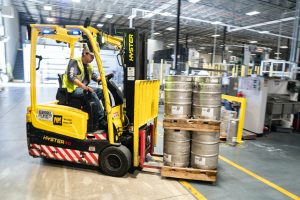
PUWER doesn’t just apply to heavy machinery. It covers work equipment of all kinds, whether you own it or simply use it. The definition of “equipment” is broad, encompassing everything from power tools to computers. Even if you work in a low-risk environment, you need to make sure that everything is properly maintained.
The full regulations are highly detailed, but the basics are simple. You must ensure that all equipment is in good repair and is checked regularly. Equipment should only be used for its intended purpose, and only by those who are properly trained. If the safety of a piece of equipment depends on its correct installation, you should inspect it after it is installed and before it is used, this includes an accompanying safety measures – for instance guards on machinery.
If you have any questions about PUWER and how it applies to your workplace, don’t hesitate to ask us.
Returning to the office? Don’t forget about fire safety and first aid

This is especially true in the case of fire safety. You should perform a new fire risk assessment to make sure that evacuation routes are still clear, and to spot any new fire risks that may have been caused by rearranging the office.
Workplaces are still required to appoint fire safety wardens to assist the designated “responsible person”. You should check your shift patterns to make sure that there are sufficient wardens. Official guidance acknowledges the need for some flexibility. You may consider consolidating workers in one area to reduce the number of wardens required, if social distancing permits.
First aid may also be affected. In this case, your legal obligations are the same as ever. As a minimum, all workplaces should have a first aid box and someone in charge of restocking it. More hazardous workplaces may require first aid-trained colleagues on site. Once again, a risk assessment is the place to start. This will help you identify any gaps in first aid cover and find ways to fill them.
Mythbusters – back to the office

Weighty matters
An HR manager refused to buy weights for the company gym on the grounds of “health and safety”. There is nothing in health and safety legislation that prohibits the use of weights in a gym. In fact, the provision of workout equipment is likely to have a positive effect on employee wellbeing. There may have been a good reason for the decision, but it had nothing to do with health and safety law.
Breath of fresh air
In another case of H&S scapegoating, office employees were forbidden from opening third floor windows. It may be necessary to lock high windows if there is a genuine risk of someone falling out, but these windows were safe. Instead, the decision seems to have been an attempt to hide problems with the office’s air conditioning system. It is better to have an open conversation about an issue rather than just blame health and safety.
Safety Matters April 2021
How to deal with near misses
in the workplace

The most worrying of these was the derailment of an engineering train. The other four incidents included the unsafe use of a saw, the cutting of a potentially dangerous wire and a test train being sent in the wrong direction.
This is not to say that Crossrail is failing to protect its employees. In fact, Crossrail has an improving safety record with no reportable accidents in February at all. This story just goes to show that near misses can happen in any workplace. The important thing is responding to them correctly. So, what is a near miss?
The HSE defines a near miss as an event that did not cause harm but had the potential to do so. In this case, “harm” includes both physical injury and illness. An example of a near miss would be someone losing their footing at height but managing to steady themselves.
The reporting of workplace injuries and accidents is a legal requirement under RIDDOR (The Reporting of Injuries, Diseases and Dangerous Occurrences Regulations 2013).
Generally speaking, you do not have to report near misses to the HSE. However, some near misses may also fall into the category of “dangerous occurrences”. These are specific incidents which must be reported under RIDDOR. A full list of these can be found on the HSE website.
Even where it may not be a legal requirement, recording near misses has several advantages for employers:
- Recording near misses allows you to spot patterns. Several near misses in the same area are a sure sign that something is wrong.
- Investigating near misses allows you to avoid more serious incidents by implementing the necessary safety measures at an earlier stage. Averting potential accidents will improve efficiency and could even save lives.
- Near misses can form the basis of safety training. Relating safety measures to a recent near miss can act as a wake-up call for employees, ensuring that they pay attention.
If you would like to introduce an internal near miss reporting policy to improve your culture of health and safety, get in touch.
Do you operate in a high-risk sector
for COVID-19?

Despite these findings, the IIAC stopped short of recommending that COVID-19 be added to the list of “prescribed diseases” covered by Industrial Injuries Disablement Benefit. This is because there is not currently enough data to prove a definite link between contracting COVID-19 at work and long-term disability.
Despite the fact that COVID-19 will not be classified as an occupational disease for the time being escalating further the response to it, it is essential you go as far as you reasonably can to minimise the danger if you operate in these sectors.
If you work in a high-risk sector, you should be carrying out regular, thorough risk assessments. These should acknowledge the heightened risk that you and your employees face as well as setting out measures to reduce the danger.
Many of these measures will already be familiar to you, but once the policy has been devised it is particularly important to ensure you have a culture of health and safety compliance within your organisation. Check in with your staff regularly to make sure that policies are being followed.
Section 44 extended to workers

Section 44 of the Employment Rights Act 1996 states that an employee may leave the workplace or refuse to attend work if they feel that their safety is under threat. As long as this belief is genuine, the employer cannot punish them for their actions.
A recent High Court ruling has extended the same protection to those with “worker” status. From 31st May, both employees and workers will have the right not to be penalised if they leave or refuse to return to the workplace. For this protection to apply, they must believe that the danger is serious and imminent, and cannot be reasonably averted.
This situation is, of course, best avoided. Reviewing health and safety policies to ensure they reflect this change is a sensible first step, followed by clear communication with your whole team. If an employee or worker still feels unsafe and acts under section 44, you’ll need to work with them on health and safety to find an appropriate way forward. Any detriment they suffer could expose you to litigation. If you want to discuss this in more detail, please get in touch.
Unlimited fines for some breaches
of fire safety regulations

At the same time, the Building Safety Bill is being developed, which contains further fire safety measures. These aim to improve fire safety risk assessments and increase accountability. One thing in particular to highlight is that anyone who impersonates or obstructs a fire safety officer can now face an unlimited fine as could those breaching fire safety regulations laid out in the FSO.
The fire and building safety bills have relevance to commercial as well as residential premises, so it’s important to know your responsibilities. As well as raising the quality of fire risk assessments and the proficiency of people completing them, they intend that for regulated buildings, important fire safety information will in future be retained throughout their lifespan.
Mythbusters

The players at a rugby club were told that they couldn’t play in wet and muddy conditions for health and safety reasons. The reality was a little more complex. The club had recently suffered serious flooding, meaning that a proper assessment was needed before play could resume. The risk of contamination from flood water was likely to have been as much of a factor as the risk of injury. Simply blaming “health and safety” meant that the players didn’t receive a satisfactory explanation of what was happening.
In an even stranger case, a golf club refused to post the minutes of its committee meeting on a bulletin board “for health and safety reasons”. It is possible that they had confused data privacy with health and safety but, more likely, it was another attempt to shift the blame for an unpopular decision. We call that foul play.
Safety Matters February 2021
Spotlight on COVID safety in the office
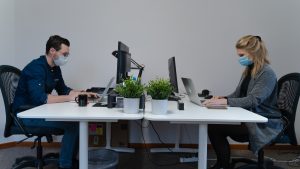
Records from Public Health England show that there were more suspected outbreaks in offices during the second half of 2020 than in restaurants, supermarkets, construction sites and warehouses combined. This trend continued into 2021, with over 60 office outbreaks reported in the first two weeks of the latest lockdown.
Although you probably know the basic safety advice off by heart, it’s worth refreshing your memory on some of the finer points. Under the current lockdown rules, all employees should work from home if possible. However, there will be times when coming to the office is unavoidable. For these cases, the government has outlined eight key safety measures:
1. Complete a COVID-19 risk assessment. This should be shared with all staff so that everyone understands their responsibilities.
2. Clean the office regularly, focusing on frequently touched surfaces such as door handles and lift buttons. Provide hand sanitiser for all staff and visitors and encourage frequent hand washing.
3. Ask all visitors to wear face coverings unless they are exempt.
4. Maintain social distancing for all staff and visitors. You can make this easier by rearranging desks, putting up signs and introducing a one-way system.
5. Ensure the building is properly ventilated. You can improve natural ventilation by opening doors and windows, but remember that you need to keep staff warm during the winter. It may be a good idea to relax your company’s dress code so that employees can wear extra layers. Mechanical ventilation systems can also help, but you should avoid those that recirculate air rather than drawing fresh air from outside.
6. Keep an attendance record of all staff and visitors for 21 days. This will allow you to assist the NHS Test and Trace team if necessary.
7. Turn away people with symptoms and send sick employees home. Any visitor or employee with a temperature, persistent cough or loss of taste or smell should be told to self-isolate.
8. Pay attention to mental health. Check in regularly with remote employees and make it clear that anyone who is struggling can come to you for help. The government has published detailed advice on mental health during the pandemic, so be sure to read this and share it with your employees.
What does the Fire Safety Bill mean for workplaces?
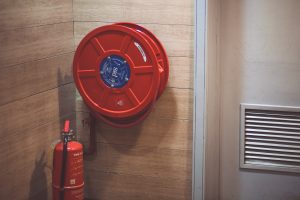
Some aspects will apply to commercial premises as well as residential ones. This means that it could have implications for your existing workplace health and safety practices.
Confusingly, a “responsible person” known from fire safety regulation (such as a building owner or an employee given fire safety duties) may have duties which overlap with an “accountable person” as described in the new Buildings Safety Bill which is also being prepared. Under the existing Fire Safety Order, the responsible person is the employer as long as they have some degree of control over the premises. This is likely to remain the case when the new bill comes into effect.
This means that it’s essential to clarify who is responsible for what. It will be more important than ever to put everyone’s duties in writing, and make sure you know where the line is between the “responsible person” and the “accountable person” if both are relevant for your building. If you have any questions, we’re here to help.
Managing the health & safety of lone workers

If you employ roles like cleaners or security staff you will already have some experience with managing lone workers. For many though, this will be uncharted territory. It is therefore important to be aware of the unique dangers of lone working, and to understand your responsibilities towards solitary employees. Although many remote workers are technically lone workers, it’s important not to forget staff who may be unfamiliar with working alone on site.
The HSE categorises lone working as high-risk. Specific lone working risks include accidents, sudden illness and the threat of criminal intruders. There are also psychological dangers to consider such as loneliness and stress. This means that to remain compliant you must take extra precautions.
Start with a full risk assessment. You can adapt your existing risk assessments to fit the profile of lone working. This assessment should outline all potential risks and the ways to mitigate them. If you need help producing it, ask us.
One way of protecting lone workers from physical harm is by providing staff with monitoring devices or personal alarms. If you choose to do this, it is important to clarify who is responsible for maintaining and monitoring these devices.
In terms of mental well-being, regular check-ins may be a good way to combat feelings of loneliness. You should also make it clear that lone workers can approach you if they are struggling.
One in eight employees are going into work unnecessarily

It is important to be sure that nobody is coming into the office unnecessarily. The HSE are continuing to conduct phone interviews and inspections, and will notice if a workplace seems overcrowded. Between 6 and 14 January alone, the HSE received 8,427 COVID-related complaints, 81 of which led to enforcement action.
The best place to start is with your existing COVID risk assessments. These should allow you to weigh up the safest place for each employee to work. In many cases, this will be from home. If you’re unsure, don’t hesitate to get in touch.
Mythbusters
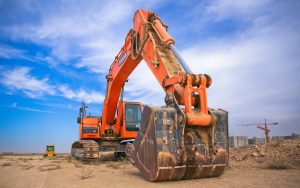
A few years back a major civil engineering contractor insisted that all routine heavy lifting operations had to be directly supervised. This meant that an additional member of staff had to be present whenever anyone was using a lorry loader crane. When put to the HSE myth buster panel, they decided that this was unnecessary as long as the lift operator was properly trained. Unusually complex or dangerous lifting may require additional supervision, but the contractor must be able to justify their decision.
In a separate case, a building site operator told employees that they couldn’t wear shorts, insisting that they wear plastic waterproof trousers instead. It is true that certain tasks will require building site employees to wear PPE. For example, working with wet cement can cause skin irritation if legs are left uncovered. However, most of the time, shorts are completely acceptable. Not that we imagine many workers will be showing up in shorts during this February freeze.
Safety Matters Q4 2020
A steer from the courts on vicarious liability
Most people enjoy a laugh, but practical jokes are best avoided in the workplace. From a legal point of view, they carry risk of vicarious liability for the employer if things go wrong and somebody is hurt. A recent case involving a practical joke on a construction site helps to demonstrate the issues and where a line may be drawn.
The incident took place on a site operated by a construction firm. One employee brought two “pellet targets” to work and placed them near the ear of a contractor working on the site. The perpetrator then hit the targets with a hammer, causing an explosion.
The victim suffered a perforated eardrum and long-term hearing loss. The culprit was quickly sacked, but the victim decided to bring proceedings against the company. He alleged that it had breached its duty of care and was vicariously liable for the perpetrator’s actions.
During County Court proceedings, the victim claimed that he had previously informed the company of tensions between employees on the site. He argued that the company should have separated the employees before the incident could occur. He also alleged that it failed to provide adequate training or supervision to prevent practical jokes.
The company argued that the practical joke was completely outside the remit of the perpetrator’s employment, and therefore impossible to foresee as part of a risk assessment.
The court was sympathetic to the victim, but ultimately sided with the employer. The judge concluded that the workplace had “merely provided an opportunity to carry out the prank that he played, rather than the prank in any sense being in the field of activities that the company had assigned…”. He added that the perpetrator’s actions were so clearly unacceptable that the company could not have been expected to warn him against them. The victim took the case to the Court of Appeal but the original verdict was upheld.
As an employer, vicarious liability is a worrying concept. Some relief can be taken from this example and at least one other recent court case which ruled against vicarious liability where, among other factors, the employee was not acting to further the employer’s interests or under instruction.
That said, the clearer you are about what constitutes unacceptable behaviour and the more controls put in place, the less likely an incident is to occur.
Workplace fatality statistics

The latest report shows that 111 workers died in workplace accidents between July 2019 and July 2020. This is 38 fewer than the previous year, making it the lowest annual number on record.
With many workplaces shut down for several months, you would expect fatality numbers to fall. That said, deaths in the months before the pandemic were slightly down from the previous year. This suggests that safety is still improving, although perhaps not as quickly as the figures initially seemed to show.
Every workplace fatality is a tragedy and has far-reaching consequences. For example, earlier this year, a transport company was fined £5,000 (limited due to liquidation) after a driver was crushed to death by a pallet of stone tiles. The company was found to have exceeded the pallet weight limit by 400kg, and had failed to provide the driver with proper training. As well as the human cost, the company went into liquidation.
We all want to help drive the numbers down further. If you have had any near misses and need external H&S consultancy, contact our team.
Protecting staff from abuse by customers
If you work in a customer-facing business, you’ll be well aware that 2020 has been a challenging year. From long queues and panic buying to the ongoing implementation of social distancing guidelines, retail workers have had a lot to deal with.
Sadly, the public has not always been supportive. A recent survey of the UK’s top 100 retailers found that a third had experienced customer abuse during the pandemic. This rose to 70% for food and grocery retailers.
The November lockdown has forced consumers to leave their Christmas shopping until December, so busy stores and frayed tempers are likely. This makes it more important than ever to ensure the safety of your employees.
If you haven’t reviewed your risk assessment for work-related violence recently, now might be a good time to do so. By identifying the situations where staff are most vulnerable to customer abuse, you can introduce precautions to keep them out of harm’s way.
Do I need to report COVID-19 cases under RIDDOR?
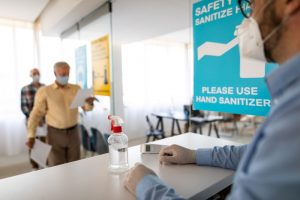
You are not required to report infections or deaths of members of the public who have entered your premises. RIDDOR only applies to occupational exposure. So reportable infections or deaths must be the direct result of an incident at work. These fall into three categories:
First, the virus has been, or may have been, released into the workplace as a result of an incident or accident. This must be reported as a dangerous occurrence. In these cases, it is not necessary to carry out any tests or analysis. It only requires a reasonable judgement that the incident caused actual or potential exposure.
Second, an employee has tested positive for COVID-19 and this can be attributed to workplace exposure. It is up to you to judge whether an infection was the direct result of occupational exposure. You should fill out the “case of disease” report form and specify exposure to a biological agent as the cause.
Third, an employee’s death can be attributed to occupational exposure. If there is reasonable evidence that an employee’s death was caused by occupational exposure to COVID-19, you should notify the enforcing authority immediately and send a report within ten days. You should use the “case of disease” report form and specify exposure to a biological agent as the cause of death.
If you need more help understanding or complying with RIDDOR, please contact our experts.
Mythbusters

Crossed off the Christmas card list
A card shop put up a sign saying that trolleys weren’t allowed due to “health and safety and the size of the store”. The sign makes it clear that space restrictions are the real reason for the rule – something completely separate from health and safety. Presumably, the manager felt that mentioning health and safety gave the rule more authority, but in reality it only created confusion.
Candle in the bin
In an even stranger case, a pub refused to light all of the candles on a birthday cake “for health and safety reasons”. We can promise you that there is no legislation limiting the number of candles on a birthday cake, or any other type of cake for that matter. Either the pub was being overcautious, or perhaps they had lost some of the candles.
From all of us at the Health & Safety Dept, have a happy Christmas and light as many candles as you want – as long as you do it safely!
Safety Matters Q3 2020
What to do if there is a COVID outbreak in your workplace
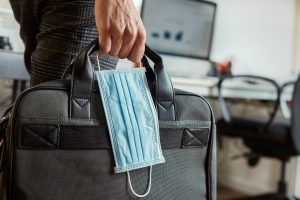
As an employer, you will be as keen as anyone to do your bit in preventing an outbreak. Taking the necessary precautions will help you to avoid the costly disruption of an outbreak on your premises.
So what should you do if one of your staff develops symptoms? The first step is to send them home immediately. They should self-isolate for 10 days and members of their household or support bubble should do the same for 14 days.
After a symptomatic employee leaves the building, you are advised to clean the premises thoroughly. You should sanitise the workplace with disinfectant, paying particular attention to door handles, lift buttons, and other frequently touched areas.
Your employee will need to order a COVID-19 test by calling 119 or visiting the NHS website. If they test negative, they can return to work straight away. If they test positive, they must complete their 10-day isolation period.
They will be contacted by NHS Test and Trace who will ask for the details of anyone they had close contact with in the previous 48 hours. Some of these contacts are likely to be colleagues, so expect the Test and Trace team to tell more of your staff to self-isolate. If more than two lab-confirmed cases are linked to a particular setting, Public Health England (PHE) deem it an outbreak.
If a cluster of cases is identified in or around your workplace, the Health and Safety Executive (HSE) may wish to carry out an inspection, and PHE or an equivalent devolved body may investigate and offer specific support. This should be viewed as an offer of help rather than a punishment.
If the HSE identifies necessary changes, you will be given time and support to implement them. Although fines and closures can be imposed, this will only happen in cases of persistent non-compliance.
We are all resigned to COVID-19 being with us for some time. So review your risk assessments to ensure you are prepared for an outbreak. Employees should be consulted throughout this process and you should share the final version with them to gain their buy-in.
If you have any questions about COVID-19 safety, give us a call.
Returning to work: the risk of Legionnaires’ Disease

Also known as Legionella, Legionnaires’ is a bacterial lung infection caused by breathing in water droplets found in stagnant water. Symptoms of Legionella include coughs, muscle pain and even pneumonia. It can be fatal.
Since many workplaces were forced to close in a hurry, you may not have had time to consider water safety. That’s why it is especially important to carry out adequate checks before reopening. Although there are no specific laws regarding the control of Legionnaires’ Disease, you are likely to have a legal duty to take the necessary steps. The Legionnaire Control Association (LCA) says:
“Simply reopening a building that has stood idle, without addressing the safety of its water system, is unacceptable and is likely to be in breach of the law.”
We’d advise a risk assessment for all premises that were closed during the lockdown, especially those reinstating a water system or restarting an air conditioner. Checks can be performed by a competent person within your business or an external contractor. If you have more than five employees, you must also make a note of anyone who may be particularly vulnerable to Legionella, such as those with respiratory conditions.
Remember that some of the symptoms of Legionnaires’ and COVID-19 are similar, and an employee who appears to have Coronavirus may actually be suffering from Legionella.
Do your COVID-19 risk assessments include vulnerable staff?

Research shows that BAME (Black, Asian and Minority Ethnic) workers are disproportionately likely to die of COVID-19, especially if they work on the frontline of the NHS. One report showed that 75% of NHS workers who have died from the virus were from BAME backgrounds.
Yet long after this was known, it was reported that only 23% of NHS trusts had explicitly recognised this in their risk assessments. Many risk assessments also neglect to mention workers from other at-risk groups. These include older males, people with a high BMI, and people with underlying health conditions such as diabetes.
So when reviewing your risk assessments do acknowledge these discrepancies and set out measures to protect workers from vulnerable groups. It is not always obvious, so decide on how such people could be identified. These could include prioritising them for remote working, changing their tasks (within the scope of their contract), providing enhanced social distancing and hygiene measures in their vicinity, and making it clear that they can come to you with any concerns.
For help getting the nuance right in your risk assessment, give us a call.
What does the new school have in store?

With the government committed to a full reopening of schools in Autumn, this pressure will only increase. Class sizes will return to pre-COVID levels, allowing less room for social distancing. Parents will be concerned and it may fall on you to reassure them by communicating the processes you have in place.
While newly reopened businesses are encountering safety issues for the first time, you have been dealing with them for months. You don’t need us to tell you about the importance of handwashing or social distancing, but the unexpected can still occur. If you are affected by a new issue such as a local lockdown, don’t hesitate to ask us for advice.
Mythbusters

Throwing health and safety under the bus
Back in April, Colombia and Peru trialled lockdowns which permitted men and women to go out on alternate days. Both schemes proved unsuccessful and, fortunately, nothing similar was ever suggested in the UK!
But looking back through HSE myth buster cases we did see that a school bus company once cited health and safety laws as the reason for separating boys and girls on its buses. There is no such law, although bus drivers can separate pupils as they wish, in order to curb rowdy behaviour.
Health and safety or water cooler gossip?
A gym owner received a customer complaint about gym goers filling up their own bottles from the water cooler. The customer claimed that, for health and safety reasons, they should only use the paper cups provided.
At the time, there was no basis for this being a health and safety issue. Of course, we live in a very different world now. When gyms reopened on the 25 July, many had removed water coolers altogether to prevent the spread of germs.
Safety Matters Q2 2020
Covid-19: updating your risk assessments

So what does a covid-19 risk assessment look like? As with any risk assessment, your covid-19 strategy should include facets like defining the risk, highlighting the people who are most vulnerable, laying out the steps that can be taken to minimise the risk, and assigning the responsibility for managing the risk.
For businesses where remote working is not an option there will be a general risk of spreading covid-19, and we’ll focus on that here as a useful example. You may also identify more specific risks that are relevant to your business. The content of your action plan will depend on your workplace, but there will be general actions that you should include:
Handwashing – In recent weeks, handwashing has gone from being a matter of basic hygiene to a matter of life and death. Your risk assessment should be altered to reflect this. Ensure that staff are provided with adequate handwashing facilities with soap, hot water and hand sanitiser. Paper towels or hand dryers should also be made available. Employees should be reminded to wash their hands regularly, both verbally and through the displaying of posters and leaflets if possible.
Social distancing – The public are being advised to minimise contact with others to prevent the spread of covid-19. A two-metre gap should be maintained between staff members, which might mean altering your ways of working to reduce the number of people on site. Your risk assessment may include strategies such as changing shift patterns and encouraging home working to reduce contact between staff. Employers should regularly remind employees of the importance of social distancing and check that the two-metre rule is adhered to.
Protective equipment – Although gloves and masks are not recommended as a general precaution, they are necessary in some industries. If RPE (respiratory protective equipment) is required, your risk assessment should reflect the need for masks to be tight-fitting and properly cleaned. Staff should be taught how to correctly disinfect protective equipment, and how to remove gloves in a way that prevents contamination.
Don’t be afraid to ask for help. If you have any questions about designing or implementing a covid-19 risk assessment, get in touch today.
Retail: Thinking beyond the shop floor
With almost all retail given permission to open for business, the size of the task of getting COVID-secure is becoming apparent. In a retail setting, much of the focus is on the shop floor and managing interactions with customers safely. Don’t neglect your supply chain from your COVID-19 risk assessment though.
In one sense this will be simpler, because you don’t have the X-factor of dealing with the public. But there are still human interactions to manage, and as with everything else social distancing and good hygiene practices should be at the heart of what you do.
What your plan includes will depend on the nature of your premises. In terms of the physical environment, review where drop-offs and pick-ups are made. Is it the best place available to you for managing social distancing? Have hand sanitiser available here and clear signage explaining how deliveries should be carried out.
From a staffing perspective, can deliveries be managed by one person? Or if not, have a dedicated pair or team of people to perform the task to reduce the number of possible interactions. If it is safe to do so, you may consider asking delivery drivers to stay in their vehicles, although you should also provide them safe access to welfare facilities if they need them.
Another quick win which may be possible is to streamline the number of deliveries you receive by ordering larger volumes less frequently. Taking the time to consider every step you can take to make your workplace safer is essential. As the nation’s largest retailer states: Every little helps.
How to look after your employees mental health when they are working from home

While managing physical risks is an important aspect of remote health and safety, it is also vital to consider the effects of lone working on your employees’ mental health. Feelings of isolation and an absence of clear lines of communication can be damaging too. So keep an eye out for red flags.
If you have more than five employees, update your written risk assessment to reflect this. Frequent contact is a must. Regular conference calls between you and staff are a great way to check up on the well-being of your employees and maintain a sense of team spirit while you are separated. And also encourage collaboration between team members to reinforce this.
Tools such as Zoom and Microsoft Teams make this easier than ever. Even if, as viral social media posts have shown us, you do run the risk of turning yourself into a potato or making some other faux pas by not understanding how fun filters and virtual backgrounds work. You do not have to include this in your risk assessment!
Relaxed driver hour regulations – but H&S still applies

This is something that the government and HSE have emphasised.
Existing risk assessments dealing with driver fatigue are still applicable, but you may need to update them to address the risks of extended hours. If drivers are working longer shifts and taking shorter breaks, you must acknowledge the increased risk and find ways to mitigate it. It is important to remember that driver fatigue isn’t just a threat to the driver; it puts all road users at risk.
All the relaxations are temporary and under review. While some may have already expired, they demonstrate how risk assessments must be seen as adaptable to be fit for purpose. If you have any questions about updating or implementing your risk assessments in light of covid-19, don’t hesitate to give us a call.
Mythbusters: Covid-19 edition

The postman always texts twice
As key workers, delivery drivers are on the frontline of the fight against covid-19. A few years ago, a courier claimed that its drivers were not allowed to carry mobile phones due to health and safety legislation. This is untrue. Under the Road Traffic Act, couriers are subject to the same laws as any other motorists. They can use a mobile phone at the wheel but only with a hands-free device.
Buying paracetamol can be a headache
Since it was announced that paracetamol can be used to treat the symptoms of covid-19, there has been a distinct lack of it on our shelves. In January 2013, a supermarket customer was told that they couldn’t buy three packs of paracetamol at once “because of health and safety”. While UK law does limit the amount of paracetamol or aspirin that can be purchased in a single transaction, this has nothing to do with health and safety legislation. The law is governed by the MHRA (Medicines and Health Care Products Regulatory Agency) and is intended to prevent overdosing.
Safety Matters Q1 2020
Beyond COSHH when dealing with
hazardous substances
In some industries, working with hazardous substances will be the mainstay of your business. You’ll be familiar with the law, with assessing risks and fulfilling your responsibilities. For others, this won’t be so clear – hazardous substances won’t be part of your core operations, but they may still be present on site. So it is important to be clear on what is expected of you.
COSHH (Control of Substances Hazardous to Health) is the law requiring you to control hazardous substances. It regulates the labelling and handling of substances and lays down the principles of good practice.
As a business, you are required to find out what your health hazards are, provide control measures to reduce harm to health and ensure that those controls are used and in good working order. You also have a responsibility to educate and train your employees, protect those visiting your site and provide monitoring and health surveillance in appropriate cases.
But it’s not necessarily just COSHH that you have to consider, as these following two prosecution cases highlight. Depending on your sector, there may be other legislation relevant to you.
The HSE recently investigated and prosecuted a bio-sciences company for being in possession of a large quantity of infectious avian influenza and West Nile virus without licences.
The regulation dealing with these biological agents requires a licence under the Specified Animal Pathogens Order 2008 (SAPO) and is necessarily strict to protect the UK livestock economy from exotic animal diseases. This particular company admitted to two breaches of Section 73(a) of the Animal Health Act 1981 and was fined heavily – £40,000 and they had to pay costs of £80,000.
A manufacturer of agricultural trailers received a 10-month suspended prison sentence after pleading guilty to breaching Sections 37 and 2(1) of the Health and Safety at Work etc. Act 1974.
He was judged to have deliberately put his workers at risk of developing severe lung disease by regularly using aerosolised paints containing isocyanates and solvents without proper controls. At least one employee suffered a life-changing condition. The manufacturer also had to pay more than £5,000 in costs and carry out 20 hours of unpaid work.
In both instances, the companies were deemed to have paid insufficient attention to the use of the substances or care for the consequences of misuse.
You may be an expert on hazardous substances in need of a little clarification, or maybe you don’t know where to begin. Whatever your situation, we can help give advice and guidance to ensure you are following best practice and complying with all legislation relevant to your operations.
Scalding criticism for train operator
failing to go green
Protecting your employees and others from health and safety risks is generally accepted as an essential responsibility of an employer. But what happens when implementing necessary safety measures elicits criticism from other quarters?
This is exactly the dilemma faced by an Irish train operator which banned reusable cups on its trains. Safety concerns arose when the cups customers were bringing on to the train failed to fit underneath the nozzle of the hot drinks machine, so creating a risk of scalding. Train speeds exacerbated this concern and the company decided to stop the practice of filling up customers’ own cups.
This decision, made for sound health and safety reasons, had unanticipated consequences, however. The company faced vociferous criticism from its passengers for what was perceived as a retrograde, anti-environmental stance. In response to the backlash, the rail company began trialling its own reusable cup designed to fit under the nozzle – an innovation adopted to satisfy all parties.
If you are facing a dilemma like this when a health and safety measure creates bad PR, ask us for advice. We can help you navigate the complexities and reach a solution that placates those concerned whilst retaining health and safety standards.
Make mental health a priority in 2020
Mental health awareness is taking centre stage in 2020. Mounting evidence of the devastating impact of poor mental health, and widespread advocacy against stigmatisation have put the spotlight on this long-neglected issue.
Many businesses are reacting to this sea-change by putting mental health first aid on the same footing as physical first aid. The recent inclusion of ‘mental health trained first aiders’ in the HSE’s first aid needs assessment for employers reflects this priority, and is a reminder to employers of their duty of care. More than just a moral imperative, this duty of care is, of course, a legal requirement under the Health and Safety Work Act 1974.
There are also sound economic reasons to address mental health issues in your workplace. Recent data from the Department of Work and Pensions revealed some 300,000 people with a long-term mental health problem lose their jobs each year. It has been calculated that this issue costs employers up to £42 billion a year.
So, if you are looking to improve mental well-being in your company, there is plenty that you can do. Training up mental health first aiders with confidence and knowledge is a great start. We offer several industry-specific, e-learning courses designed to promote understanding and offer practical support to manage day-to-day mental health. Just ask us.
Creating a mentally healthy organisation is an investment definitely worth making. So make 2020 the year to double down on mental health first aid and you’ll definitely reap the rewards!
Myth Busters
With the new year upon us, we are no longer blinded by the twinkly lights of Christmas and can reflect on the festive season with more clarity. It’s easy to cast the figure of ‘Health and Safety’ in the Grinch role, the ultimate party pooper; but perusing the HSE’s Myth busters may encourage you to think differently.
The drinks are on us! Not anymore…
An employer stopped paying for alcohol at a Christmas party citing health and safety.
An employer may have due concerns about overindulgence. Or might be trying to find a scapegoat for a decidedly un-festive miserliness. But don’t be fooled. There is no health and safety legislation stopping employers paying for drinks at a Christmas party.
No Santa hats for refuse collection workers. Bah humbug.
Refuse collection workers in Colchester were banned from wearing Christmas hats on the grounds of health and safety. The council stated drivers and other road users could be distracted.
There is no legislation preventing refuse collectors from donning a bit of festive adornment. Naturally, a bit of common sense needs to be applied. Decoration that impedes a driver’s vision is not a good idea. But otherwise workers should be free to channel Santa and enter into the festive spirit!
No material change to health and safety
law after Brexit
It certainly won’t be the last we hear of it, but Brexit has finally happened! It’s understandable to feel trepidation about the potential changes for your business after Brexit, but you do have reassurance on health and safety law.
That’s because health and safety law and guidance will not be materially affected. The EU (Withdrawal) Act 2018 ensures that we can provide certainty on health and safety for duty holders across the UK. All rules will remain the same. All that will change is that the legislation will now refer to the UK rather than to the EU.
There are three HSE-led statutory instruments supporting the Act which convert current EU regulation into domestic law. Ask us if you want to know more.
Safety Matters Q4 2019
Are you taking fire safety seriously
enough in your school?
A leading education insurance provider recently surveyed 1,000 UK schools to see how they’d cope with a fire.
The results were not overly promising. Two-thirds of schools across England don’t have a proper system for dealing with fire. And only 5% of schools received an ‘excellent’ rating in the survey. Scottish schools fare better with about 30% being rated excellent.
In Scotland, sprinklers are a legal requirement in the new and major refurbished schools. But since 2011, 673 UK schools opened and only 15% of them had sprinklers installed. The insurer is pushing the government to introduce legislation so that sprinklers become an integral part of all UK schools.
The obvious substances most likely to cause a fire are unlikely to be found in schools. However, the less obvious, such as packaging materials or dust from flour, sugar, or wood, are very common.
The study also outlined five main risks. These were:
- Shortcomings in fixed fire protection
- Deficient fire detection systems
- Arson
- Modern construction procedures and how combustible a building is
- Smoking controls and general housekeeping
There are more than 1,000 school fires each year. The risk to health and life speaks for itself. The average financial cost is almost £3million for more serious incidents, but there is an educational cost too. Premises could be closed for extended periods of time while repairs are carried out. Classes are disrupted as they are moved to alternative premises. And groups who usually use the school out of hours are unable to.
The good news is that the majority of fires can be prevented.
When it comes to overall fire safety, The Regulatory Reform (Fire Safety) Order 2005 looks after England and Wales. Generally, local fire and rescue teams are responsible for ensuring the majority of buildings abide by this legislation. In Scotland the Fire (Scotland) Act 2005 brought in changes to fire safety law and repealed previous fire safety legislation. And in Northern Ireland it is The Fire Safety Regulations (Northern Ireland) 2010.
Fire drills and safety risk assessments should be carried out regularly. Both are mandatory for UK schools. A health and safety risk assessment adopts similar methods, so they can either be conducted together or as separate assessments. Beyond this, it may be time to review your fixed fire protection.
The survey suggests many schools are not as prepared as they should be. If this includes you, it’s what you do next that counts. If you need to review your risk management procedures or fixed fire protection, but don’t know where to start, we can help. So give us a call.
Unclear allergen labelling
Sometimes a simple case of customer miscommunication can result in a simple mistake. But occasionally, the consequences can end in tragedy.
You’ll probably have seen in the news that a teenager paid with his life after reading from a restaurant’s misleading menu. He chose the chicken burger. Neither the menu nor staff had made it clear the burger was coated in buttermilk. Milk is one of the 14 main allergens.
An hour later, he was dead. In an earlier high-profile case, a fifteen-year-old girl, Natasha, also died after suffering a fatal allergic reaction from a sandwich.
New laws are set to be introduced to provide further protection. Under ‘Natasha’s Law’, mandatory allergen labelling will be extended to cover food prepared, packed and sold all on the same premises. Previously this “pre-packed directly for sale” food was exempt from allergen labelling.
The Food Standards Agency (FSA) is clear that anyone eating out or ordering takeaway must have access to written allergen advice. This might be through a menu or at the very least, written instructions detailing how they can find out. Relevant legislation includes the Food Safety Act 1990 and the European Food Information to Consumers (FIC) Regulation 1169/2011.
If you work in the food industry, we can help you undertake a risk assessment and develop effective training. We’ll ensure you comply with the law and even go beyond it, to keep your customers safe and protect your reputation.
Every breath you take
Have you heard of ‘sick building syndrome’?
It might be a headache, runny nose, or throat irritation, but you’ll only get it while in a certain building. It’s usually an office and one of the causes is poor air quality.
Some workplaces have a legal requirement when it comes to ventilation and extraction systems. But even those that seem safe may be riddled with hidden pollutants including fungal spores, carpet fibres and photocopy residue.
Without proper cleaning, maintenance and ventilation, harmful particles are likely to build up.
If the building is older, there may be inherent issues with heating, ventilation, and air conditioning.
For instance, if you have an air conditioning system which isn’t properly maintained, it may produce daily swings in temperature. The system could create extreme levels of humidity and bring in chemical pollutants and dust particles from the outside, all of which can contribute to illness.
New partitions may offer more privacy, but they can also encourage stagnant air and pollutants to build up. So it’s a good idea to consider air quality when having work done.
A recent YouGov survey found that nearly 70% of office workers consider the air quality detrimental to their productivity and well-being. Pollution outdoors is already linked with respiratory tract infections and lung disease. What could the long-term effects of poor indoor air quality be?
It’s not always easy to identify the problem. Try simple things first. You may even be able to tackle a pollutant at source. Well-placed ventilation or advanced carbon-activated air purifiers can certainly help.
If you have an air-quality problem, talk to us about getting to grips with it and arranging an occupational hygienist to check the correct standards are being met.
HSE Myth Busters
Most people are not fans of repair and maintenance, but it does prevent things from sliding into disrepair.
Whether its through laziness or a simple misunderstanding, no business or institution should make a scapegoat of health and safety as an easy excuse. But unfortunately, it’s still being given a bad name. Today we’ve got two great examples we dug up from the HSE Myth Busters.
Light bulb moment?
How many handymen does it take to change a lightbulb?
None, apparently, because health and safety is stopping anyone but a qualified electrician from doing it. At least that’s what a property management company said in a bid to protect themselves from a negligence claim. It doesn’t! And unhelpful attitudes like that simply obstruct necessary work being done.
On the verge of despair
As a newspaper reporter drove through the South Downs National Park, she could hardly believe the piles of litter at the side of the road.
Of course, the council chucked her an excuse around health and safety. Understandably, the reporter was shocked the regulation didn’t cover British wildlife.
The truth is – there is nothing stopping a council from clearing verge litter provided they ensure traffic risks are properly managed. In the end it would have been much better for them to have admitted their real reason, whatever that may have been.
Time to safety-check your equipment?
Usually, hindsight can be a wonderful thing.
But what if there are implications for health and safety?
Well then, it’s always better to prevent than try to fix it later on. The number of workplace injuries owing to unsafe equipment suggests that it’s worth seeing whether safety-checking needs to go up your to-do list.
In one recent HSE prosecution, for example, a furniture manufacturer learned the hard way that they should have placed a guard on their drilling machine. They not only landed a £14,000 fine, but the poor worker involved lost two of his fingers.
Technically speaking, they breached Regulation 11(1) of the Provision and Use of Work Equipment Regulations 1998. This legislation is designed so that you, the employer, can make sure your workplace equipment is fit for purpose and most importantly, safe to use.
If you manage a company that operates potentially dangerous machinery, ensure you conduct regular equipment inspections. If you need outside help setting up a review process, get in touch.
Safety Matters Q3
Take the wheel on managing
moving vehicle risk at work
Managing the risk of moving vehicles at work is not something that every business has to contend with. But in warehouses, large retail stores, and airports, for example, it is a key area of health and safety. Poor procedures and systems of work present risks to the employee and customer alike. As an employer, you are legally required to be aware of such risks and take steps to eliminate or reduce them.
Much of this is governed by general health and safety legislation such as The Health and Safety at Work Act 1974. But be aware that there may be more specific legislation to consider too, including the Lifting Operations and Lifting Equipment Regulations (LOLER) 1998.
A moving vehicle risk assessment is essential to build a clear picture of where vehicles are, why they are there and what they are doing. This will help you identify potential vehicle hazards so you can take mitigating action.
Every year there are over 5,000 incidents involving transport in the workplace. And around 50 of these are fatal, so the risk is very real.
Common types of accidents involving moving vehicles include: people being struck or run over by a vehicle, people being hit by something falling from a vehicle, people falling from vehicles and vehicles overturning.
A court case following the death of a worker who walked in front of a moving lorry was recently reported on. While the driver had checked his mirrors, he did not see the employee and moved forward resulting in the fatal injury. The grain store company where the accident occurred was fined £180,000, as well as having to pay costs of £20,000.
In this instance the HSE found that pedestrians could not move safely around the site, as they had not provided measures to prevent employees walking into areas where large vehicles were moving. The company’s failure to implement simple H&S measures was cited as the cause for this avoidable incident.
Stop such potential disasters before they occur by managing the risks of workplace transport. Good practice measures include:
● Keeping people and vehicles apart
● Having clear site rules which are communicated to all staff members
● Avoiding the need to work at height on vehicles
● Ensuring your employees only operate vehicles when authorised to do so.
If you need help carrying out a moving vehicle risk assessment, or think your staff may need some extra training, contact us.
Is your care home heatwave resilient?
If you own or manage a care home, how well prepared are you and your staff for rising temperatures this summer? A study of four care homes found the heating was left on 24 hours a day, even during the summer months. And in a previous major heatwave, back in 2003, care home deaths related to heat increased by 42% that August.
“Heatwave resilience” is a term being used by MPs after last summer’s heatwave, to describe the best practice care homes should be seeking. Long-term trends suggest that UK summer temperatures are rising. So there is likely to be a smaller margin for error in managing this risk as the years pass. You’ll want to look at how temperature is controlled with both heating and cooling systems. Consider also the hydration and nutritional requirements of the people under your care during extremes of temperature.
Warning signs, aside from the obvious increase in temperature, could include a rise in incidents of urinary tract infections, dizziness and falls. Heatwave resilience is sure to move up the agenda of the Care Quality Commission (CQC) when they are inspecting care homes for safety and the effectiveness of their care. Regularly carrying out a heat risk assessment not only feeds into delivering the highest levels of care, but also helps you stay compliant with regulations.
If you operate a care home and have concerns over your staff’s readiness for a heatwave, or need help carrying out a heat risk assessment, get in touch with us today.
Extracurricular work in schools
Summer holidays are the time when schools get major building work done. Although there won’t be children around, you’ll still want to ensure health and safety regulations are followed if you have responsibility in this area.
Your schedule of work may range from a few thousand pounds for play equipment, to hundreds of thousands of pounds for major developments like roofing works. However big or small your project, you’ll have responsibilities under the Construction (Design and Management) Regulations 2015. Classified as a client, you’ll be responsible for ensuring your project is suitably managed, considering the health and safety of anyone who might be affected.
Building activities over the summer holidays aren’t quite “business as usual”, so don’t get caught out. There may be fewer or no children about, but ensure you plan for other people on site, including contractors and your teachers coming in to prepare their classrooms for next year.
Make sure your shop is
hot on fire regulation
A member of the public has been banned from every branch of a popular homeware store in the UK, after arguing in the carpark with a manager that the store breached health and safety laws. The customer, Derek, raised concerns over the fact that staff were locked into the store for 15 minutes at the end of the day. He also criticised the store’s covered fire extinguishers.
Despite his ban, Derek raised some important fire safety issues. If you own or manage a shop, you’ll want to make sure you’re aware of them. The Regulatory Reform (Fire Safety) Order 2005 stipulates that emergency doors must not be locked if they cannot be easily and immediately opened in an emergency. It also states that they must be kept clear at all times.
It was reported that the front door of the store was its main fire escape. The locking of fire doors presents a clear obstacle to an immediate exit. If you want to signal that your shop is closed for business, but still have employees inside, consider hanging a closed sign or have an employee at the front door to turn customers away, or specifically to open it in the event of an emergency.
When it comes to fire extinguishers, you must ensure they are maintained and ready for immediate use. The regulation doesn’t mention covers specifically, but they should be fitted properly (for example not used to prop open a door), and easily accessible.
HSE Myth Busters
When we are off on a plane for our summer holidays or relaxing in a pool, being denied a reasonable request due to health and safety will not cut the mustard. Here are two examples of summer holiday businesses which did that and earned a place on the HSE Myth Busters panel. The lesson is: don’t blame management decisions on health and safety without a good explanation.
Something to chew on
One adult passenger was forced to put up with popping ears after an airline refused to provide boiled sweets on the grounds of health and safety. They claimed that because children could choke on them, they were banned outright. While it is sensible to avoid giving hard sweets to young children, there is no health and safety legislation that prevents the provision of boiled sweets on flights.
Sink or swim
One swimming pool banned inflatables and other items that people enjoy in swimming pools on the grounds of health and safety. Health and safety law does apply to the management of public swimming pools but does not explicitly ban these items. They may have had a good reason, like impeding a lifeguard’s ability to have complete sight of the pool, but it would have been better to say this rather than making health and safety legislation the killjoy.
Safety Matters Q2
Don’t let changes on your shop floor
trip you up
Almost all businesses will have to consider visitors on their premises as well as employees, when assessing health and safety risks. But if you run a shop, or group of stores, and you are hoping for a large customer footfall, understanding the risks to the public will take on heightened importance. When they are getting some retail therapy, or picking up a few essentials, your customers will expect to be safe.
Local authorities enforce health and safety law on retail premises, and they will expect you to have assessed the risks in your business and taken precautions to manage them. Bear in mind, as you will see below, that this is not a one-off exercise.
The most common risk to customers in retail is of slips, trips and falls, so this must be properly assessed and controlled. Wet or dirty floors, spillages, damaged floors and other trip hazards are the most likely causes of an accident, but your business might have its own particular risks too.
Other health and safety considerations that are likely to be relevant to retail include manual handling, violence, working at height (if ladders are used), and workplace transport e.g. deliveries.
And then there are the hazards that are very specific to your store. Be especially aware when you introduce new equipment, fixtures, furniture or furnishings to your shop floor. Even though a change may be ad hoc, it’s essential to update your risk assessment.
In January 2019, the owners of Top Shop, Arcadia, were fined £450,000 when part of a queuing system barrier fell on a ten-year-old girl and fractured her skull. The barrier was successfully used in flagship stores but had been deployed to a smaller store which were not accustomed to using them.
The barrier should have been fixed firmly to the floor but was installed incorrectly. So when the young girl swung on it, it toppled over causing the serious injury which led her to miss eight weeks of school and left her with a permanent scar. In court, Arcadia admitted breaking health and safety laws, and has since put processes in place to reduce the risk of such an accident happening again.
If you are planning changes to your retail space, are opening a new store or just think your staff may need some extra training, contact us for expert health and safety support.
Maintenance procedures
Failing to design an adequate process for maintaining machinery and checking it’s operating safely is a reason for HSE prosecution should an accident occur.
This spring, two waste companies were each fined tens of thousands of pounds for accidents which resulted in severe limb injuries. Parallels can be drawn because the injuries were inflicted when workers were trying to remove blockages and waste material from machinery.
In the first case, the worker had his hand crushed between a conveyor belt and a drive roller. A few weeks earlier guard plates had been removed. A main part of the prosecution was that there were no adequate procedures for checking guard plates were in place. Additionally, adequate training for using the machine and suitable supervision of operatives had not been provided.
In the second case, a worker fell three metres into a compactor chamber, activating the ram which crushed his legs. He had climbed into the infeed hopper and jumped up and down on a blockage with a colleague. When it cleared, he fell through with it. In particular, the HSE noted that there was no safe system for isolating the system from power when dealing with blockages.
For a review of your maintenance procedures, get in touch.
Safeguarding record-keeping
in schools
Adequately documenting procedures and keeping records are often an essential part of complying with health and safety law. In schools, this is particularly sensitive. And also, more likely to be publicly exposed as inadequate if you are not doing it properly – because of the routine Ofsted inspections and ratings.
An independent school in Yorkshire had to accept the bad PR consequences of this earlier in the year, when they were stripped of their “Outstanding” rating and declared “Inadequate”. Among other things, safeguarding was found to be ineffective and they had not met the standards for ensuring all necessary checks were carried out on adults working in the school.
Whilst apologising and confirming the issues had been addressed, the head teacher explained that the safeguarding issues related to record checking and keeping, and that safety and security of pupils was not directly put at risk.
Away from this specific case, and aside from the fallout from Ofsted reports and the potential to employ someone who would do harm to children, how else could poor record checking/keeping impact health and safety in schools? One example is in first aid.
If you don’t have a record of which team members are qualified first-aiders, you’ll lose track of when certificates expire and when staff with the qualification leave. This will make it likely that you don’t comply with your own first aid policy.
If you need help independently reviewing your record-keeping and checking procedures call The H&S Dept and one of our experienced local consultants will help.
Myth busters
We like to wrap our children in cotton wool to protect them from danger, and very often from themselves. Most of the time this is entirely sensible and helps to prevent harm. But sometimes people go too far. Or businesses give health and safety a bad name by claiming a rule is because of H&S when in reality there’s a different underlying reason.
Sock it to ‘em
More cotton socks than cotton wool, but a soft play centre insisted that all children wear socks for health and safety reasons. While there is a public health need to cover feet infected with warts and verrucas, there’s no health and safety law mandating that socks are worn in soft play centres by all. The sock policy may meet this need, but it’s not specifically a health and safety requirement.
Don’t be a dummy
A café manager’s prohibition of baby’s dummies forced a family to leave prematurely. As with the case of the socks, the ban was blamed on the catch-all term health and safety. You can probably guess that there’s no health and safety legislation which stops babies being pacified with dummies in cafés. Digging deeper it was the café’s own strict internal food hygiene rules behind the ban. Better to just say that to begin with.
Is your work equipment
fit for purpose?
Failing to stay on top of seemingly innocuous maintenance issues on your premises can lead to tragic outcomes. That was the case at a Scottish care home, when a failing door lock led to the death of a resident.
After going missing, the resident was found with fatal head injuries at the bottom of a staircase leading to a boiler room. The staircase was kept off limits by a locked door, but the locking mechanism did not always work.
The death and a £60,000 fine show why even minor snags should not be left to lie. The technical breach was of Regulation 4(3) of the Provision and Use of Work Equipment Regulations 1998. This places a duty on you to ensure that equipment at work is suitable for the reason it is provided.
If you operate a care home and have concerns that your staff may not be carrying out the necessary control
Safety Matters Q1
Caring during a cold snap
It’s not too often each year that we have to contend with snow and the disruption it brings. But recently it has been one of those times. It sure has been cold, although not quite to the extent of the polar vortex in the States.
Extremes of temperature present particular problems to the care sector, where you are often dealing with very vulnerable people.
A report was published in December 2018 which found that a pensioner died in a freezing care home in 2016. The central heating had broken three weeks previously and had not been fixed. The 1960s heaters were known to be in poor condition before they broke down.
Already unwell with a chest infection and without medication because the care home had faxed the prescription to the wrong chemist, the 95-year-old was stuck in a room in which the window did not close properly, letting in a freezing draft. Early one morning staff became concerned and called the emergency services.
The ambulance crew found the pensioner with a body temperature 9°C below normal levels at just 27.5°C and sadly she passed away. The inquest found the cause of death to be bronchopneumonia and hypothermia.
In England the Care Quality Commission (CQC) is the enforcing authority for patient and service user health and safety. The Health and Safety Executive (HSE) takes this role in Scotland and Wales. The CQC rated the care home as inadequate and it shut down in 2017. The manager or care home owner may yet be prosecuted under the Health and Safety Act.
Clearly, during cold weather it is vital to have heating equipment appropriately functioning to keep the premises at comfortable temperatures. And that your property is maintained so that windows close as they should. Annual servicing and regular maintenance checks are important to achieve this – just waiting for problems to show themselves during a deep freeze is not acceptable.
The Health and Social Care Act 2008 (Regulated Activities) Regulations 2014 is relevant here. These state that premises and equipment must be properly maintained which means holding a sufficient budget for such maintenance.
A good risk assessment will help to identify where things could go wrong and put suitable contingency plans in place to address them.
While temperature control may be particularly important in a care setting, maintaining heating equipment is also relevant to all workplaces.
Movement of goods risk assessments –
A must have for all businesses?
From offices to warehouses, pubs to shops, most businesses will handle or receive goods. It may be a key part of your daily activities, or it could be more occasional. Either way, it’s essential to have carried out a movement of goods risk assessment.
Because there are so many types of organisation (and therefore issues) to regulate, the Health and Safety Executive (HSE) and local authorities coordinate a national Moving Goods Safely project. Either the HSE or your local authority could be the enforcement authority, depending on the nature of your business. And it can be costly if you get it wrong.
Colchester Borough Council successfully prosecuted the fourth largest pub company in the UK for health and safety failures in this area.
In October 2017 an accident whilst unloading a drinks delivery left an employee with broken fingers. The injury was caused by an unsecured cellar door falling shut. The local authority found that gas struts designed to allow the door to open and close safely had been removed and not replaced the year before. Moreover, there were no controls in place to stop someone falling down the cellar shaft.
As you might imagine, appropriate risk assessments were found not to be in place for the delivery of goods. Showing the severe consequences of getting this wrong – beyond the harm that came to the employee – the company was fined £100,000 plus costs and a victim surcharge. If you need help preparing or reviewing your movement of goods risk assessment, call The H&S Dept today.
H&S concerns impact
university expansion
In a reminder of how health and safety can impact organisational growth plans, the University of Chester may have to move its Faculty of Science and Engineering from Thornton Science Park. The site opened in 2014 and 500 students are based there.
This follows an intervention from the Health and Safety Executive (HSE) after the university applied to change the site’s use from business to educational in order to aid future planning applications.
However, the HSE consider there is a risk to students as the science park is situated within the inner zone of a hazardous installation – The Stanlow Oil Refinery. The HSE classify students as members of the public, bringing in extra health and safety considerations. The university want them classed as employees and subject to site security procedures.
Whether you are an academic institution or another organisation with big growth plans, ensure you do your H&S due diligence before implementing expansion plans.
Health and Safety Myth Busters
Many people go to nightclubs to cut loose. And whilst out for a good time, punters may sometimes do things that aren’t in their own best interests. Venues have a responsibility not to allow people to break the law. And they are also bound by stringent health and safety regulations. But where do they draw the health and safety line?
The HSE myth busters panel have highlighted two occasions in recent months when nightclubs have “blamed” policies on health and safety law, when in fact it’s their own management decisions. The problem is, this gives good health and safety advice a bad name. So let’s look where they got it wrong.
Banning headbanging
Headbanging – the dancing practice of violently but rhythmically shaking your head – cannot be very good for the old brain cells. But it’s a personal choice and there is no legislation prohibiting it. One nightclub incorrectly hid behind H&S when telling clientele to cut out the headbanging.
Lick-sip-suck stop!
In another case a nightclub barman refused to serve salt and lemon with tequila. This prevented the shot being enjoyed in the famous lick the salt, sip the drink, suck the lemon fashion. As with headbanging, it may not be too good for your health to down shots of tequila, but it’s not against the law for adults to drink it with these accompaniments.
The ABCs of asbestos
For businesses involved in property, such as landlords and construction firms, asbestos risk should be firmly on the radar.
Asbestos can be found in all manner of construction materials used prior to the year 2000. Considered not to pose a direct risk when undisturbed, these materials release fibres into the air when disturbed which, if inhaled, can cause fatal diseases like asbestos-related lung cancer and mesothelioma. The effects are long-term, with 20 tradesmen a week dying from past exposure.
The Control of Asbestos Regulations 2012 primarily govern this risk. When any work is carried out on buildings where asbestos may feature you need to determine if it’s present and the form and condition it is in. If present, or you are unsure, you’ll need to conduct a risk assessment.
Most work with asbestos needs to be carried about by an HSE-licensed contractor. While some activities do not have this requirement, they may still require special procedures. These are called notifiable non-licensed work. Anyone who may disturb asbestos during their normal work activities needs to be appropriately trained.
A Birmingham Magistrate’s Court recently fined a landlord and building contractor after they caused large amounts of asbestos fibres to be released at a rented property. Making fundamental errors, the landlord should have commissioned an asbestos survey and the builder should not have commenced work without seeing and being guided by the report of such a survey.
The risks are high and the regulatory obligations wide-ranging. So if you need help getting the basics right with asbestos, talk to us at The H&S Dept
Safety Matters Q4
When health & safety and equality law collide
In 2011, the default retirement age was abolished, meaning that companies could not automatically retire workers on age grounds at 65. Some people will welcome the opportunity to retire, but nowadays many workers will need or want to continue working.
Physical and mental health is strongly correlated to age, so this poses a problem for organisations. With no default retirement age, how do you monitor whether people have the physical ability or mental faculty to carry out their work?
This is especially risky when the job in question involves driving.
When a 77-year-old bus driver drove into the side of a supermarket in 2015, it resulted in the death of a pedestrian and a seven-year-old boy. The driver was diagnosed with dementia after the collision, and was found medically unfit to stand trial.
He had been previously warned about his “erratic” driving following four road accidents in the three years leading up to the 2015 collision. The bus company who hired the man pleaded guilty to health and safety law breaches.
The Driver and Vehicle Licensing Agency says there is no evidence to suggest that older drivers are more likely to cause a serious accident than anyone else, and statistics actually show that the opposite is true.
Employers have a responsibility to look into cases where an employee has a health condition that could be affecting their ability to drive safely.
This is especially important when it comes to older drivers, since age is associated with a higher risk of certain diseases and health conditions. While motorists over the age of 70 are required to answer written questions about medical conditions and eyesight every three years, they are not required to submit any proof.
Relying on self-reporting in this way can be risky – and sometimes devastating. As was the case with the 77-year-old bus driver, where he, his employer and doctor were all unaware of his health condition leading up to the collision.
If management failures are identified as a significant factor contributing to a fatal accident, companies can be at risk of being prosecuted under the Corporate Manslaughter and Corporate Homicide Act 2007.
This is why employers must take responsibility to ensure they are aware of a driver’s health conditions and properly manage them, irrespective of age. Health and safety law applies to work activities on the road in the same way as it does to all work activities in the office. And employers must manage the risks associated with drivers as part of their health and safety arrangements.
Cagey behaviour
It’s one thing to understand the health and safety risks within your workplace, and another to come up with the appropriate solutions for managing them.
Many employers welcome robotics in the workplace. They can improve efficiency and quality whilst lowering costs. But as sometimes complex and powerful pieces of machinery they may pose a risk to human workers. What to do?
What NOT to do is cage your workers for their own protection. Amusingly, the online retail giant Amazon appeared to be mooting this. In 2016 they filed a patent depicting an enclosed cage that was intended to carry employees around its warehouses to protect them from robots whizzing around.
The company described it as a “system and method for transporting personnel within an active workplace”. It must be stressed that this solution was never greenlighted by Amazon. When the patent came to public attention, a spokesperson said it had been a bad idea.
In case you were wondering, there are tight health and safety restrictions around using cages in the workplace. But what this example shows us is the broad consideration that needs to go into complex health and safety solutions. Of course, the solutions need to be fit for purpose. But you need to understand how it will impact your team, your operations, and, yes, sometimes your public image.
If you need help making sure your ideas are H&S approved, and also won’t lead to a PR disaster, give the experts at The H&S Dept a call.
Whistle-blowers
Whistle-blowing can uncover serious malpractice, and it’s important employees feel safe and confident in their ability to do so. There are laws to protect whistle-blowers, but these are not always adhered to.
A national newspaper recently reported that whistle-blowers were sacked, threatened with violence and blocked from taking other jobs after attempting to shed light on life-threatening health and safety malpractice in the construction industry.
Three whistle-blowers from separate insulation companies said they’d witnessed attempts to cut costs by deliberately and consistently manufacturing products that fell below certified safety standards. This included one man who reported his employer manufacturing cheap insulation – not related to Grenfell – that would “go up like petrol and explode and burst into flames” when a match was put close to it. The man was fired, and found it impossible to get another job in the same industry.
Whistle-blowing laws include raising health and safety concerns. If an employee goes through the correct channels to report health and safety concerns they must be taken seriously and treated fairly. An employment tribunal will automatically deem a dismissal unfair if it is strongly related to a case of whistle-blowing.
Health and Safety Myth Busters
In this feature, we look at some unpopular organisational policies that have been wrongly attributed to health and safety. They often give H&S a bad name, and the Health and Safety Executive loves to challenge them.
Bus drivers under 18 stone
There are, for obvious reasons, some restrictions when it comes to hiring bus drivers. They need to have good vision, for one thing, and they should be pretty adept drivers, to say the least.
But they certainly don’t need to weigh in at under 18 stone, contrary to what one job advert stated. A bus company is alleged to have stipulated in a job ad that, due to new health and safety rules, all new bus driver recruits must be under 18 stone in weight. There are no rules, however, that place any weight limits on people driving buses.
Supermarket bike ban
Fold-up bikes are loved by many commuters for being easy to take on and off public transport, and folding away nice and neatly into offices and homes. But one fold-up bike owner was told they couldn’t bring their compact commuter companion into the supermarket. Needless to say, the would-be customer was confused, especially since pushchairs and suitcases are allowed in supermarkets.
Whether this was a company-wide policy or one person’s agenda against fold-up bikes is unclear, but it certainly isn’t a health and safety issue. Thankfully, the supermarket in question later retracted their ban. Fold-up bikes are small, compact and lightweight – they’re built to not cause any restrictions, and it would be very difficult to make one a fire hazard.
If you are ever unsure about where health and safety begins and ends in your business, be sure to speak to one of the experts at The H&S Dept.
Alton Towers pay-out
It should never be forgotten that the purpose of health and safety law is to protect people from harm. Minor or serious injury, long-term health conditions and death can all be consequences of health and safety failings. Very recently, we have seen a number of fatal incidents involving food labelling. But one of the most high-profile examples of harm in the UK in recent years was the Alton Towers rollercoaster crash.
In 2015 a string of oversights led to a crash on Alton Tower’s Smiler rollercoaster. It left 16 people hurt, five of whom suffered life-changing injuries. Two teenage girls required leg amputations.
The accident occurred when two trains stalled on different sections of the ride. Engineers assumed the computer wasn’t working, and they overrode the stop, sending another train out, which crashed into an empty carriage.
As well as the terrible injuries, the financial implications for the business have been huge. Following an investigation, the Health and Safety Executive secured a £5m fine against the owners of Alton Towers for “catastrophic failure to assess risk”. This was reduced from the £7.5m it would have been if the case had gone to court. However, the owners pleaded guilty. There will also likely be multi-million pound compensation pay-outs.
And of course, this was a major PR disaster for Alton Towers, as visitor numbers to the park plunged in the aftermath.
This case shows just how seriously catastrophic injury at work and in public is taken, particularly when it’s the fault of an employer. It should serve as a reminder to business owners how carefully we should all be when the public puts their wellbeing and safety in our hands.
Safety Matters Q3
Acoustic shock
An interesting court case this year shone the spotlight on an employer’s health and safety obligations concerning noise.
Control of Noise at Work (2005) are the relevant regulations. They normally deal with noise as a by-product of operations, such as machinery in a factory. But in this case, they were applied to an orchestra where noise is the primary product.
A viola player brought the case after suffering symptoms of hearing loss, tinnitus and dizziness. He had been sitting in a cramped orchestra pit in front of an 18-piece brass section which generated 135 decibels.
As with the case of the spider biting a BA employee elsewhere in this newsletter, the employer recognised the risk. They felt they had followed all reasonable steps to mitigate it.
They educated the musicians about noise protection, offered bi-annual hearing tests and even supplied two types of custom-fitted earplugs with 9 and 28 decibel filters. It was left to each individual’s discretion as to which they used. The employer explored enlarging the orchestra pit, but deemed this to be prohibitively expensive.
The judge sided with the musician and agreed he had suffered acoustic shock. This is the first time this condition has been recognised in the courts. She said that the risk assessments were insufficient, and further preventative measures should have been implemented.
Since the judgment, civil liability is no longer applicable under the Control of Noise at Work Regulations. Nevertheless the judgement suggests that employers need to go further than previously thought in protecting employees from noise. Music and event venues should pay particular heed.
Postponing ping pong!
When launching a new business you have a million and one things to think about: securing premises, marketing, your supply chain… and maybe employing staff to name a few.
It is unlikely to be your first thought, but don’t forget health and safety too. Missing something here could put you, your staff or the public in harm’s way. Or it could stop you in your tracks.
That’s what happened to a new ping pong parlour in Cambridge in July. It was the latest initiative in a programme called Ping! which has seen the local council and Table Tennis England install more than 40 tables around the city. Sadly, an undisclosed last minute health and safety issue in the shop unit delayed the launch – which had been timed to coincide with National Table Tennis Day.
Health and safety laws apply to all businesses, but if you have fewer than five employees you do not have to write down your risk assessment or health and safety policy – although you may want to. A good principle to understand is that your approach should be proportionate to the nature and size of your business. Want to know how to get started? Give us a call.
Summer sizzler
With the 2018 summer continuing to send records tumbling, it does throw up some health and safety issues for employers in ensuring staff stay safe at work. There’s no maximum temperature which is deemed too hot to work in, so it comes down to conducting your own risk assessment.
This will vary hugely from company to company. For some, working in direct sunlight will be a major threat, whilst for others certain individuals may be particularly vulnerable – a pregnant employee for example. Dehydration will be a hazard to all.
Once you have identified the risks, attention should switch to controlling them. There are five areas which are helpful to explore. These are controlling the environment, employee clothing, reviewing task scheduling, monitoring individual employees and permitting changes in normal behaviours.
We recently covered this topic in detail on our blog, so be sure to check that out for further advice and tips.
Health and Safety Myth Busters
In this feature we look at instances when unpopular organisational policies have been incorrectly attributed to health and safety. They’re the kind of case which gives H&S a bad name and the Health and Safety Executive loves challenging them.
Campsite freezer facilities
The gorgeous summer we are having is bound to have got more people than ever flocking to the great outdoors and pitching their tents. Campers will be familiar with using a cool box and ice packs to keep food and drink cold.
Many campsites install a freezer so that campers can re-freeze their icepacks. This is a management decision to offer enhanced customer service. And equally if a campsite decides that their freezers cannot be used for re-freezing icepacks, that is also a management decision made for commercial reasons. There is no health and safety legislation saying ice packs cannot be refrozen at campsites.
Children at recycling centres
There would definitely be a health and safety issue if you tried to recycle your children. However, leaving them in a car while you drop off some legitimate recycling materials is perfectly acceptable and, indeed, what’s recommended.
One recycling manager asked that children were taken from their parents’ car and left at the gates of the recycling centre as they were not allowed on site due to health and safety. Common sense would suggest that children would be at more risk if they did this than if they stayed in the car. So the recycling manager had it all wrong.
Ban on mains extension leads
Electrical safety is very serious and is governed by many regulations. However one local council took this too far when banning a tenant from using a mains extension lead in their own home. More than likely they were incorrectly applying workplace regulations to a domestic environment. While we would never undermine good practices with electrical safety, some practical guidance would have been more appropriate than a ban in this instance.
These examples show the blurred lines that can exist when interpreting health and safety legislation. They also show the potential consequences which can range from a nuisance to altogether more dangerous scenarios.
If you want health and safety legislation to help and not hinder your business then be sure to speak to one of the experts at The Health and Safety Dept.
Arachnophobia airways
A member of British Airways’ cabin crew was awarded £13,000 compensation after a judge agreed he was probably bitten by a dangerous spider whilst at work.
The employee had felt a nip as he was getting out of a bunk on a long-haul flight. He did not think much of it until a few days later when his hand swelled up terribly. At the hospital, medics felt that he was in danger of losing his hand and even his life.
He pulled through, and although the spider was not found, the judge accepted an expert witness’s testimony that it was probably a brown recluse spider, native to North America.
Bug infestations are a known risk on international flights, and it certainly was not a risk that BA completely disregarded as an employer. In this case, they argued that if the bite occurred on the flight then it was an unexpected accident that could not have been foreseen.
However, the judge found that their management of the risk of bug infestation was too focused on preventing bedbugs in the seating, which was seen as the most prevalent threat. Health and safety failings included inadequate protection from insects in the bunk area, a reactive approach to insects other than bed bugs and poor reporting procedures.
While the airline industry may have many niche risks compared to other sectors, there are important general lessons we can take from this case. In particular, the need to provide a complete response to a risk rather than a limited one that may be effective in one area but not broad enough to provide adequate protection overall.
If you need help translating a risk assessment into full procedures for mitigating the hazards, then give the experts at The Health and Safety Dept a call.
Safety Matters Q2 2018
How much damage can a workstation do?
Dangerous places, offices are. Sure, perhaps not as dangerous as working with heavy machinery or at height. But a computer workstation can cause more than its fair share of problems, if not set up correctly.
Let’s consider the desk surface. A bad set-up can lead to back and neck pain and also contact stress on the arms. The top of the desk should be at an appropriate height for the user (adjustable height desks are becoming more common). Computer monitors should be placed at head height and about 50cm from the eyes. These will help to avoid strain on both the eyes and neck.
The desk should provide enough space to accessibly house all equipment which the user frequently uses. Having to stretch repeatedly to reach stationery, or twist into unnatural positions is bad for posture.
It’s best to have desks with rounded edges. These help the circulation when arms rest on them – compared to angled edges – helping to prevent tingling and soreness in the fingers. If your desks have sharper edges, you could consider overlaying a softer material like foam.
And what about under the desk? In a busy office, it’s tempting to pile boxes or files under desks, but this isn’t advisable. Such obstructions can force the worker too far away from the desk top, or restrict leg movement – both of which can cause back and neck problems.
Who’d have thought there was so much to consider with the humble desk! But normally a little care and attention can render them harmless, and help you keep a healthy, productive workforce.
Good health and safety is great for your business
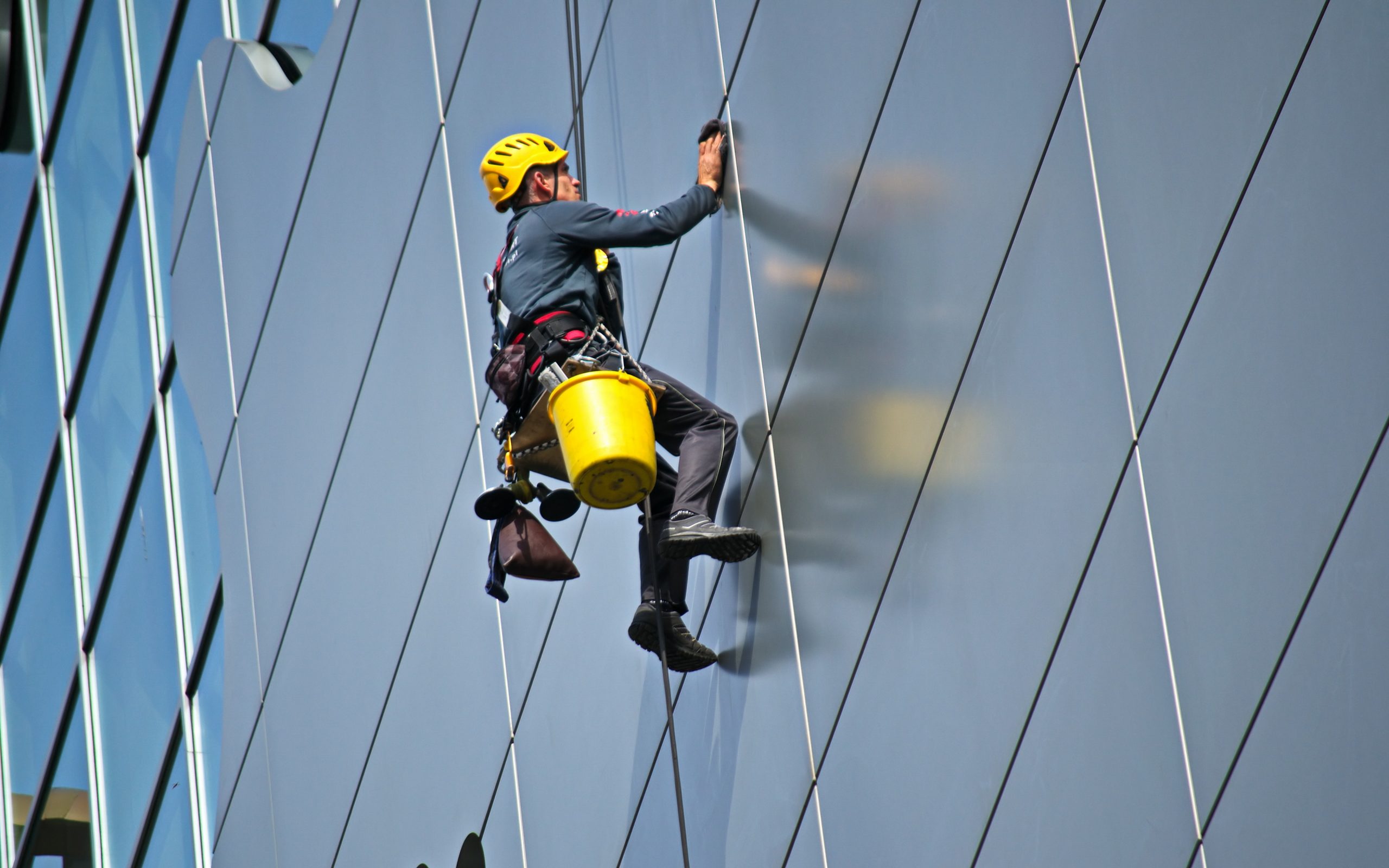
Being seen to take health and safety seriously by your staff brings you significant benefits. First, there is the cultural impact. You create a culture in which you clearly care about your employees, and an environment in which they can carry out their work effectively. This professional approach will play its part in recruiting and retaining high calibre workers.
Good health and safety will also help you operate more efficiently. According to the HSE, 31.2 million working days were lost last year due to work-related illness and injury. Reduce the lost days in your business and think of the management time saved and the avoided costs of covering for absent workers.
So investing a little in health and safety can deliver valuable returns through more effective employees and reduced absences. And that’s before you even consider savings in legal costs and compensation when things go badly wrong.
April Showers
April is a month notorious for its changeable weather, and in particular showery rain. This can pose extra risks for employees who work outside, and to the entrance areas of buildings.
For outside workers, the correct clothing and equipment for rain are essential. Slips and falls become much more likely. So footwear with non-slip rubber and thick grooves in the soles are a must, particularly for people working at height. Other waterproof clothing is important but ensure that vision and hearing aren’t compromised. Hand tools should be suitable for outdoor use and have non-slip handles.
And for those lucky enough to be working indoors when the heavens open, there is still a heightened risk to manage. Main entrances to buildings can become extra slippery. So good quality entrance matting is advisable. If you do not have permanent matting up to the task, you could store reinforcement matting for especially wet days along with slip hazard signage.
Need help conducting a wet weather risk assessment? Call The Health and Safety Dept.
Health and Safety Myth Busters

Myth: Packed lunches banned from being eaten in the playground
With the weather turning warmer, nothing could be more pleasant than eating your lunch in the gentle sunshine. One school outlawed their children from eating their packed lunches alfresco, citing health and safety as the reason. However, government regulations do not touch upon this. Therefore, the decision was part of an internal management policy and should have been presented as such.
Myth: Providing empty tester perfume bottles
Most of us like to smell nice, and for many this means buying an expensive fragrance. Or if we’re lucky, being given one as a present. Some of us even like to collect empty tester perfume bottles, apparently. But one unfortunate enthusiast was prohibited by a store assistant from taking away such perfume bottles for, you’ve guessed it, health and safety reasons. Could it be that they were made of glass? Or were somehow unhygienic? Who knows? But in fact there is no legitimate health and safety reason why these empty glass bottles couldn’t be given away. It turns out that this was simply an internal waste and recycling policy.
Myth: Ban the safety pins
Do you have fond memories of your local swimming pool? Perhaps the changing rooms are not held so dear. Soggy floors, cramped cubicles, and those fiddly safety pins used to attach the locker key to your swimming costume. Thankfully, these safety pins are becoming a thing of the past as wristbands and clips are now preferred. One swimming pool blamed the demise of the safety pin on health and safety. Again, aside from general common sense, the HSE are not concerned with safety pins, so it was simply a commercial decision that there are better ways of attaching a key to your person when entering a swimming pool.
If you have a good reason for introducing a policy that is unpopular, then why not just use it to explain the policy? If there is no good reason, then perhaps you should change the policy. But don’t blame it on “health and safety”.
2017 sees huge rise in health and safety enforcement fines
When the Health and Safety Executive (HSE) published its enforcement figures for 2017, they showed huge rises in fines. They were up 74% on the previous year to about £61 million. Significant custodial sentences were handed out, too. This follows the introduction in 2016 of harsher sentencing guidelines and penalties.
There were some stand-out cases. These included a £2.2 million fine for Wilko when a 20-year-old female worker was crushed under a cage full of paint tins and paralysed. Kentucky Fried Chicken was fined just under £1 million following two employees being severely burned. And Aldi was fined £1 million after a new employee damaged his foot while operating an electric pallet truck without the proper training.
Lengthy jail sentences were handed out to the directors of more than one company following the deaths of employees falling from height.
That should be more than enough to make business owners sit up and take notice. And it is not just the punishments meted out by the HSE which business owners should be concerned about.
Depending on the nature of the accident, there could be further financial cost from repairing damage to machinery and equipment, lost revenue if operations are shut down for any length of time, and the time and money spent in preparing for the court proceedings.
Then there’s the human cost to consider. There will often be physical or mental damage to the immediate victim. But bad feeling could permeate throughout your workforce if it is perceived that you do not take workers’ welfare seriously. This could lead to recruitment and retention problems.
Appropriate risk assessments are at the heart of good health and safety policy. These include learning from near misses at your own organisation, and from the mistakes of others. To ensure you are handling health and safety correctly, get in touch with The Health and Safety Dept for an initial consultation.
Safety Matters Q1 2018
Welcome to the Health & Safety Dept
Welcome to the first edition of our newsletter under our new Health & Safety Dept brand.
As part of the HR Dept’s commitment to you to be a one stop shop for everything to do with employment, we have developed the H & S Dept, to protect and support your business with all Health & Safety matters.
So, what services will we offer?
We can provide you with pragmatic and cost-effective solutions to all health & safety issues to ensure your legal compliance. These solutions include our advice line and legal expenses insurance, Toolbox Talks, COSHH compliance advice, safe systems of work, an online H&S compliance system, fire risk assessments, on-site audits, training, accident investigations, health & safety policy, risk assessments and more.
As qualified professionals in our field, we pride ourselves on our high-quality service and down-to-earth approach. Ultimately, we work with you to provide practical and cost-effective solutions to real issues that impact on your business.
We hope you enjoy this quarterly newsletter in which we will be sharing seasonal health & safety tips, bring you news of high profile health & safety court cases, and dispel health & safety myths. It will also be complemented by a regular blog.
If you would like guidance on any of your health & safety policies or have any questions, pick up the phone to The Health & Safety Dept – we’re here to help!
Latest HSE figures published
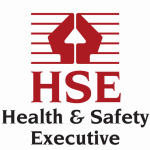
According to the latest figures, there were 1.3 million work-related ill health cases and 0.5 million cases of work-related stress, depression or anxiety. And whilst there were over 70,000 non-fatal injuries to employees, there were also sadly 137 cases of deadly injuries in 2016/2017.
The impacts of such incidents and cases of ill health are felt far and wide, not least by employers. The HSE estimates that 31.2 million working days were lost due to ill health and non-fatal workplace injuries. So aside from the human cost, there is a huge financial impact on corporate Britain. This can often be felt hardest by small and medium-sized businesses.
These figures hammer home the message that it really pays to take health & safety seriously and mitigate the risks to your workforce. If you need help writing your health & safety policy, or modifying or updating your existing one, contact The Health & Safety Dept for advice.
Health and Safety Myth Busters
Health & safety has a mixed reputation. And whilst some may think it focuses overzealously on irrelevant policies, sometimes it is incorrectly used as an excuse by employers to introduce unpopular rules.

Many of us need a coffee (or seven) when we first get into the office in the morning. Yet one employer banned the presence of a kettle or microwave in the workplace – again, no health & safety policy forbids the use of these, let’s face it, rather essential office appliances. There is no ban from HSE on these in the workplace, and hopefully never will be. This shows that it was clearly a commercial decision dressed up as a health & safety issue to prevent the employer receiving the blame.
Myth: Flip-flops are against the law
Some companies state that flip-flops are not allowed in the workplace because of rules that are out of their hands. Whilst slips, trips and falls do account for 30% of all workplace incidents, there is no health & safety rule imposed in place to prevent this sort of footwear being worn in an office. Any company doing so is imposing this rule at their own discretion rather than it being a legal requirement – although such a rule might well apply in jobs that require safety apparel, such as in construction.
When it comes down to it, if you would like to ban something in the workplace, it’s best to be up front with it rather than blame it on health & safety. If trivial rules are blamed on health & safety, then the real health & safety rules won’t be taken seriously.
To get the balance right on health & safety, it’s good to check with a professional. Contact The Health & Safety Dept for advice.
Winter workplace health & safety

Whilst there is no maximum temperature, the Workplace (Health, Safety and Welfare) Regulations 1992 states there must be a minimum temperature of 16 degrees Celsius if your employees work inside.
If their work requires them to do much physical activity, 13 degrees Celsius is the minimum. You can make sure your heating system remains compliant by having it serviced or upgraded if it is not reaching the appropriate temperature.
If you have employees who drive for work, such as goods vehicle drivers, couriers, service engineers or other itinerant tradesmen, it is important to make sure the appropriate precautions are taken. Ensure their vehicle is properly serviced and equipped for the weather conditions and they have a road safety kit if they happen to break down. A risk assessment might also identify the need for an advanced winter driving course to ensure the drivers have all the skills and training they need to do their job safely.
Slips and falls can happen all year-round – and ice and snow boost the risk of these happening to employees. To help prevent such incidents occurring, you should prevent ice forming on walkways and paths by gritting them, and placing suitable entrance matting in doorways to your building so people can wipe their feet properly.
As an employer, you are responsible for controlling hazards that your employees and other people are exposed to in the workplace – and it is important to be extra careful at this time of year. For advice on ensuring you are not breaching health & safety regulations this winter, contact The Health & Safety Dept.
Risk assessments: Do you need one?
Risk assessments are required by law. All businesses with five or more employees, including the managing director, must ensure they have appropriately documented risk assessments in place – and it is the employer’s legal responsibility to have them.
A risk assessment is part of the risk management process. It identifies what hazards currently exist or may be foreseen in the workplace and how effective the precautions are. Risks need to be considered in all areas of the working environment – including potential hazards such as the use of electricity and fire, cleaning with chemical substances, maintenance work, working hours, shift patterns and stress, and any other factors that may be reasonably anticipated as a hazard.
Whether you are conducting a risk assessment for the first time or want to have your current one reviewed, we can help. For advice and guidance on this important legal requirement, contact The Health & Safety Dept.
Safety Matters: Summer 2017
Farmers account for the most work-related deaths in Ireland
Almost half of work related deaths in Ireland have been caused by the agricultural industry – making it the sector with the highest fatality rate.
The figures showed that those who were self-employed had the highest rate of fatal accidents.
This highlights again the importance of assessing all risk faced by employees and how to work safely in that environment.
Although the decline was 20% less than the year before the HSA has urged businesses small and large to ensure that Health and Safety is a priority for businesses.
The HSA has been implementing and monitoring specific industries that are high risk such as farming, fishing and construction sectors and implementing awareness campaigns to raise awareness of the lack of health and safety in those industries. On the positive side, businesses have been taking part in educational training courses which is instrumental in reducing the fatality rate of these risky industries.
Health & Safety Myth
Health and Safety Regulations now ban the use of ladders.
This is a story that appears frequently. There is no ban on ladders if they are used safely. There are regulations to ensure that people do use ladders safely to reduce the numbers of workers seriously injured or killed falling off ladders every year.
There is no ban on ladders as long as they are secured and used appropriately.
Construction Safety Week
The Construction Safety Partnership Advisory Committee has proposed Construction Safety Week on the 23rd – 27th October. The vision is to highlight the importance of being committed to following health and safety procedures every day, reduce the number of accidents on construction sites in Ireland and inspiring all to share best practices to strengthen the culture of health and safety within businesses. The aim of this week is to promote work safety together and celebrate the progression of health and safety in the workplace to date.
Safety Alert for Hot Drums
Following a serious incident that involved the explosion of an empty metal drum, the HSA have issued a safety alert in regards to employees carrying out ‘Hot Work’ in the workplace. An employee was fatally injured whilst carrying out ‘Hot Work’ on an empty metal drum which exploded due to the waste residue contained within it. ‘Hot Work’ is a process where there can be an ignition source or hazard of flammable material.
A risk assessment should be carried out before ‘Hot Work’ is carried out and alternative options should be considered or risks avoided by using specialist companies or methods. For all your Health and Safety queries contact your local HR Dept today.
Safety Matters – Spring 2017
A case at Wilko

This case emphasises, once again, that the Health and Safety Executive (HSE) are fining employers higher amounts than ever before. It also highlights the importance of assessing all risks faced by employees, and training employees on how to work safely.
Since the new sentencing guidelines in February 2016, there have been more fines of over £1 million than there were since the introduction of the Health and Safety at Work Act in 1974. Therefore, it is more important than ever that employers do everything correctly.
PAT Testing: Do you need to do it?

Many employers believe they need to PAT test annually. However, for many employers, this simply is not true. There is no legal requirement for appliances to be PAT tested at all – but this does not mean you should stop testing them altogether!
PAT testing is the most effective way to demonstrate that you have had your electrical appliances inspected and tested to ensure they are safe. We always recommend employers complete this to reduce the risks associated with faulty electrical equipment.
We also advise that most office equipment is tested every two years; although this is down to your risk assessments and the type of equipment you have.
Please do feel free to send in any other health and safety ‘myths’ for us to dispel or confirm!
Legislative changes
The HSE are in the process of reviewing legislation relating to the examination and inspection of work equipment. This means we can expect a few changes to legislation later in 2017.
The regulations being reviewed are:
– The Lifting Operations and Lifting Equipment Regulations 1998 (LOLER)
– The Provision and Use of Work Equipment Regulations 1998 (PUWER)
– Pressure System Safety Regulations 2000
– Work at Height Regulations 2005
We will ensure that we keep you posted with regards to any changes. Watch this space!
Safety solutions that grow with you
Get in Touch
Subscribe to our newsletter
Office Address: The Health & Safety Dept, First Floor, 3 Brook Office Park, Emersons Green, Bristol, BS16 7FL | VAT Number: 900674738 | Registration Number: 06316590
Copyright © 2007 – 2023 The H&S Dept Ltd. H&S DEPT is a registered trademark belonging to The H&S Dept Limited.








